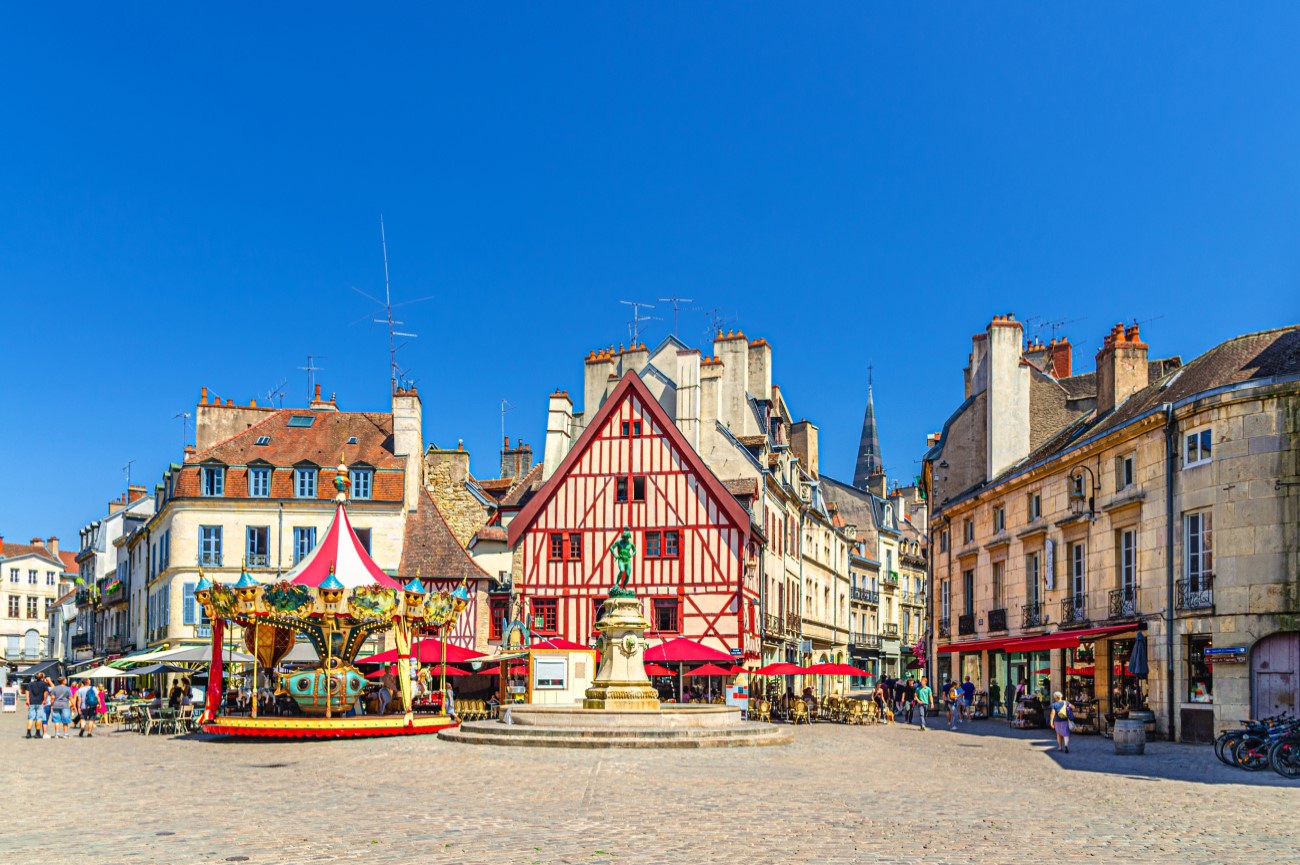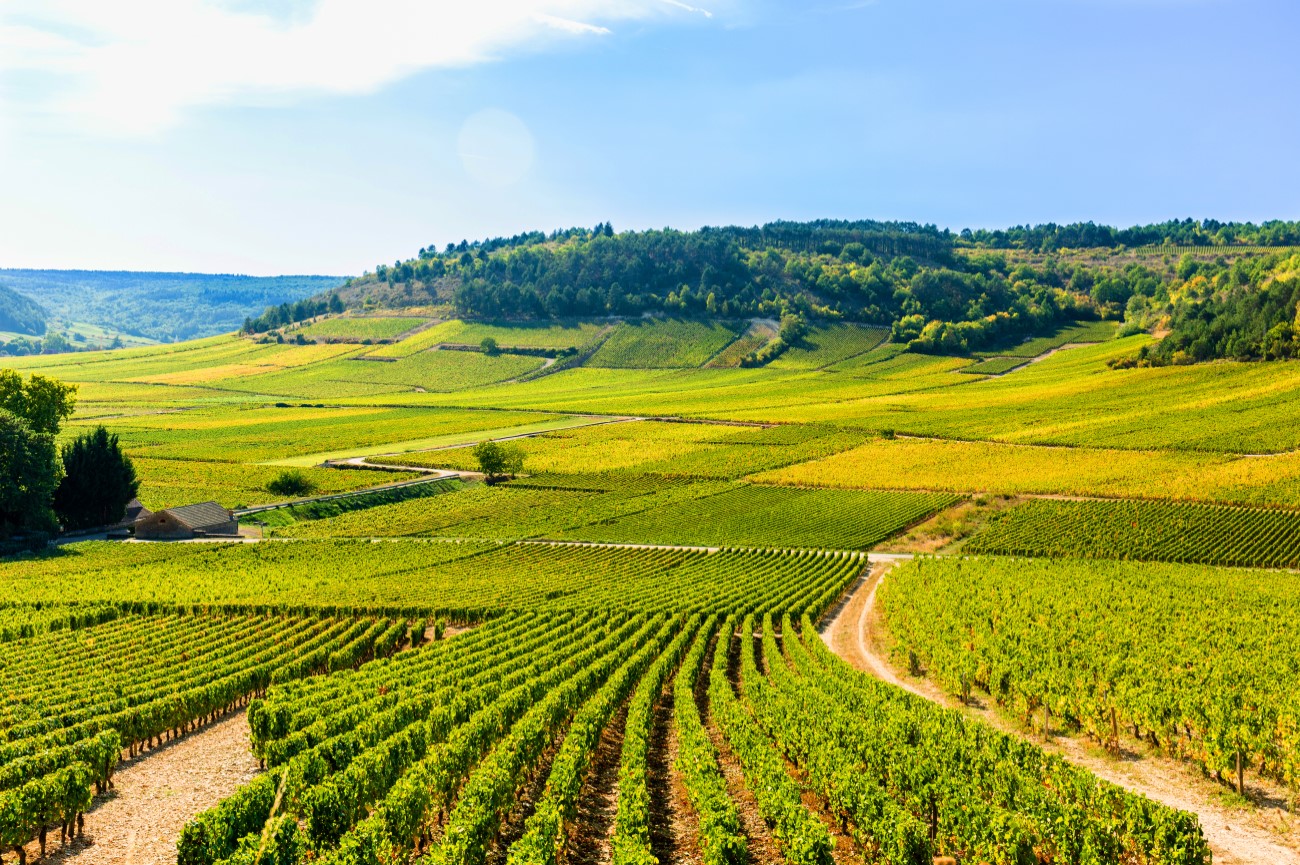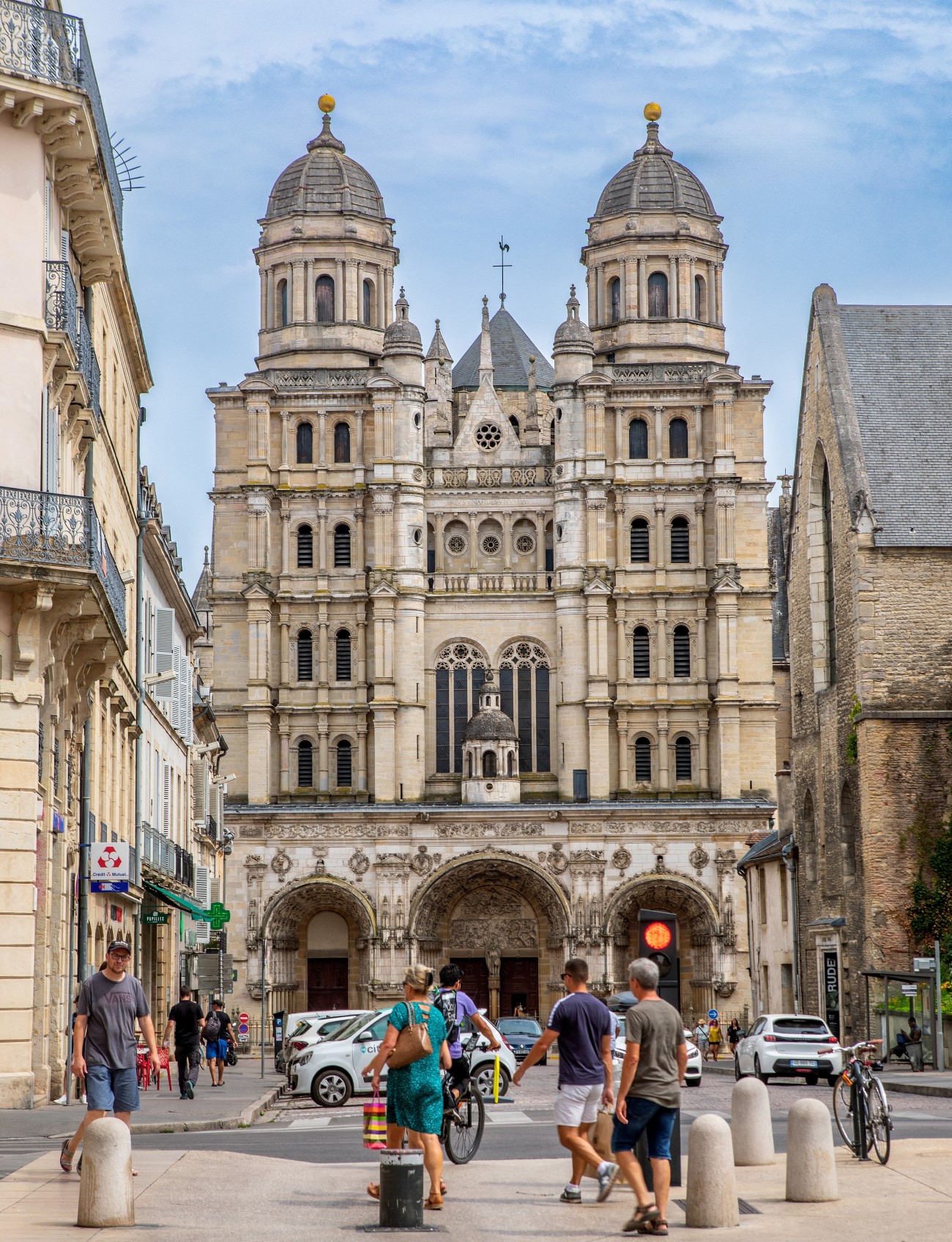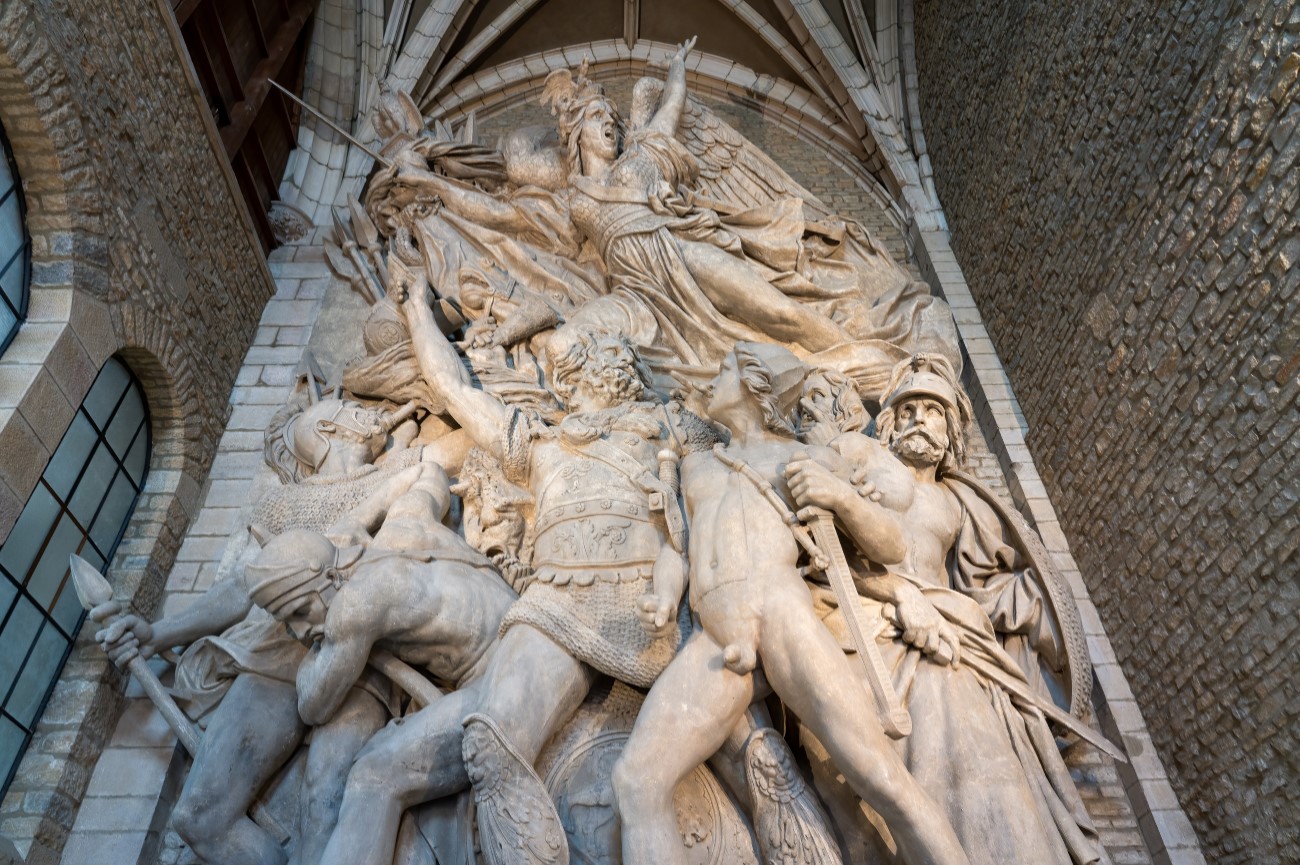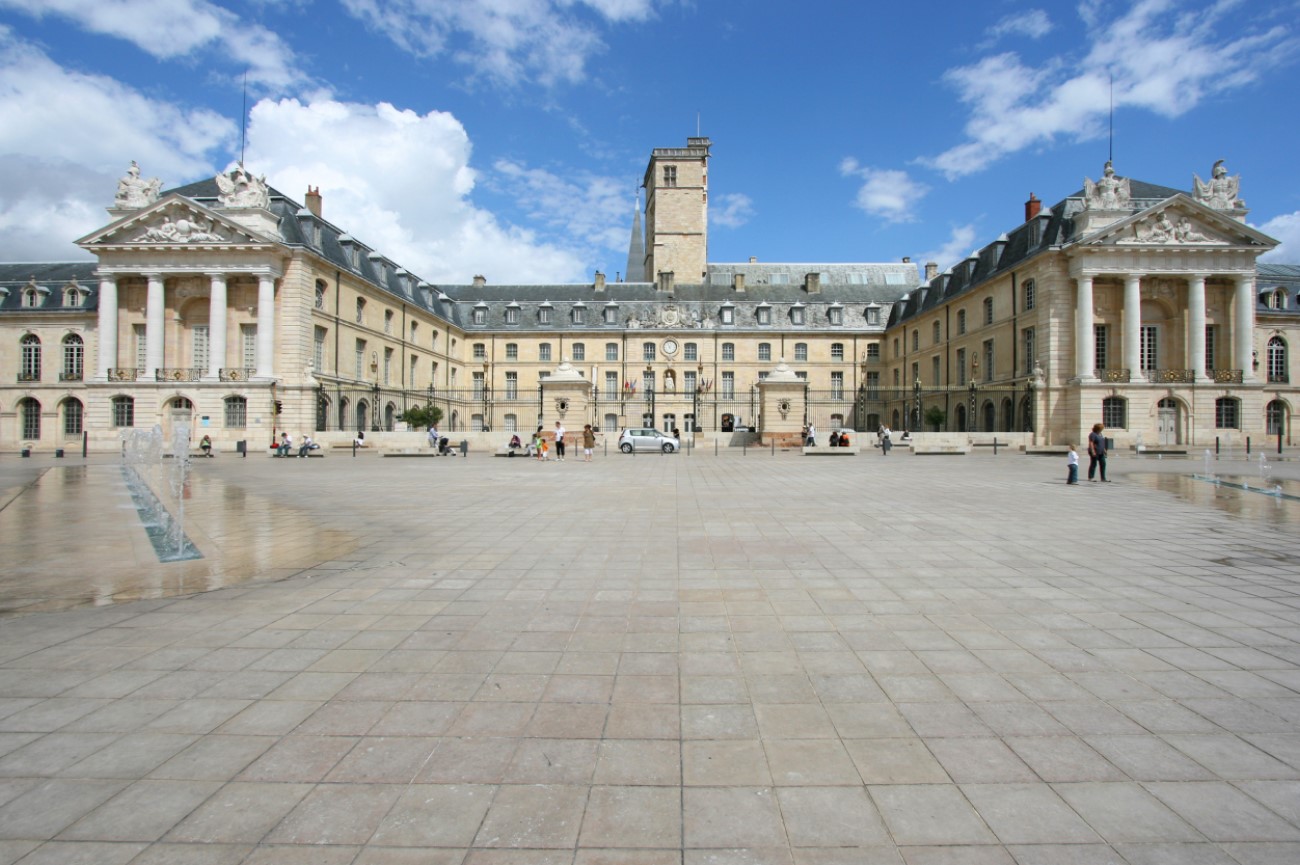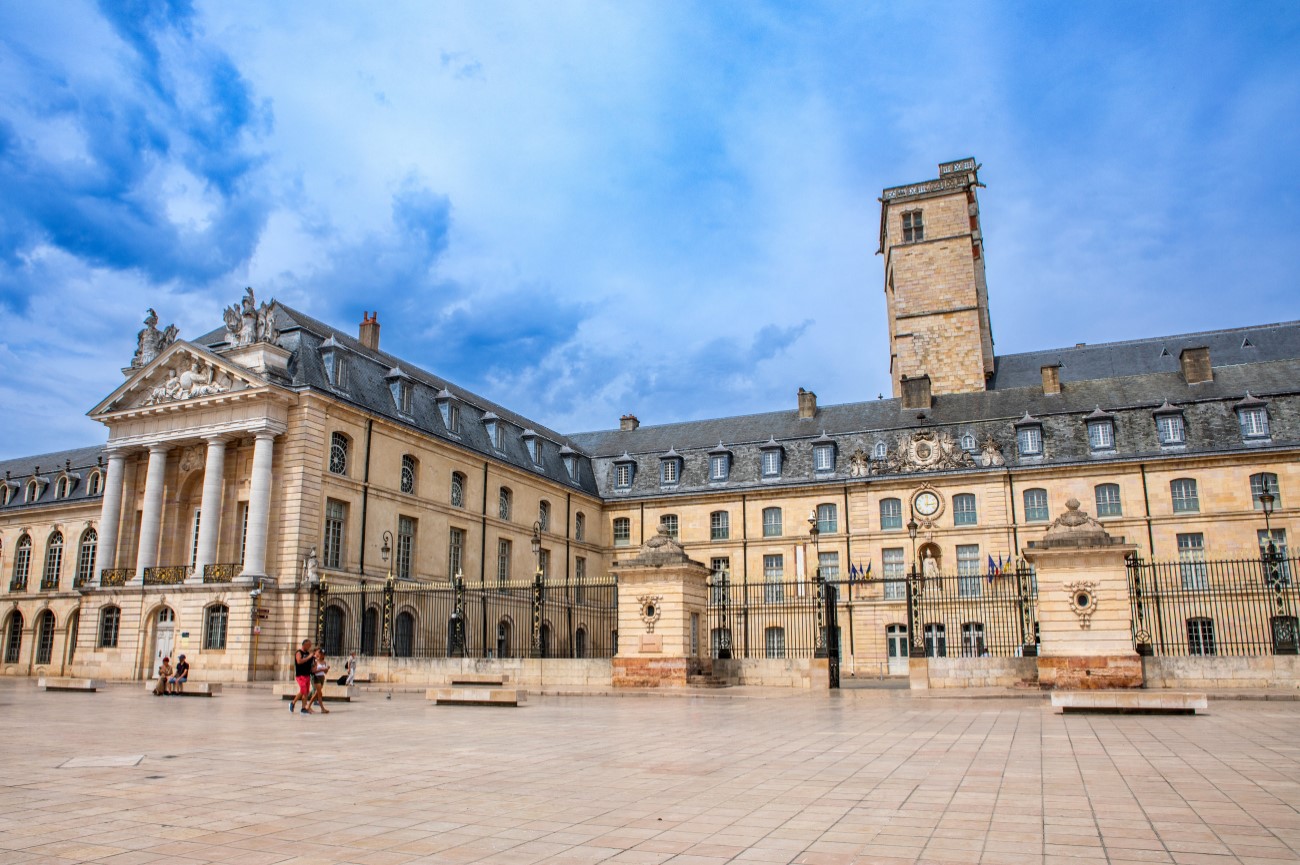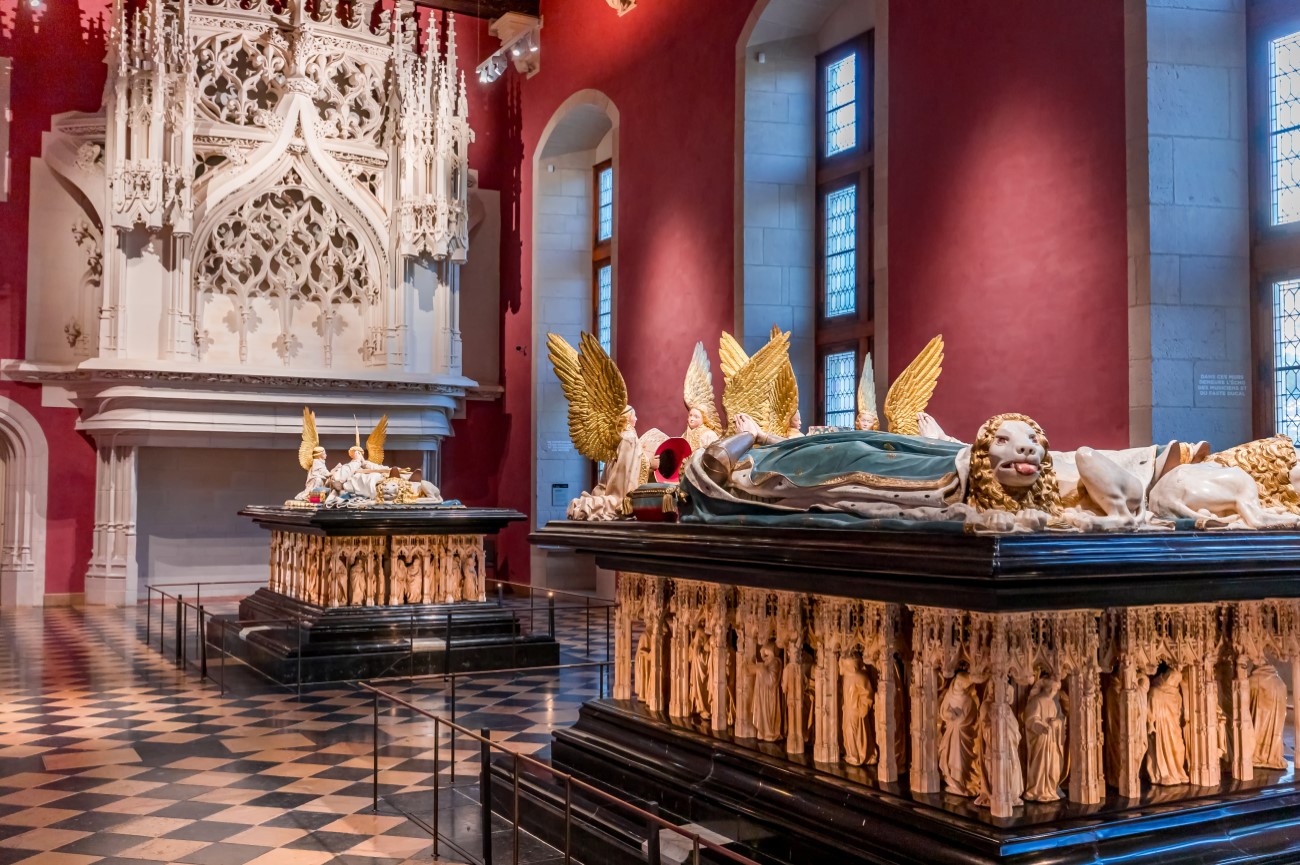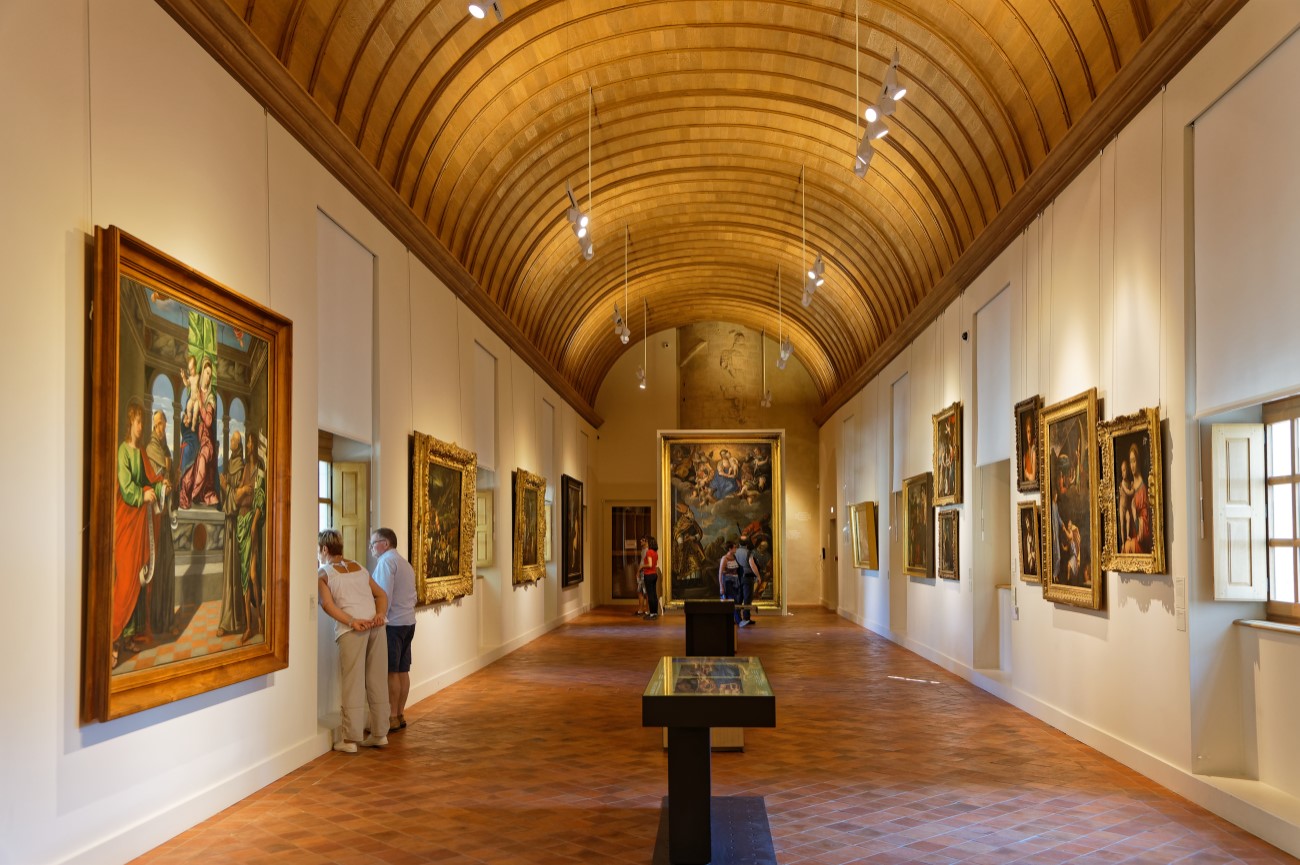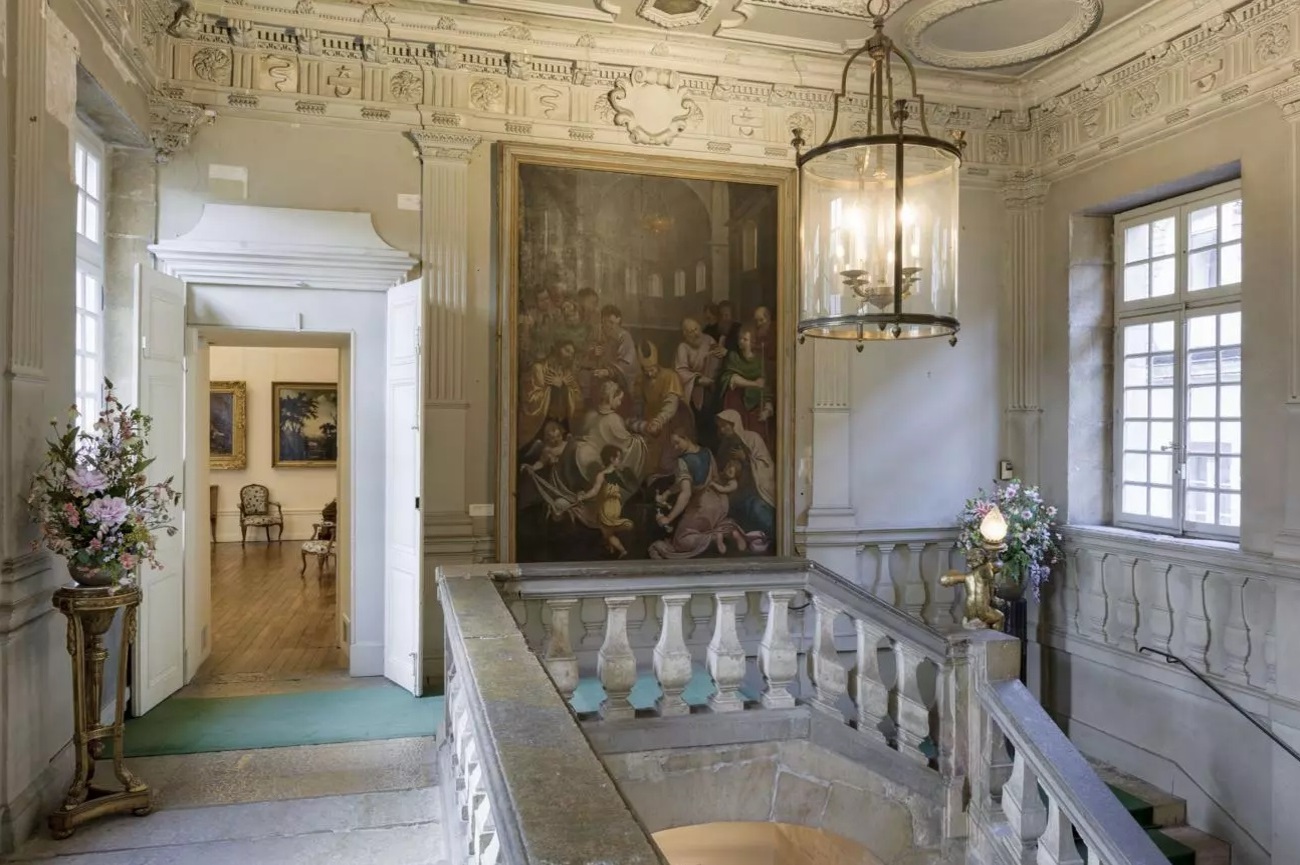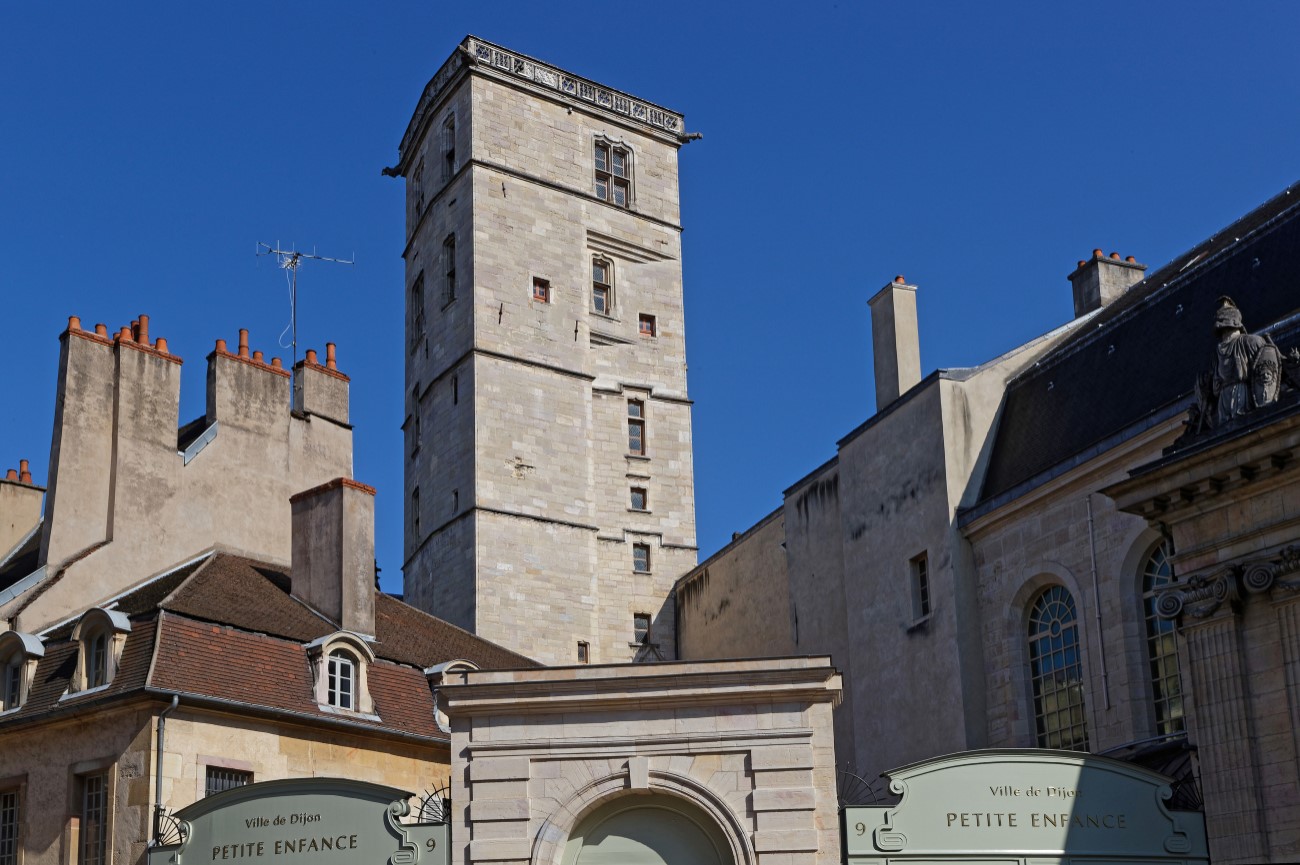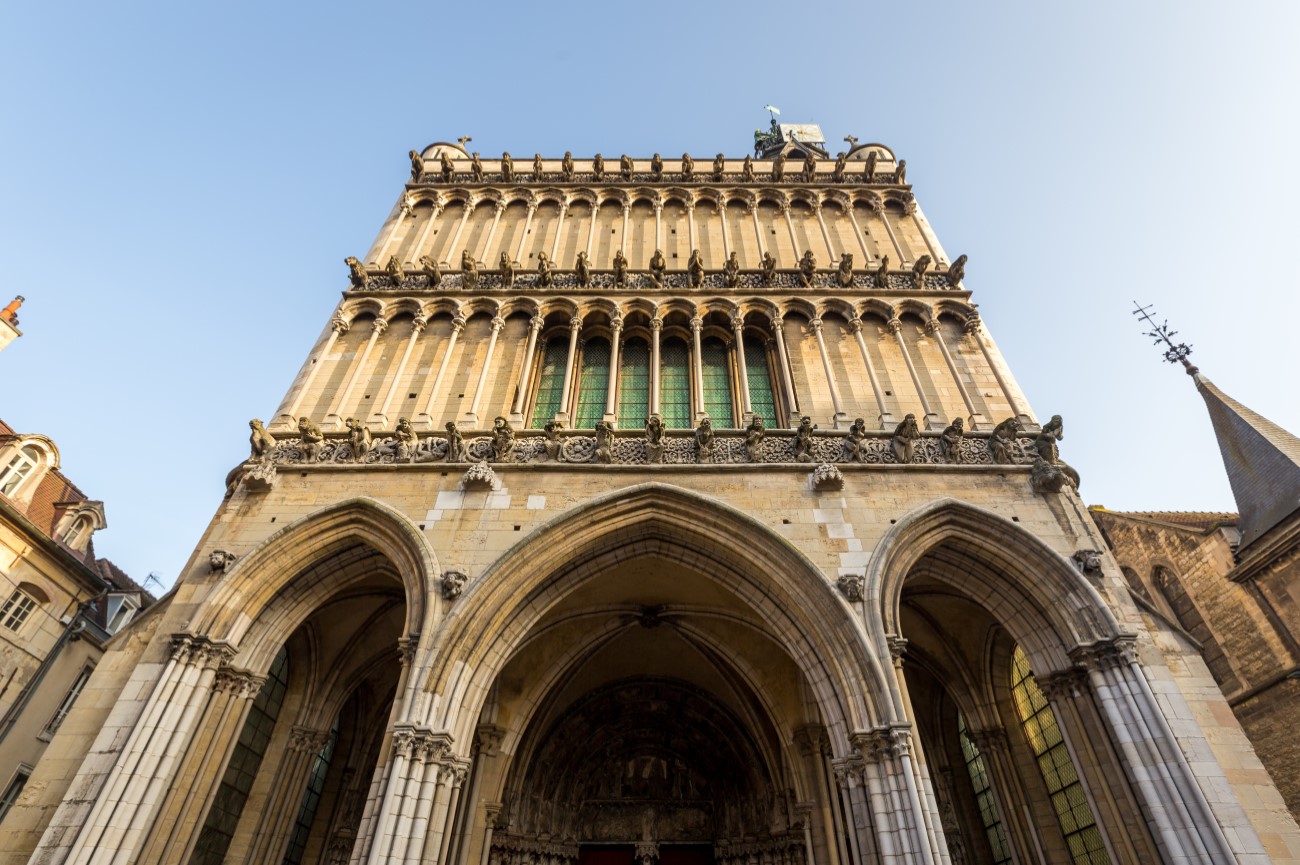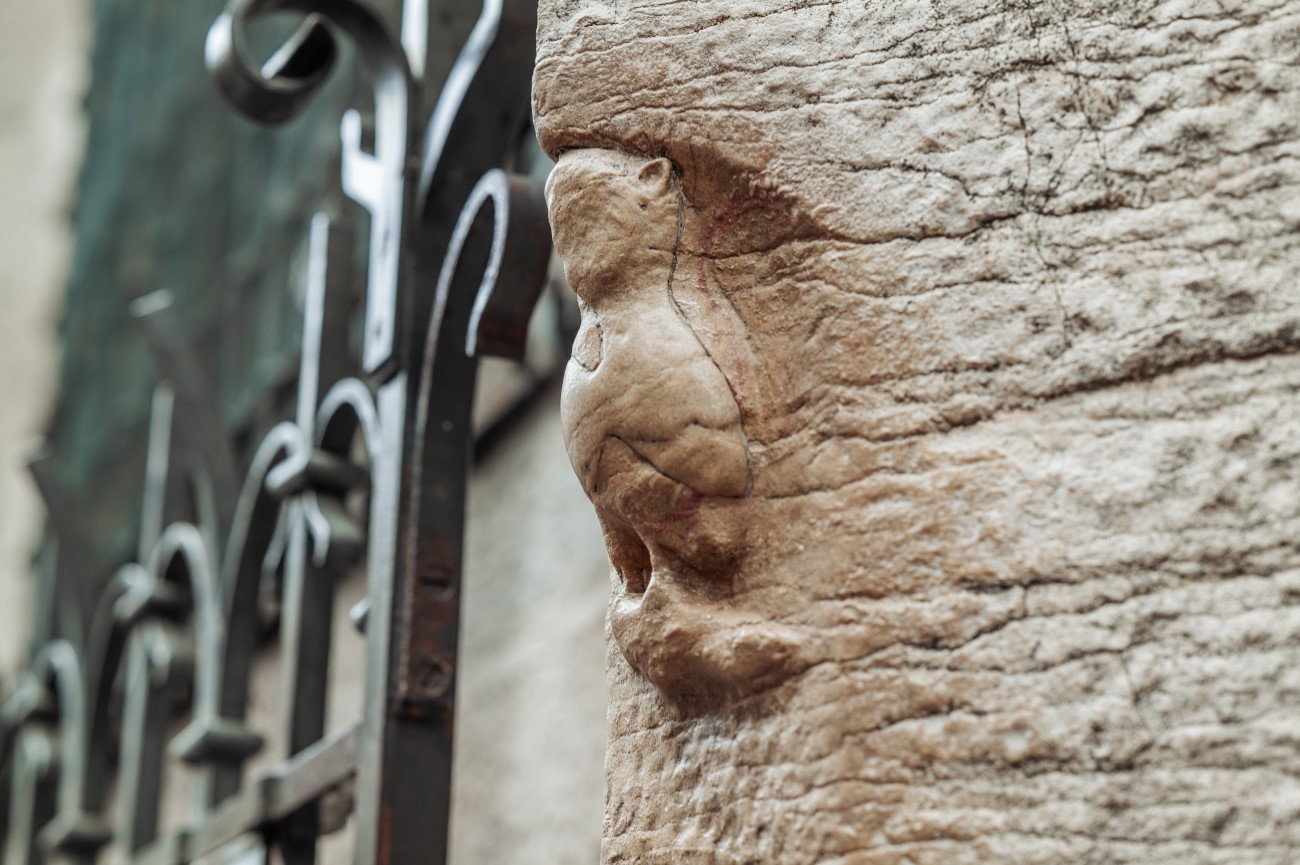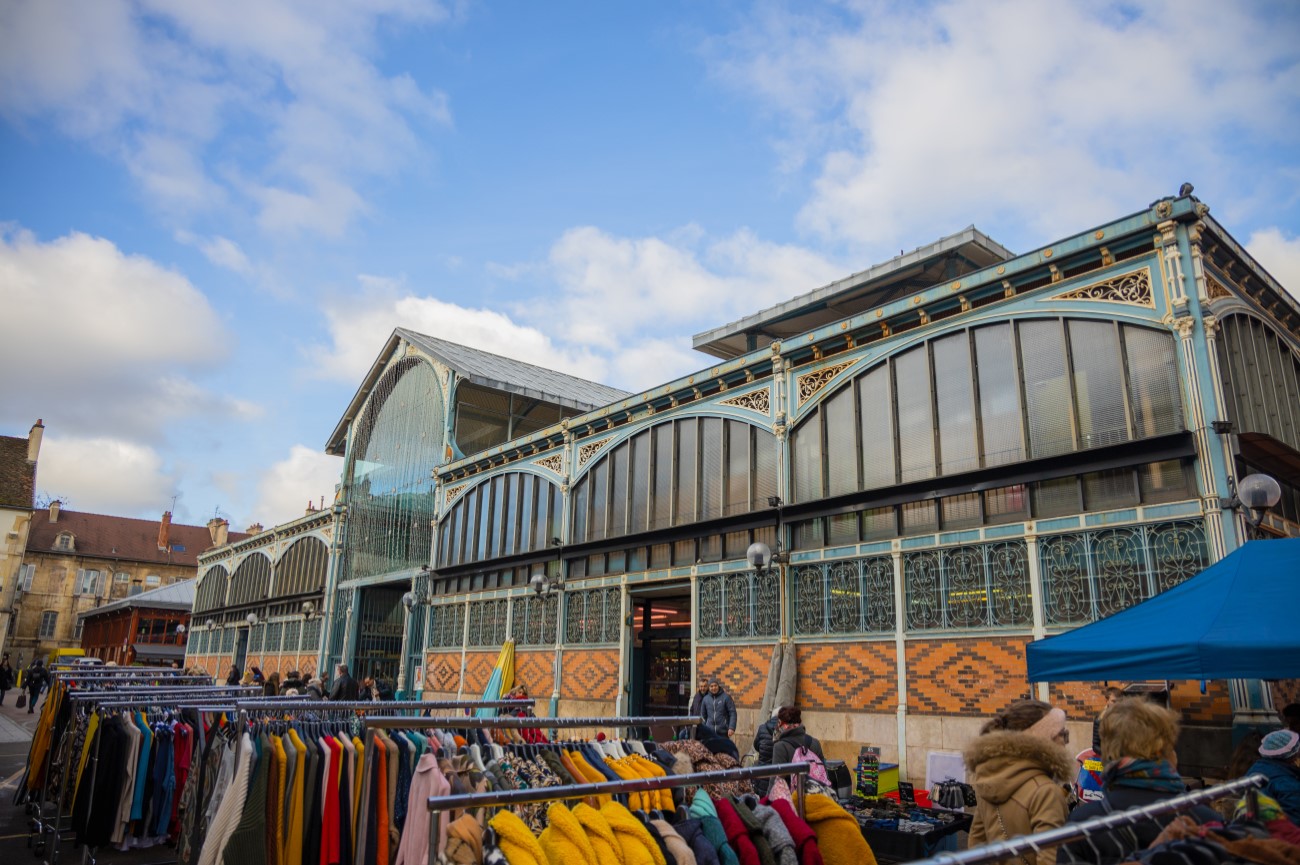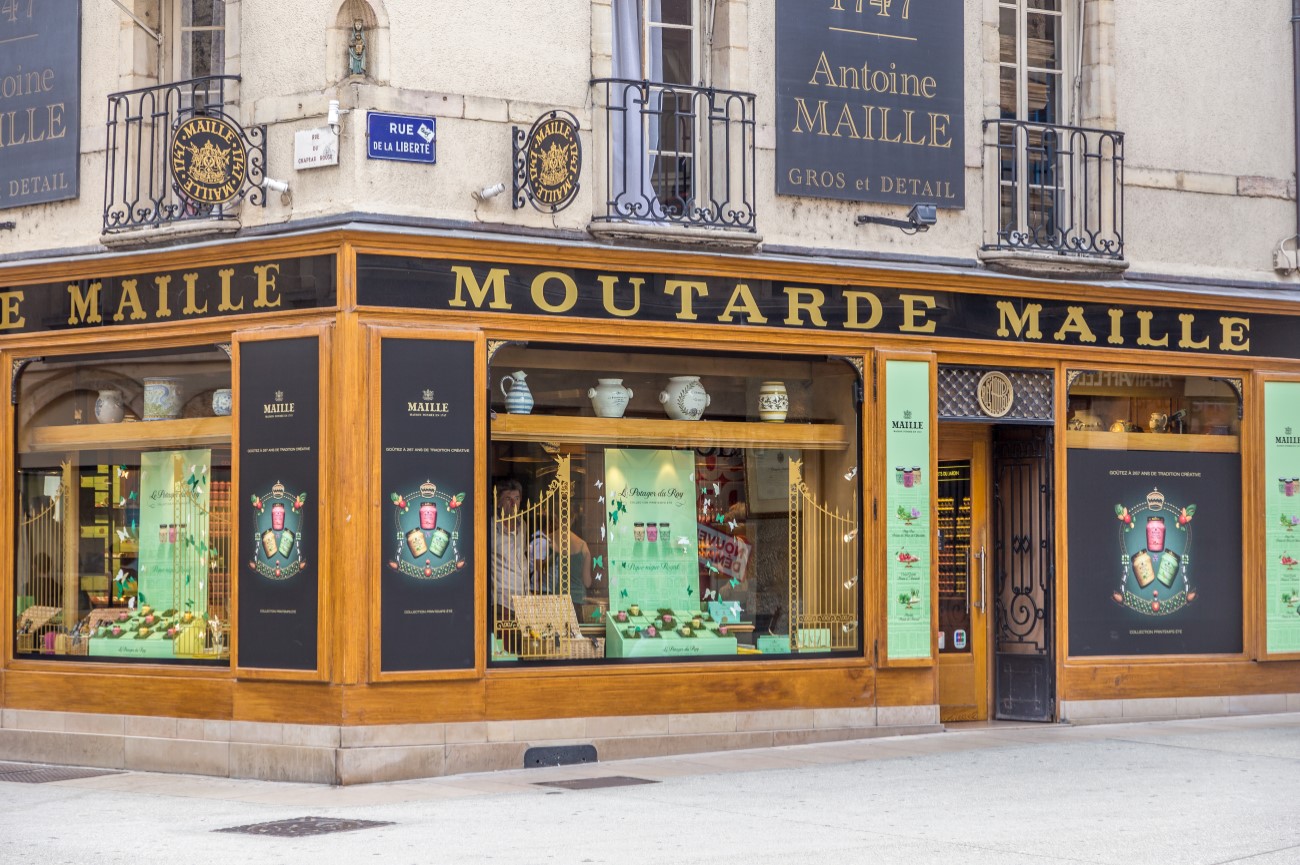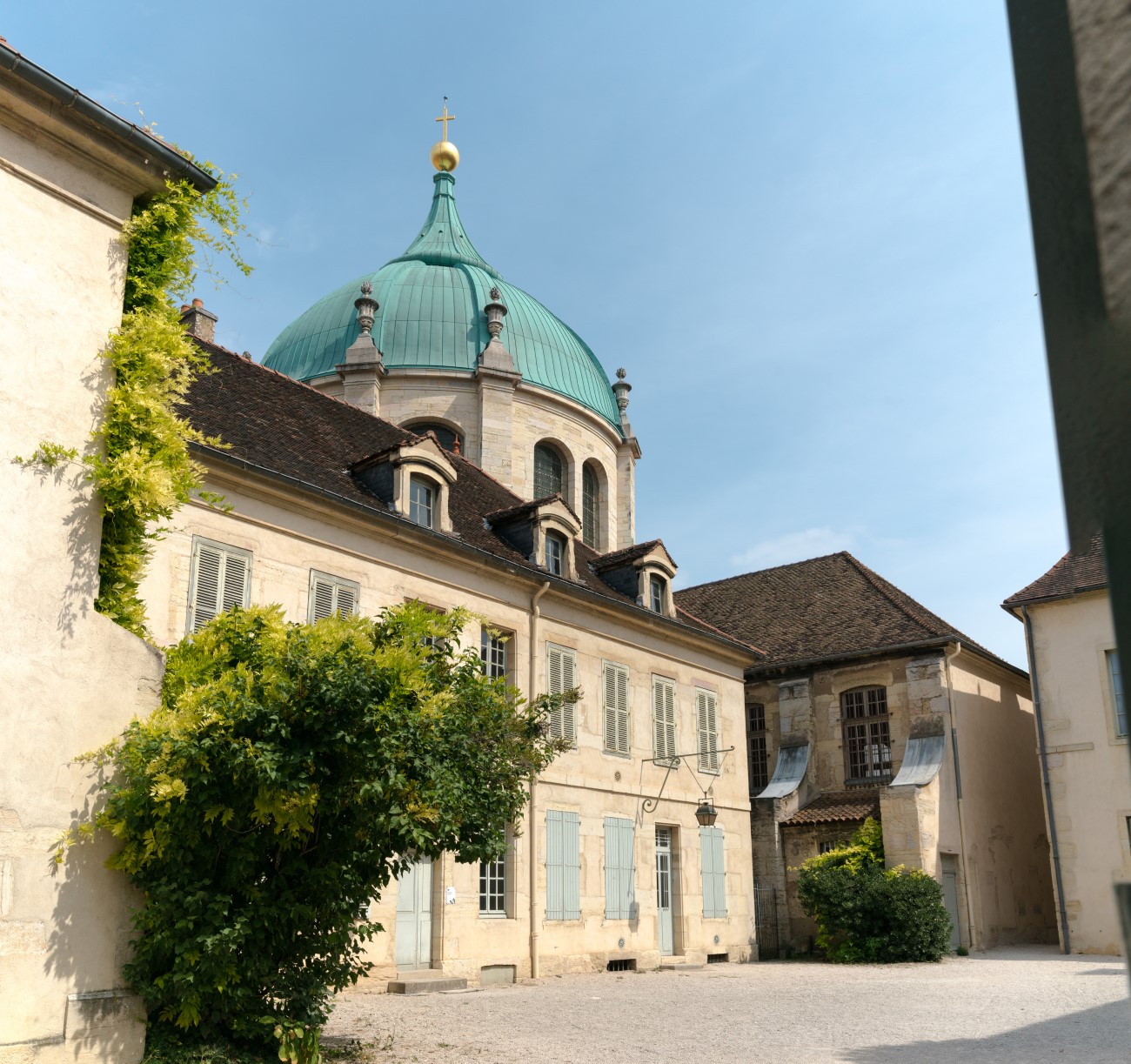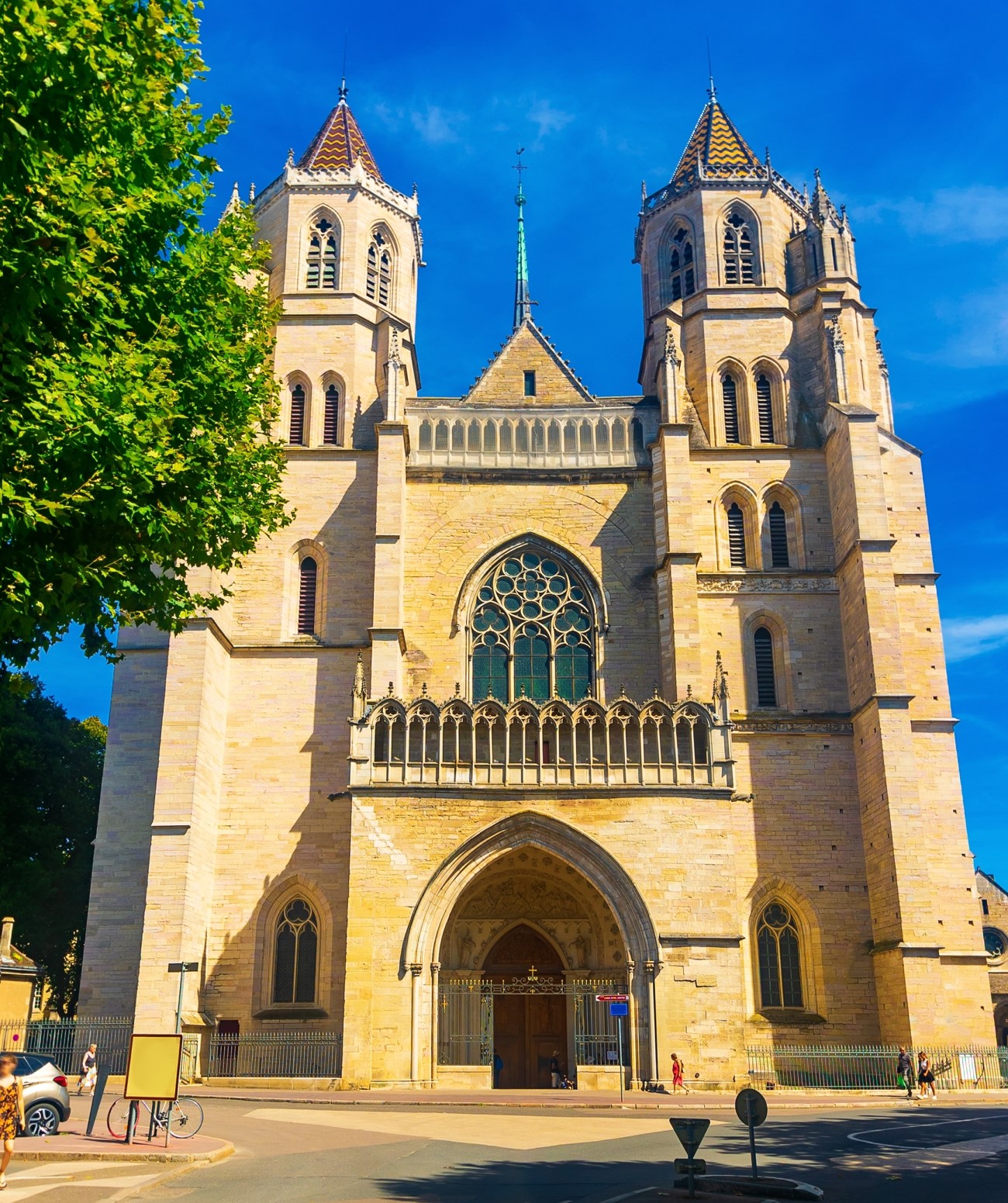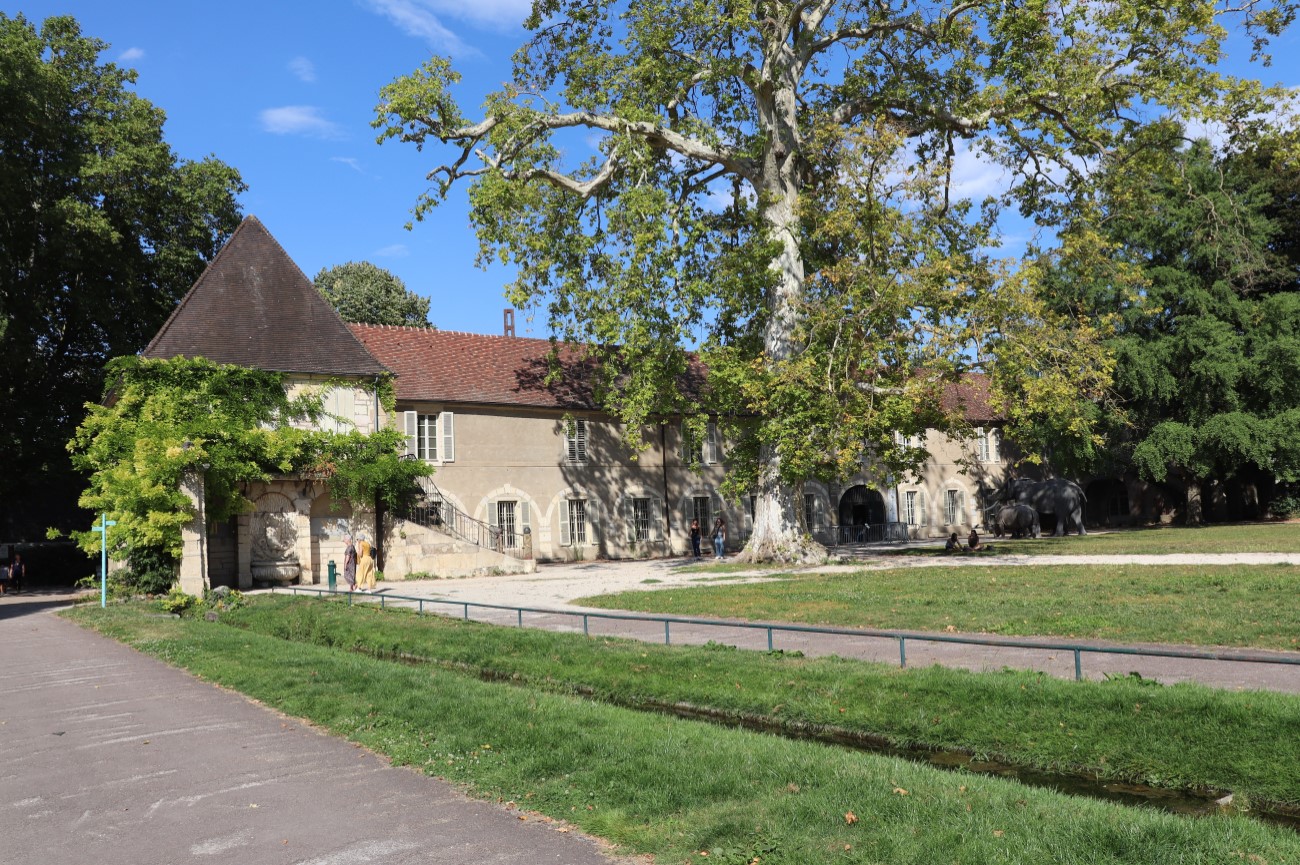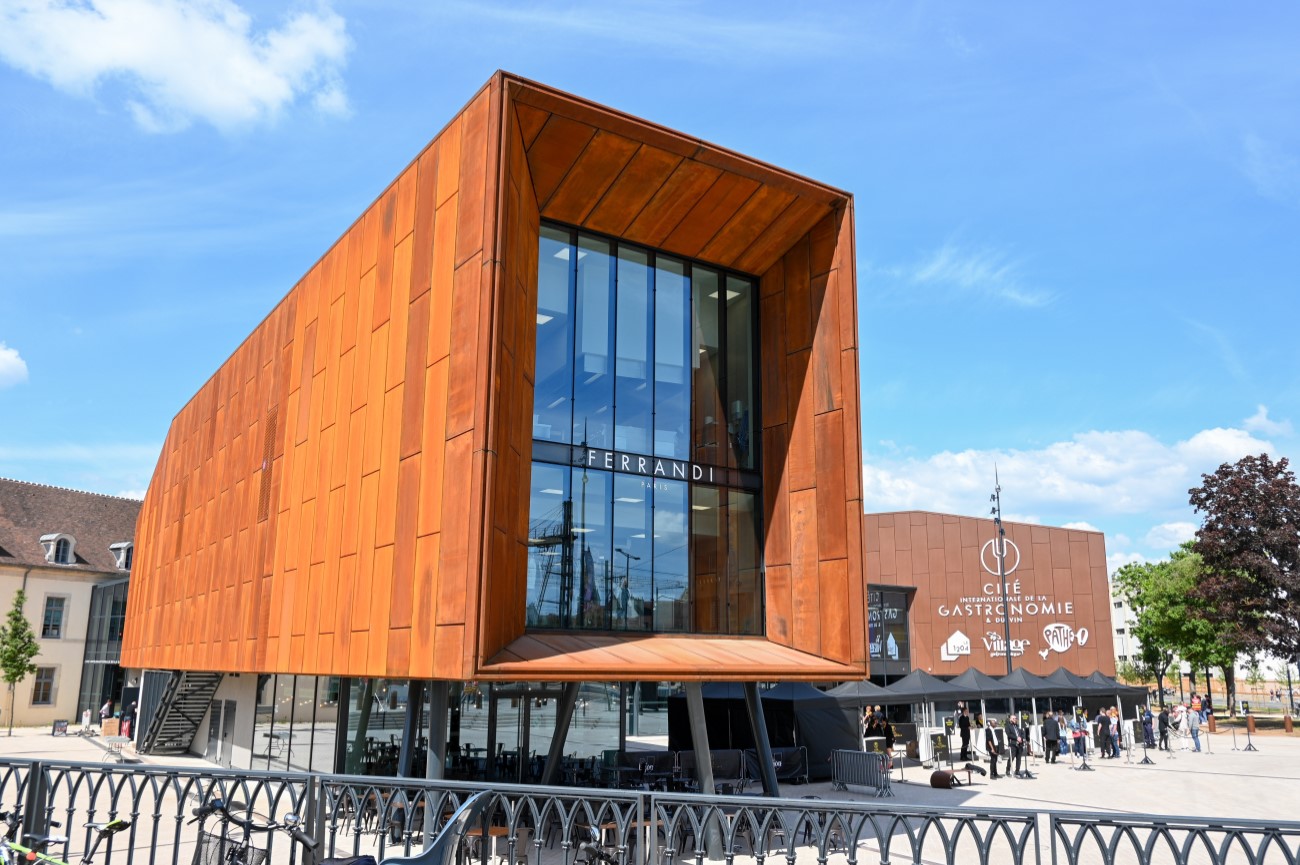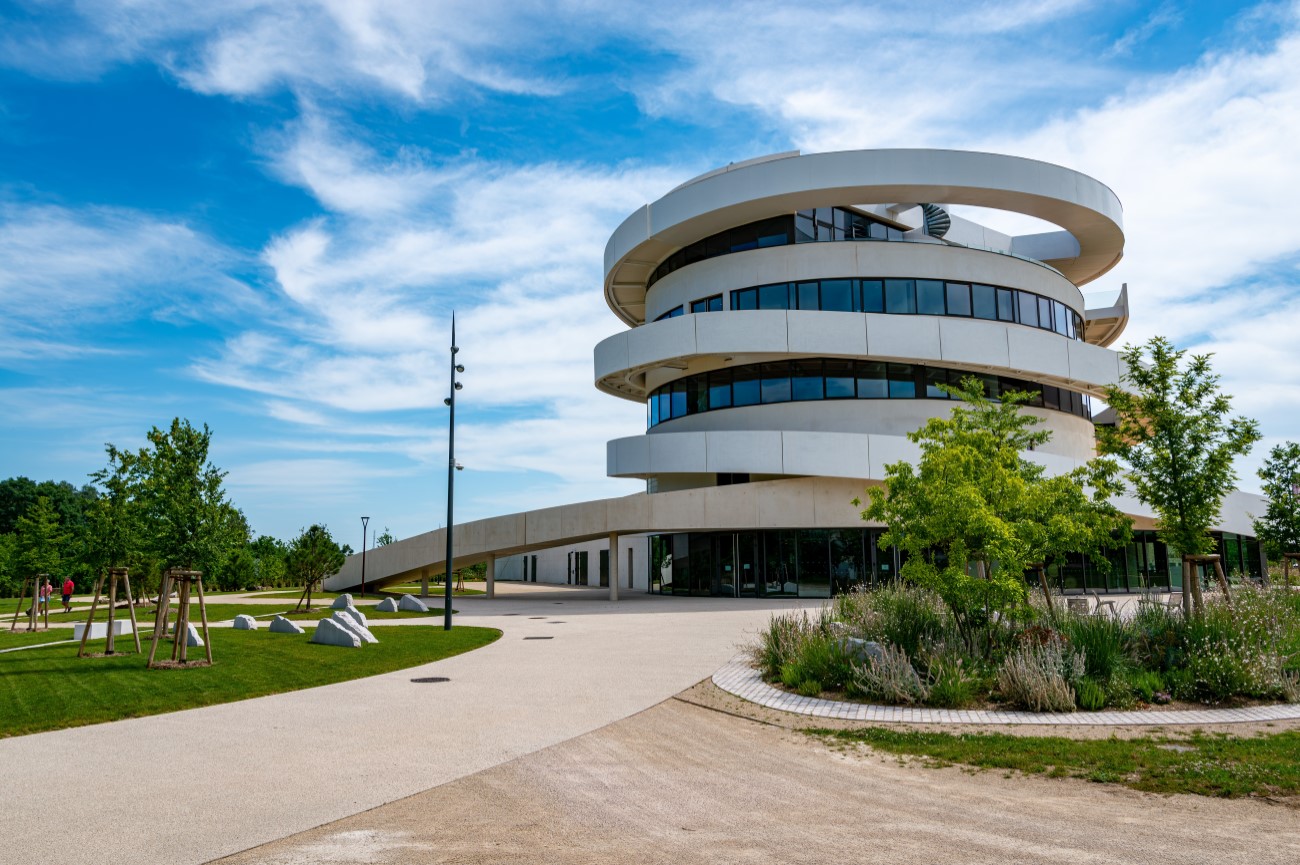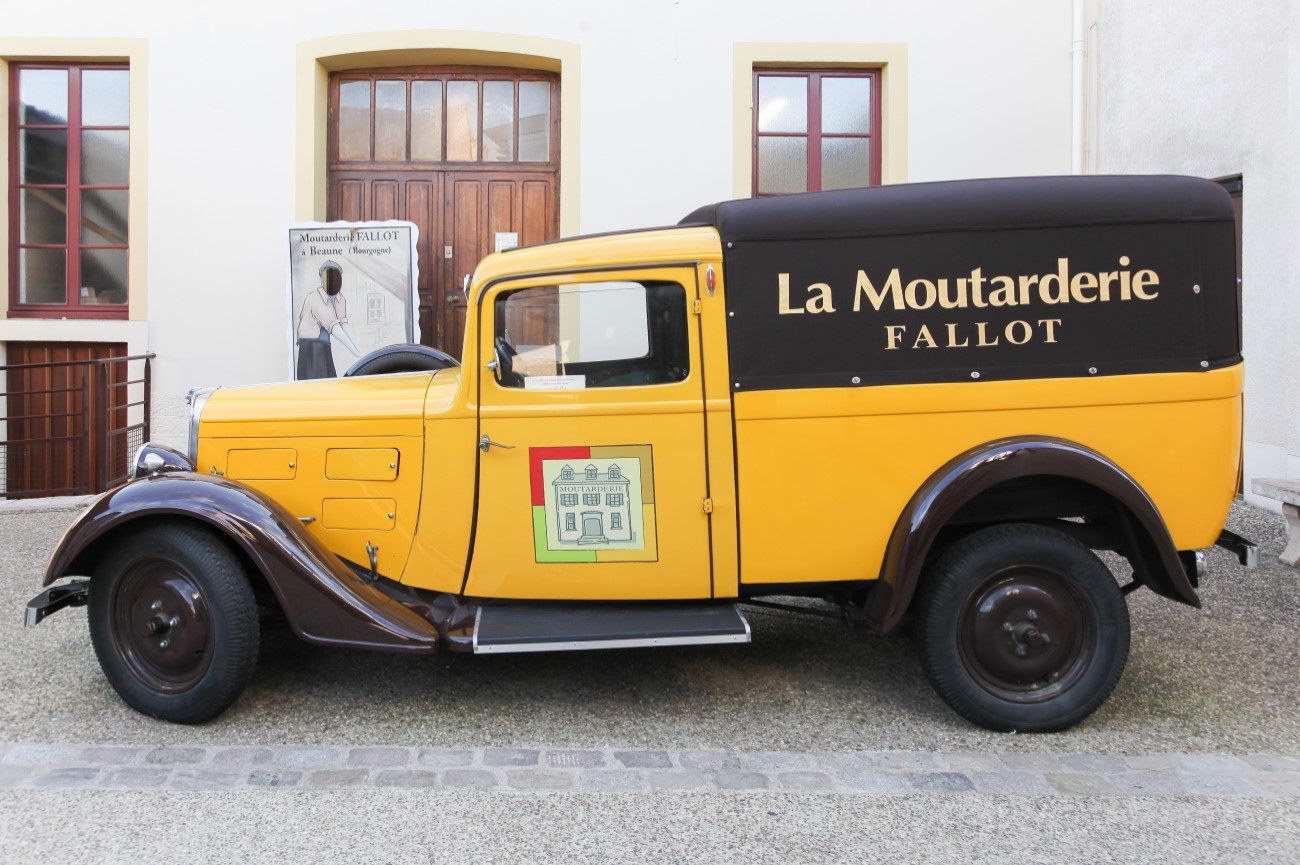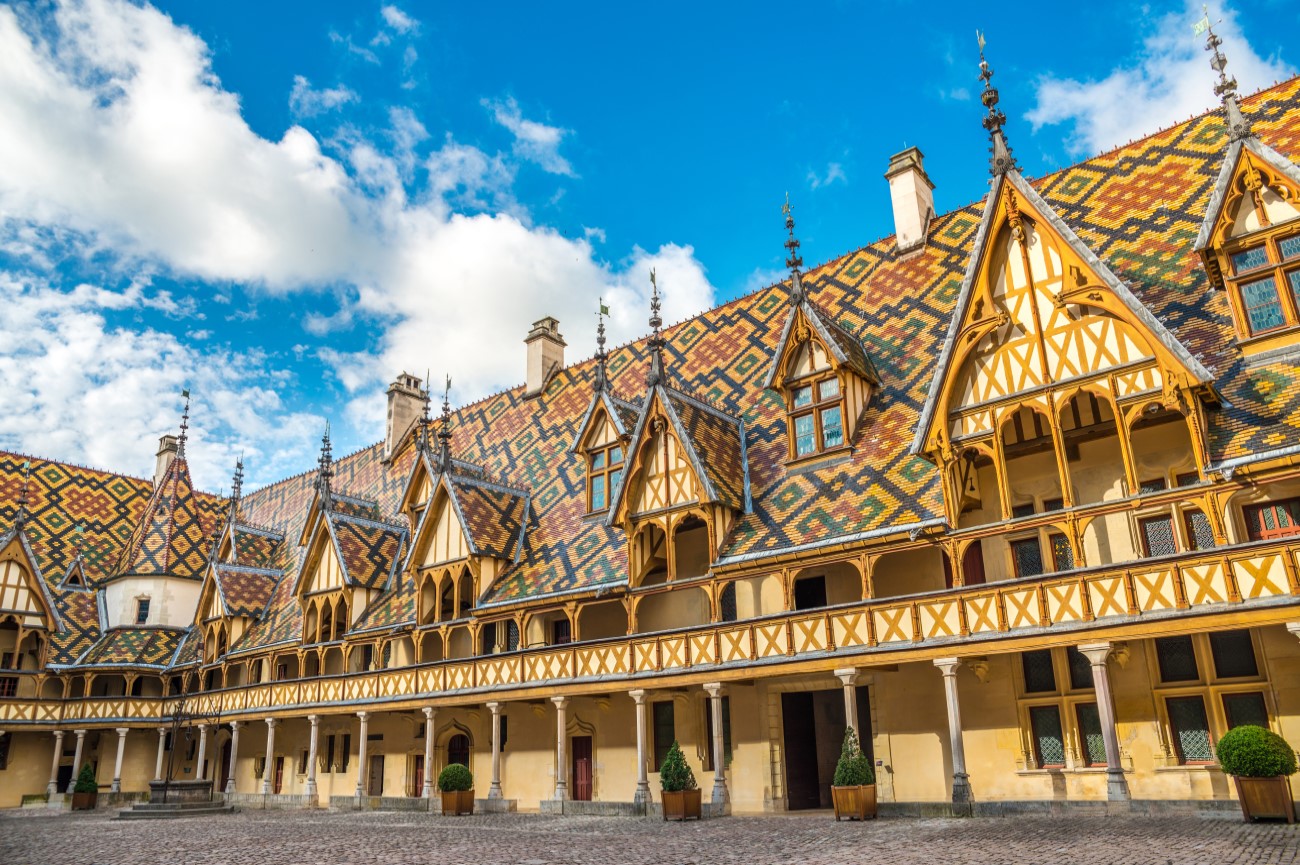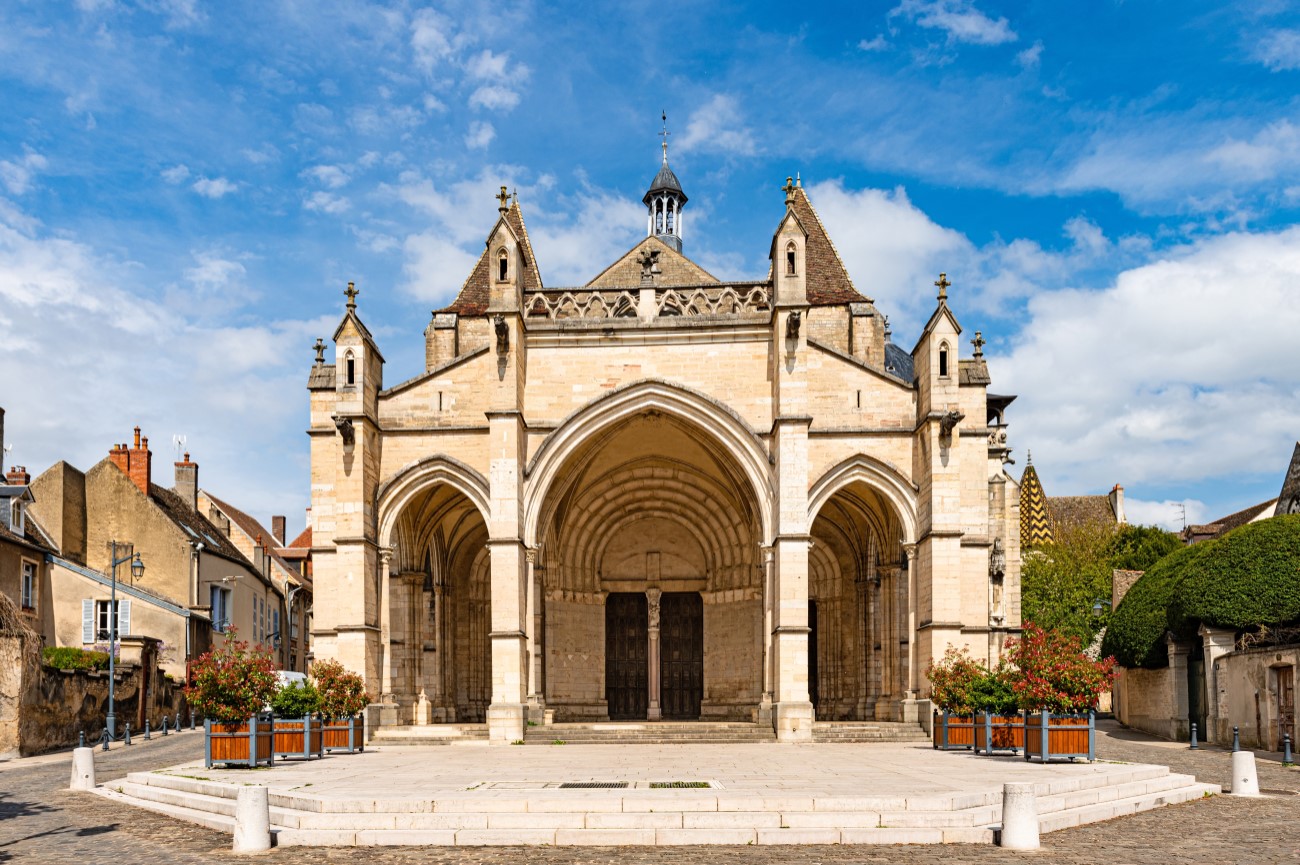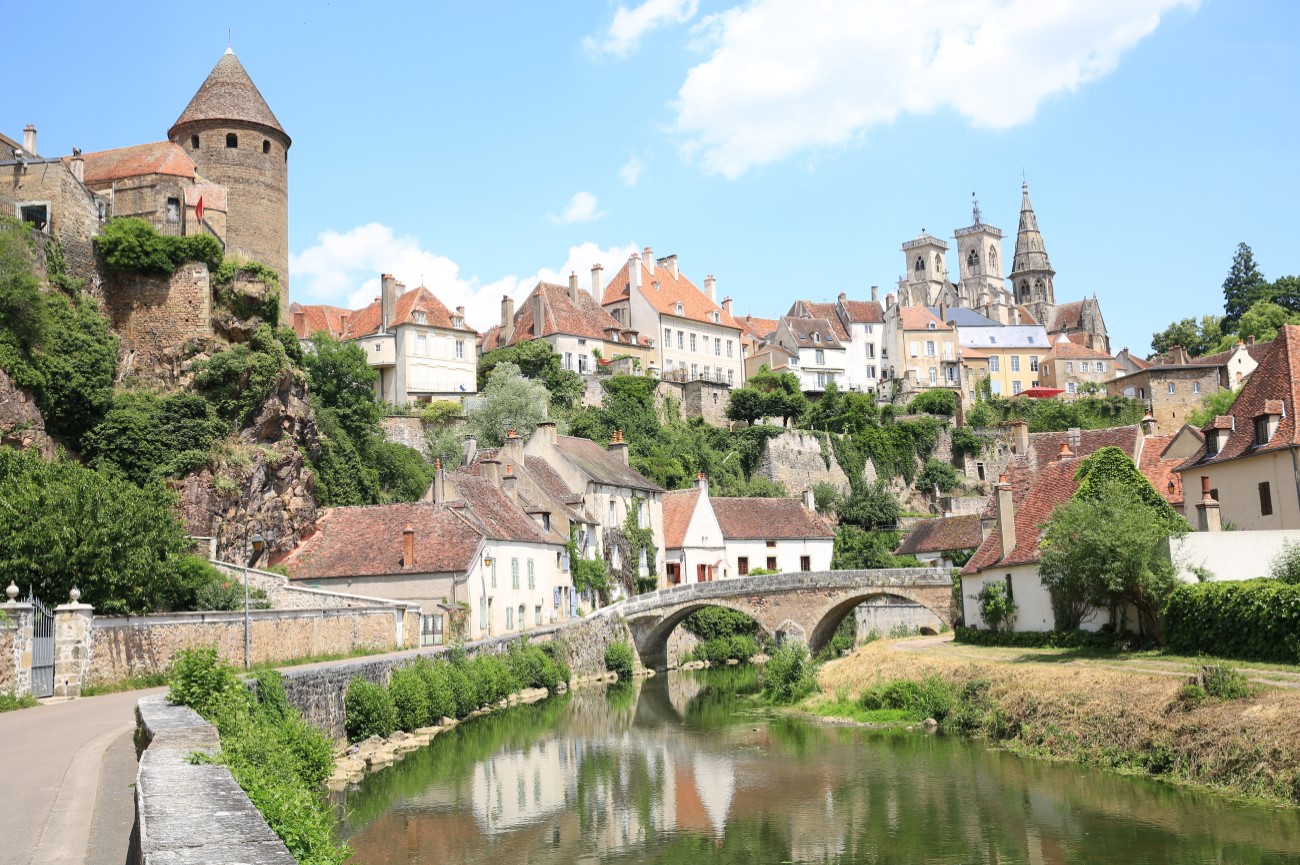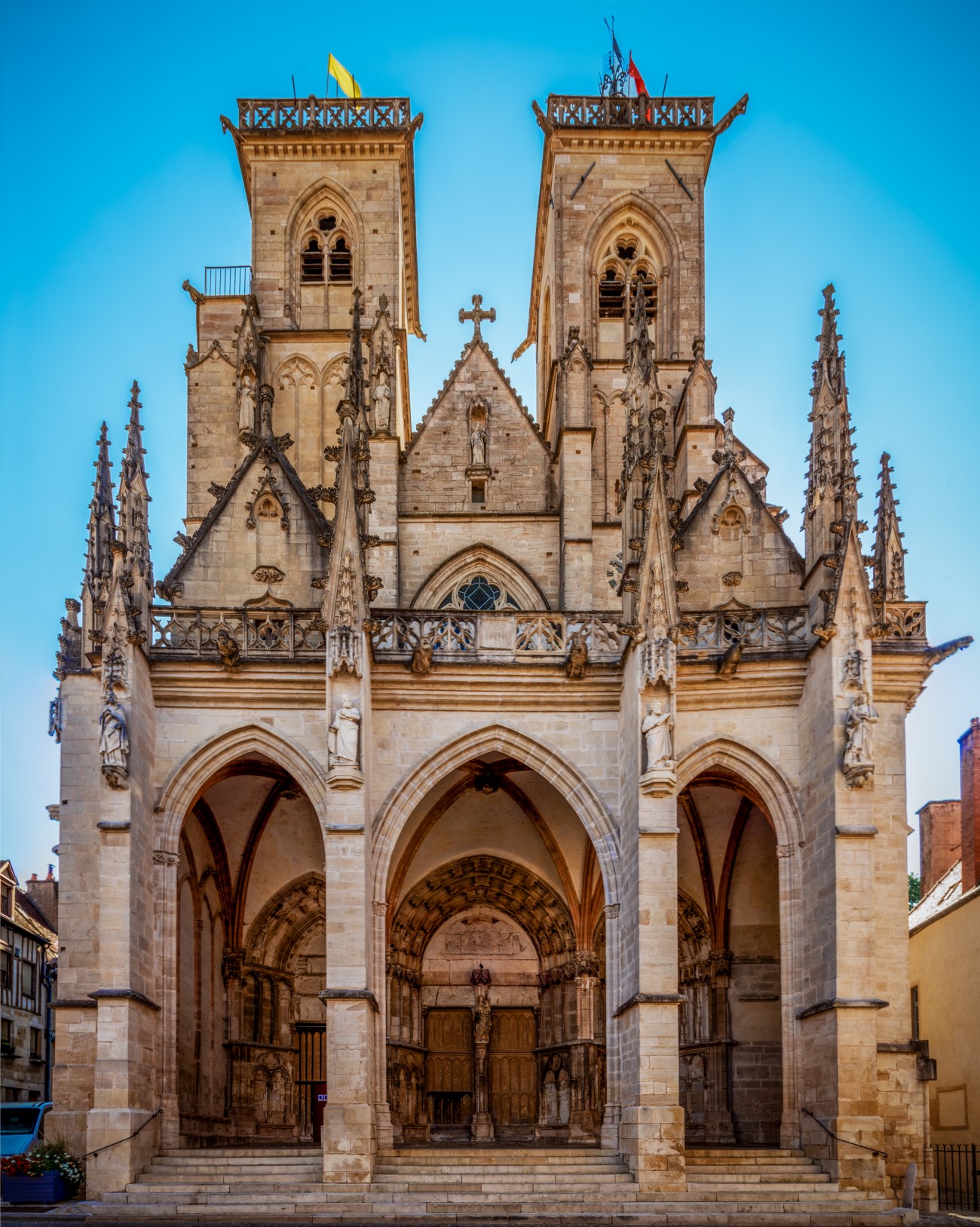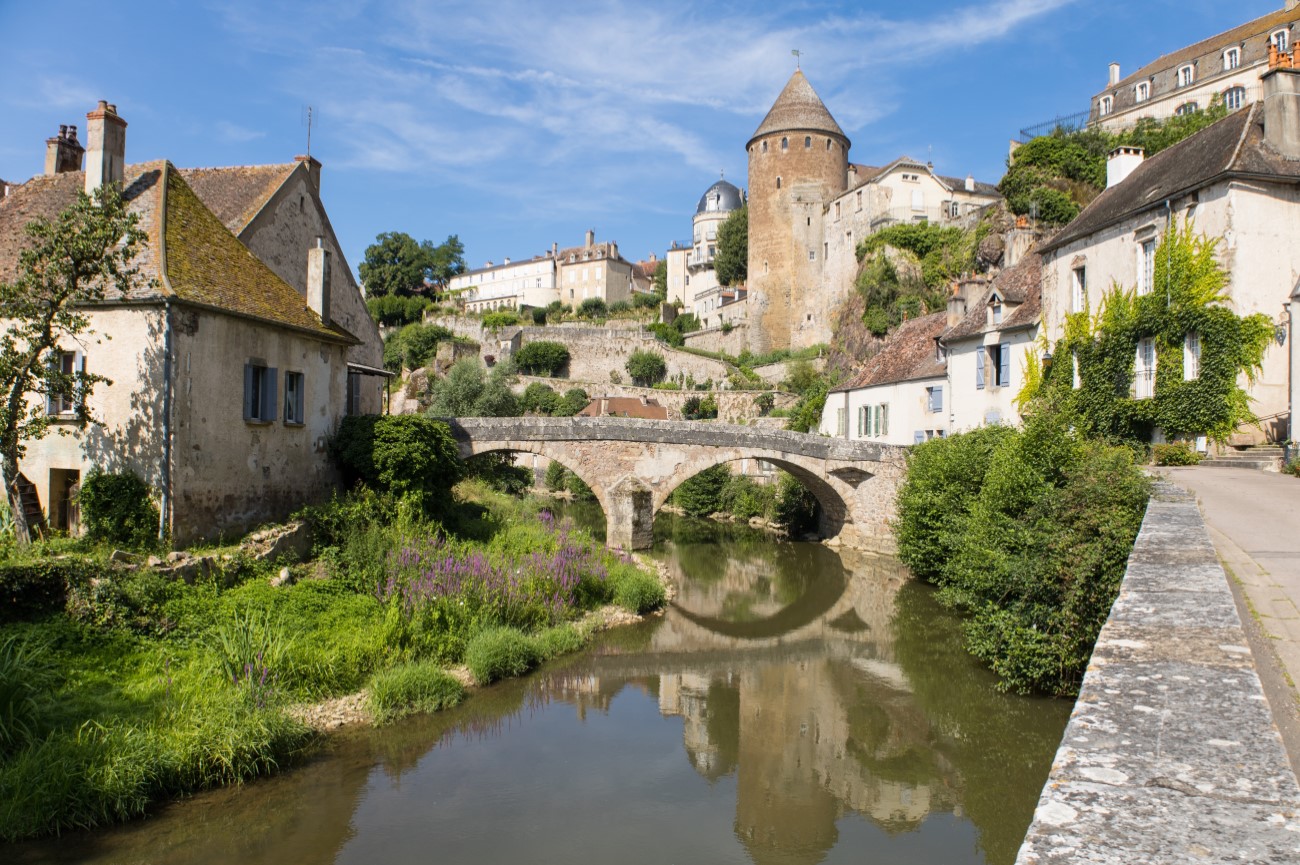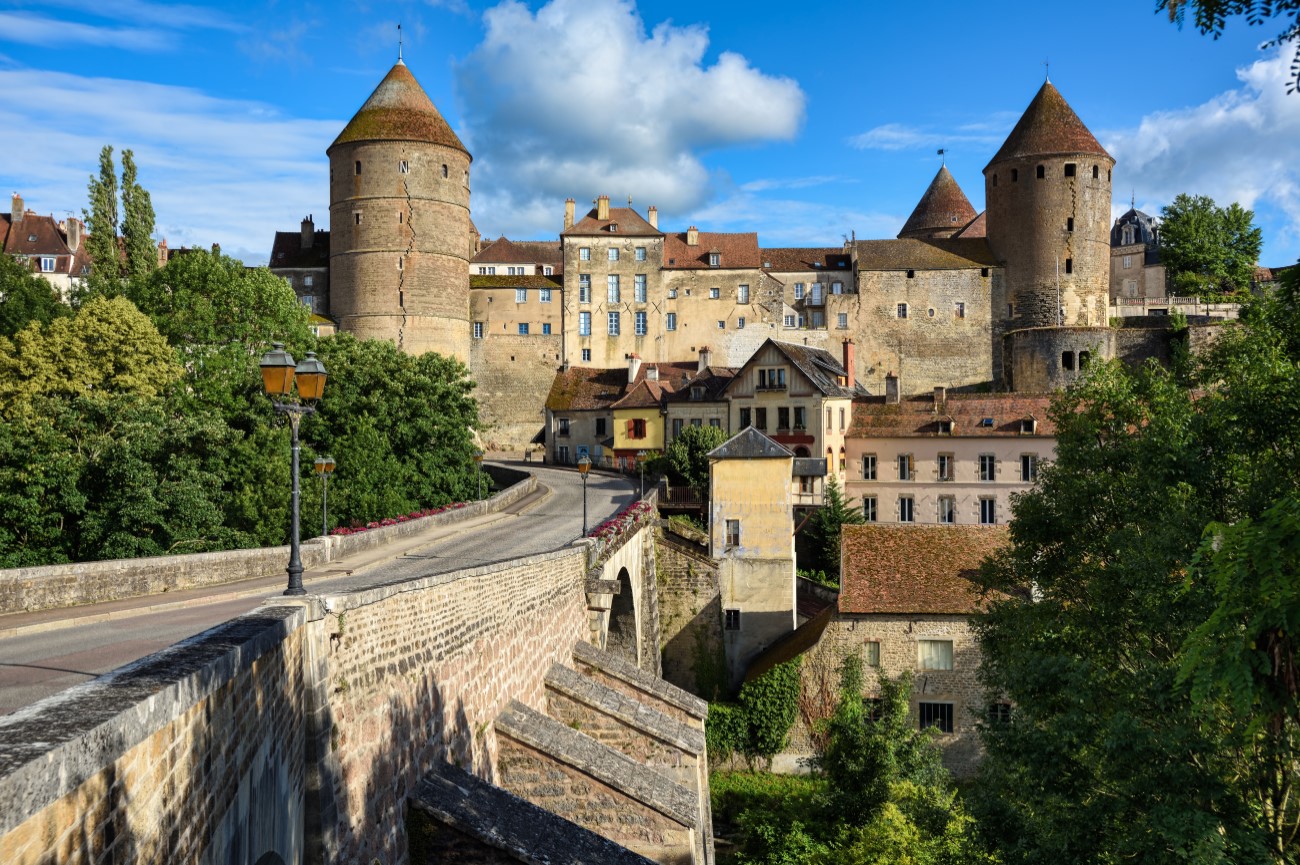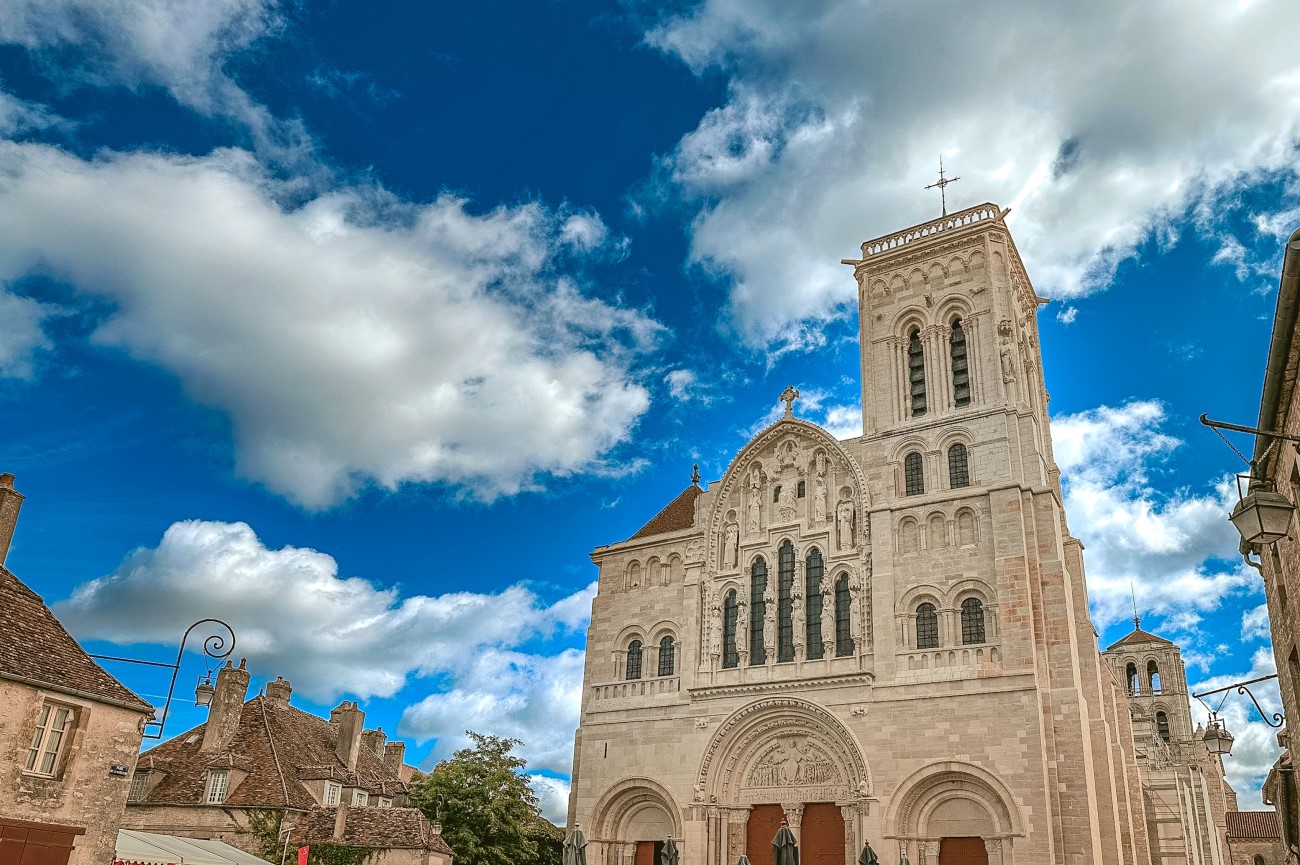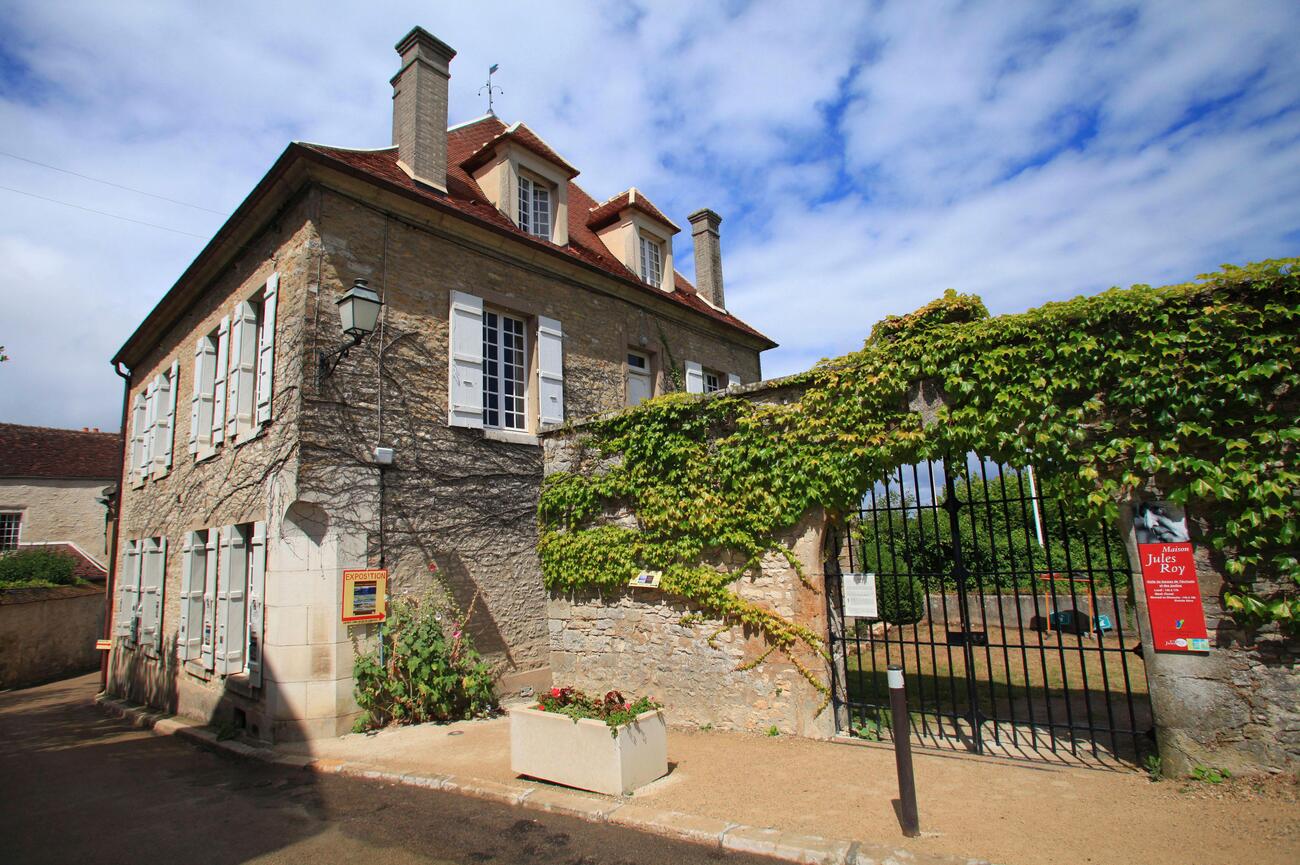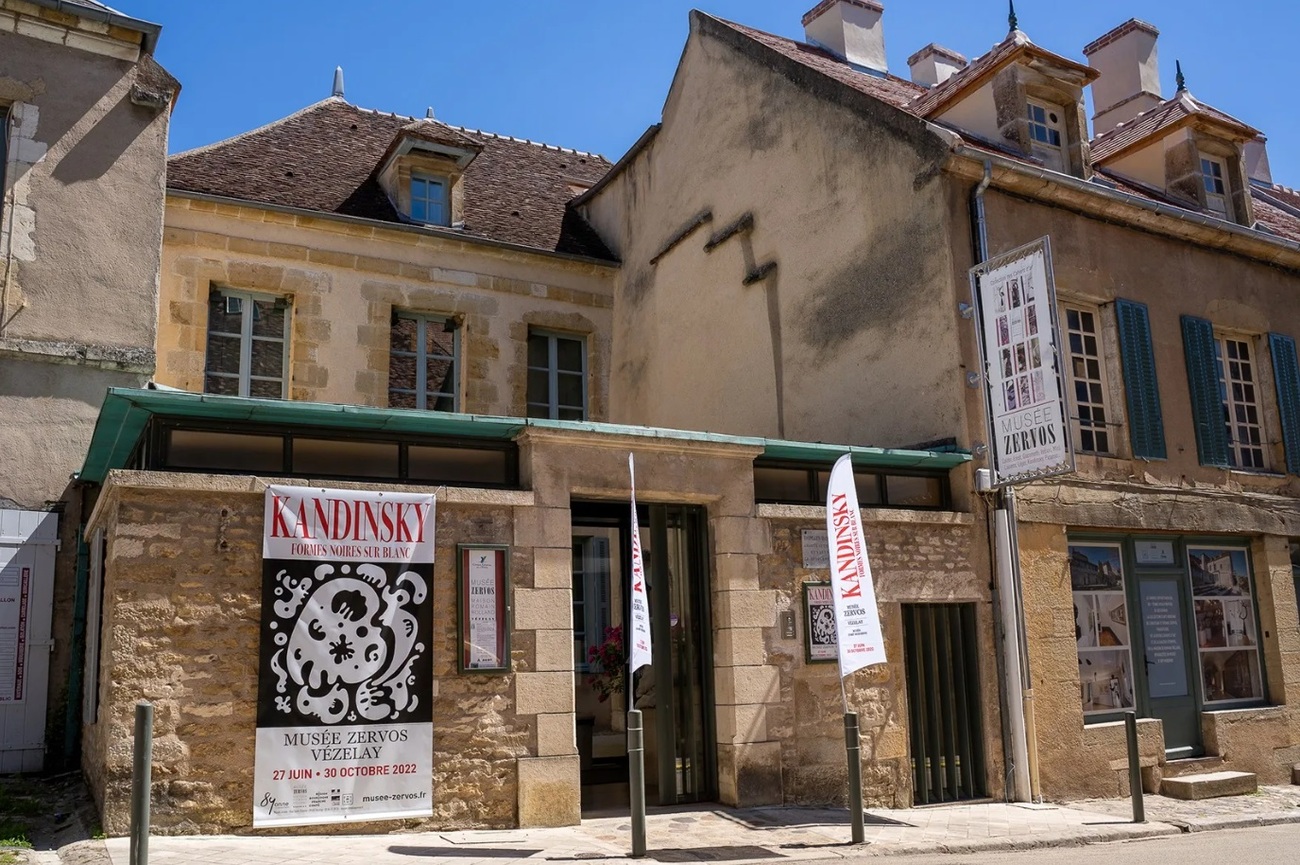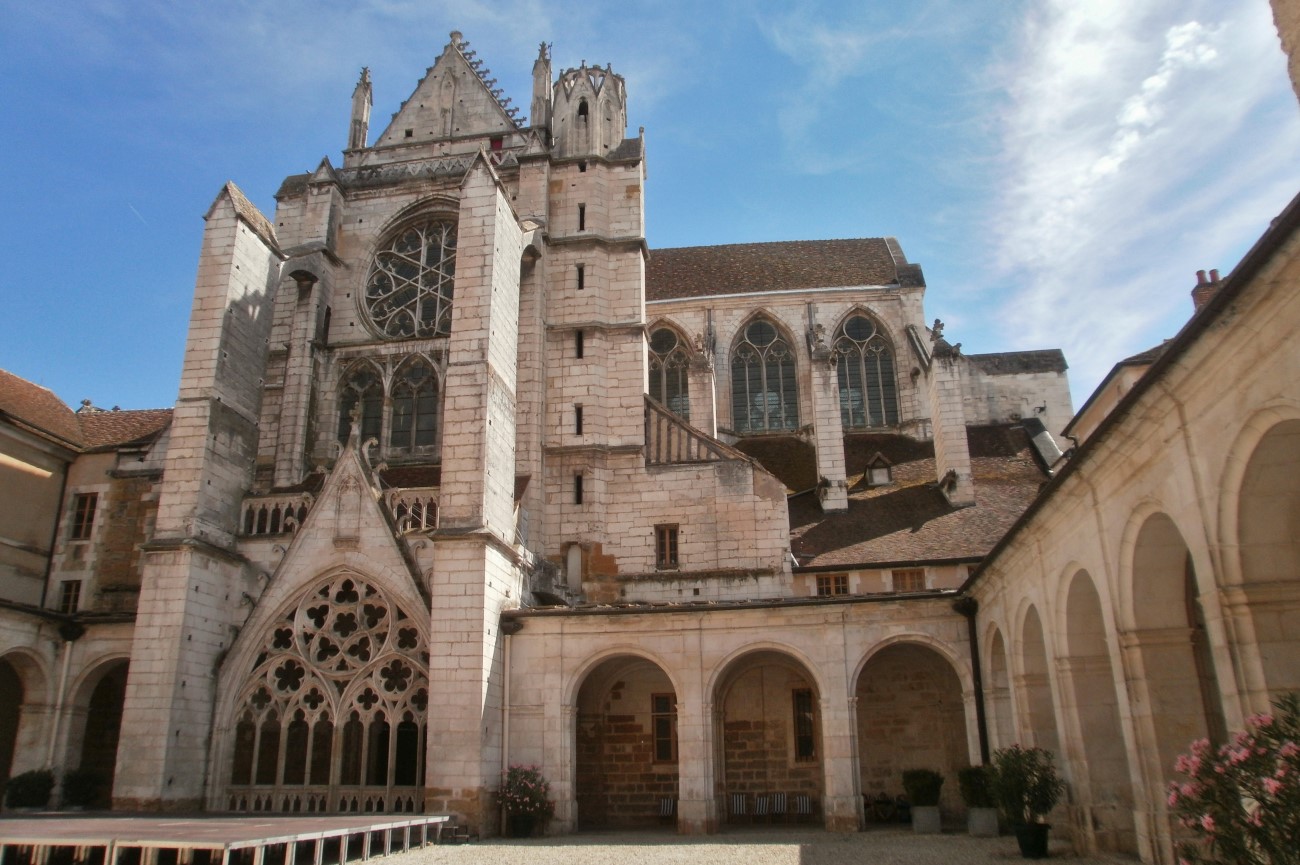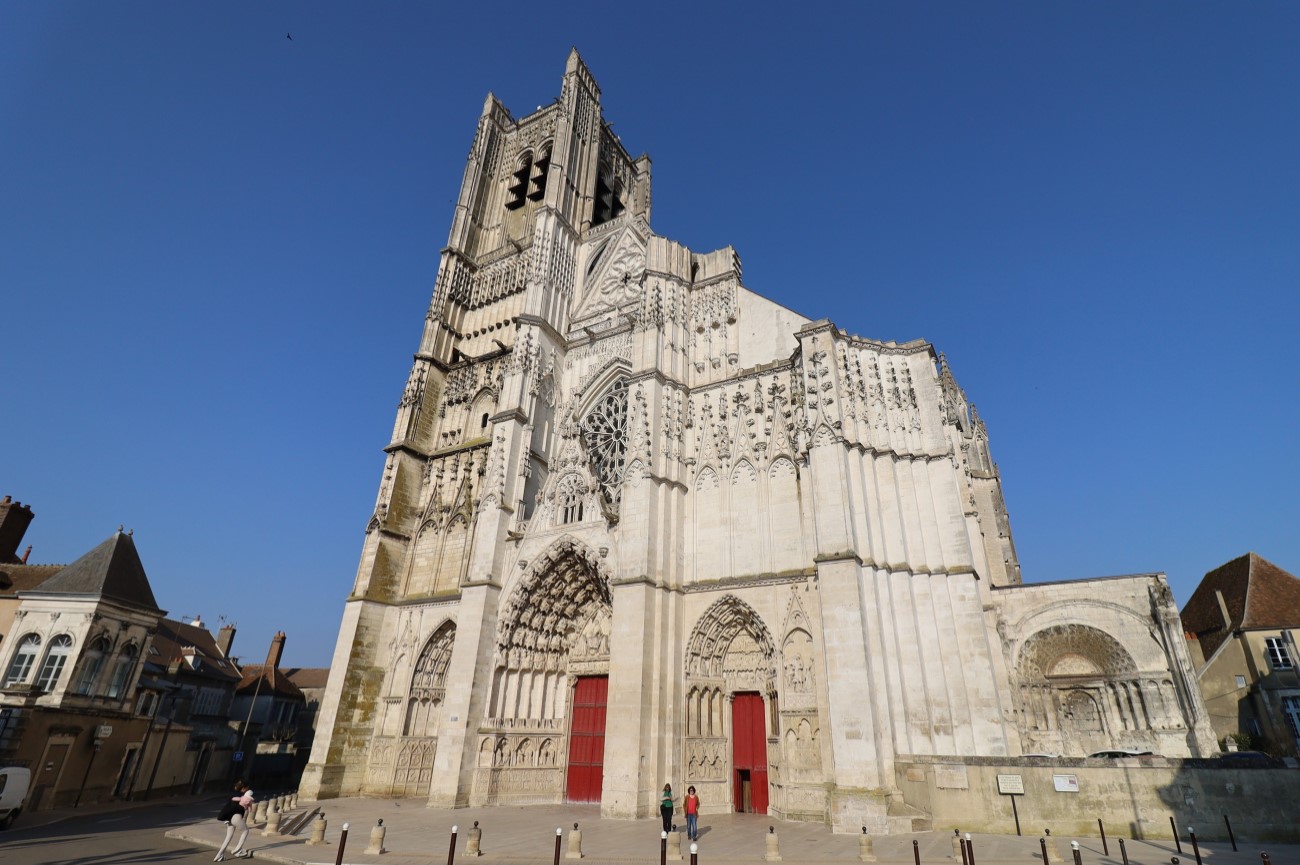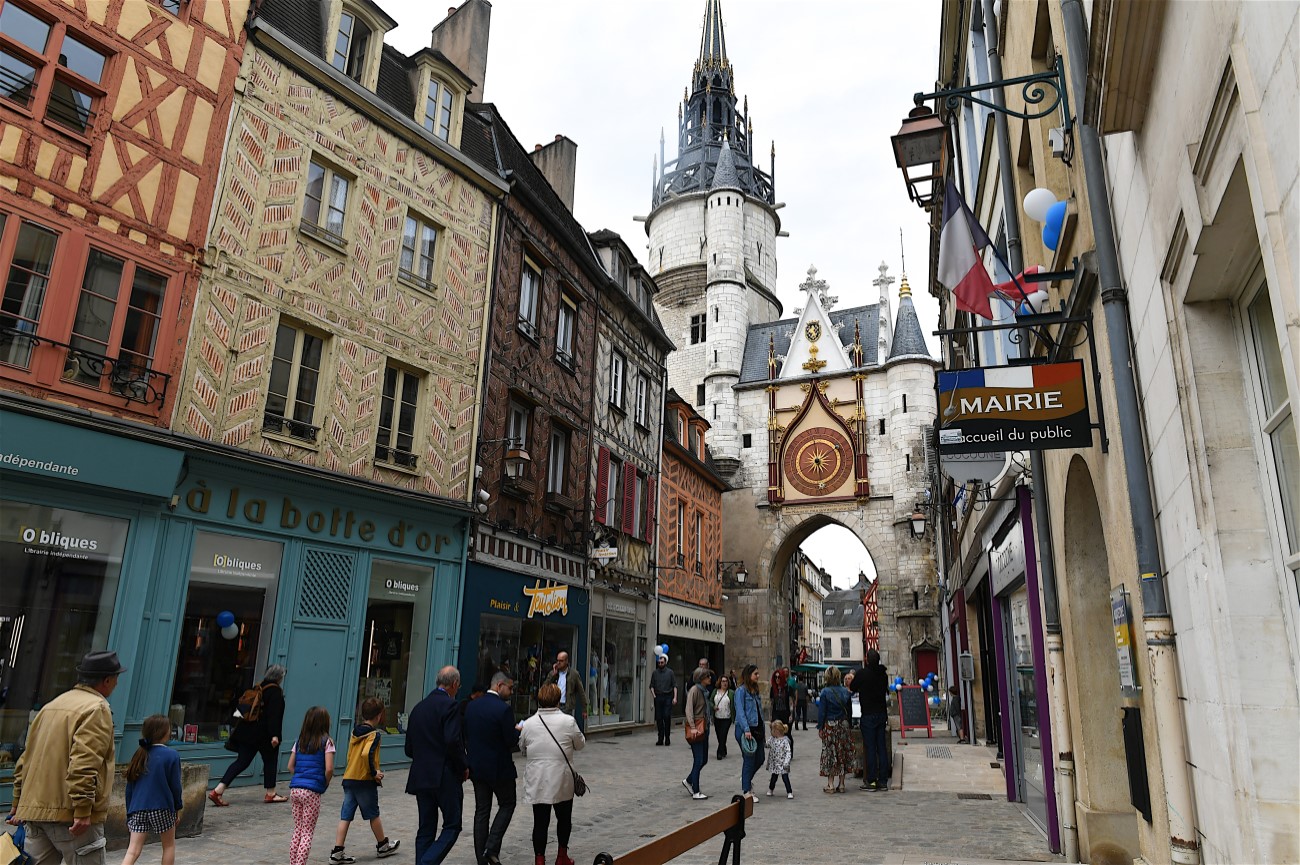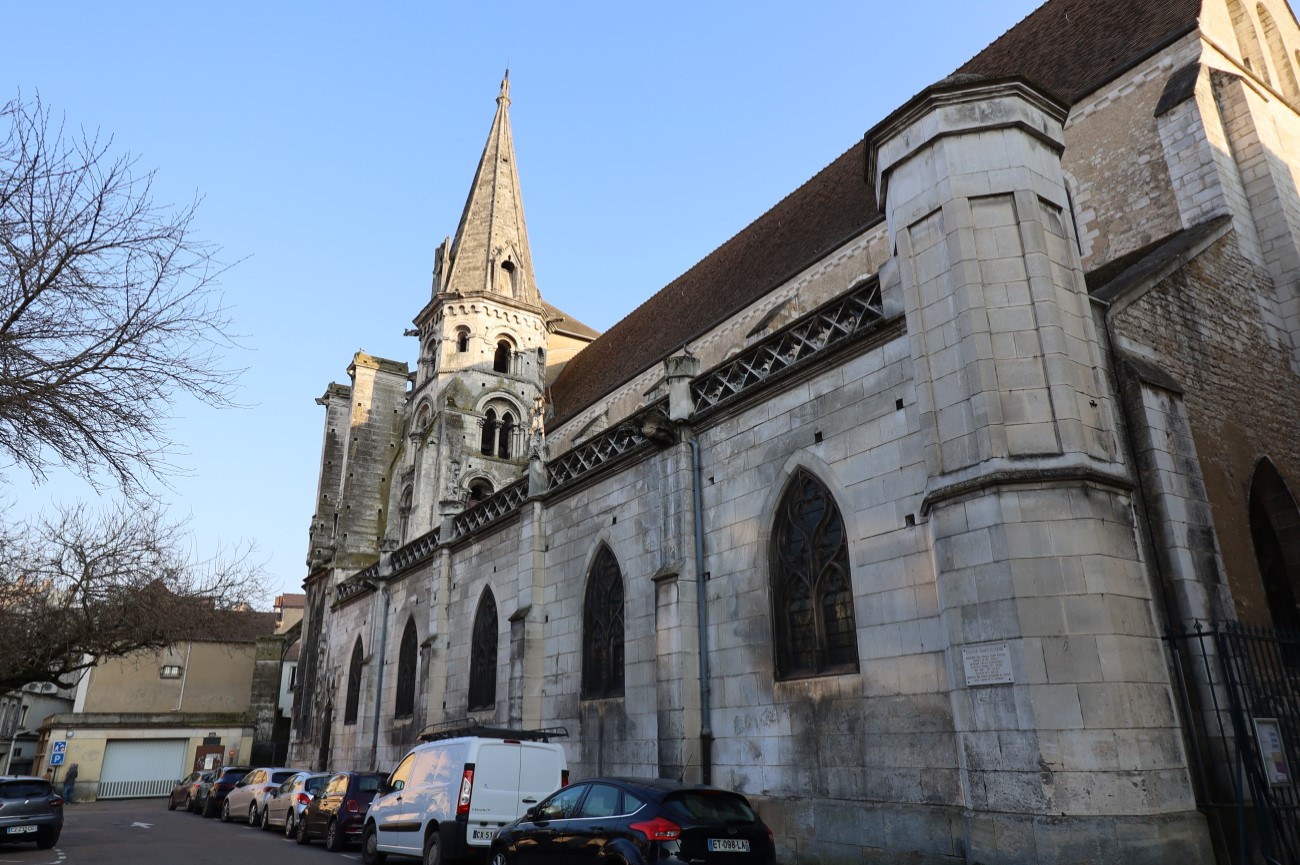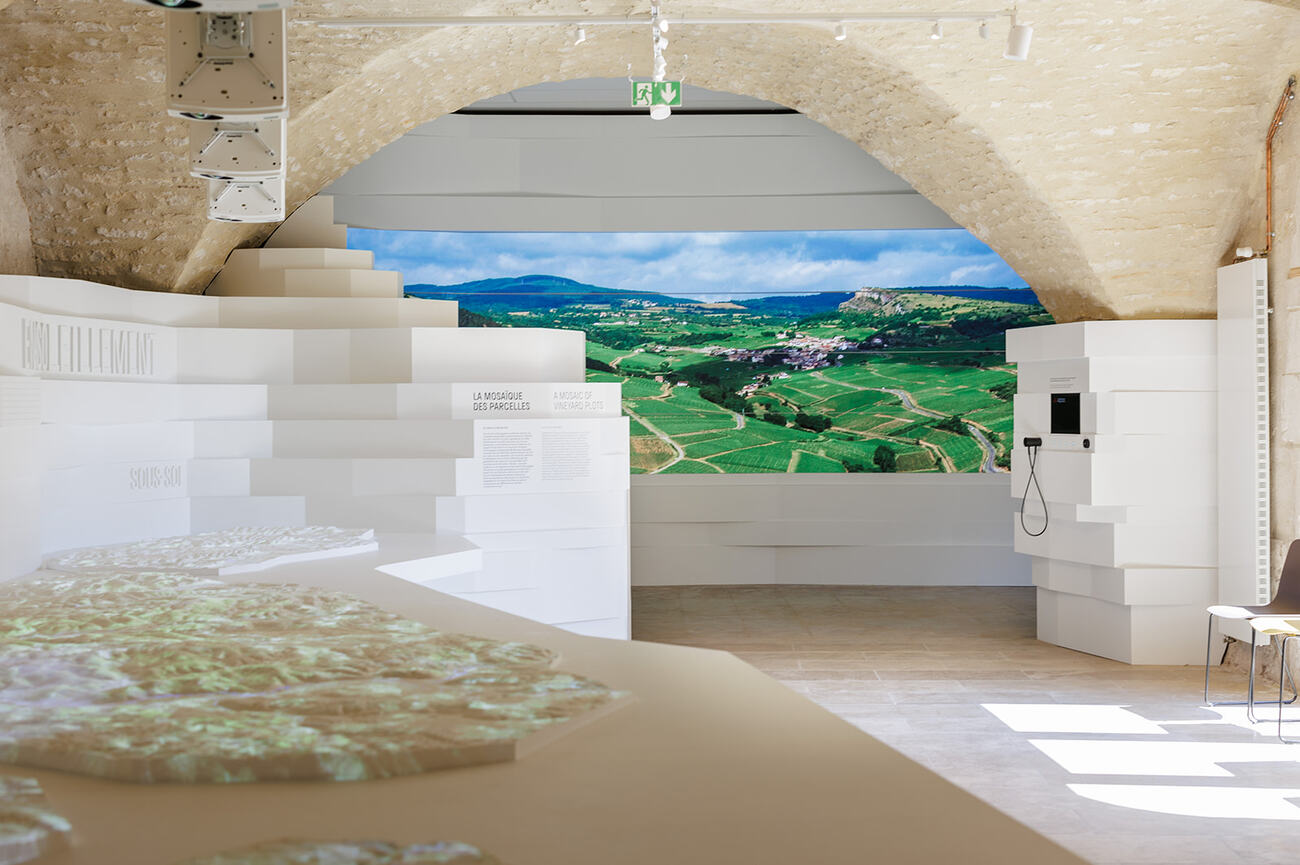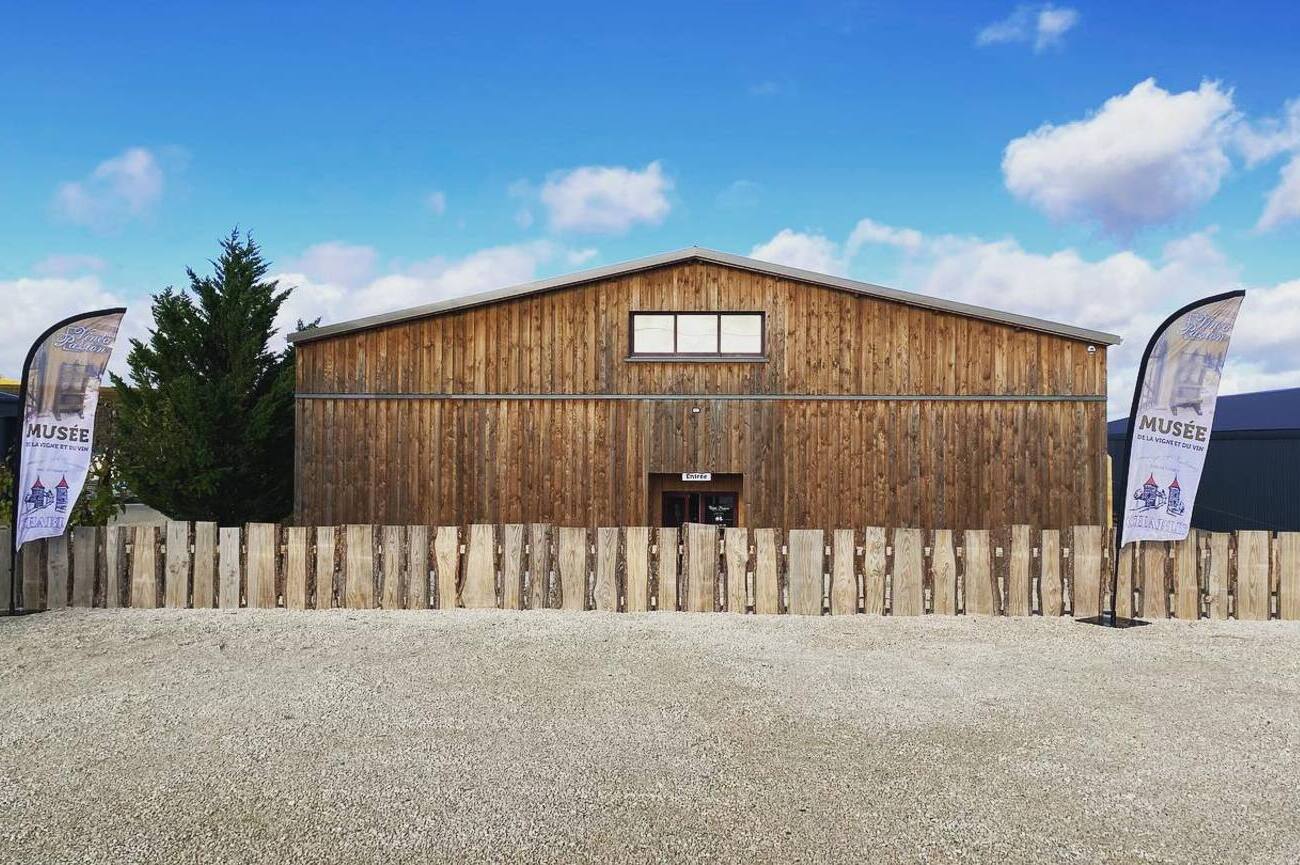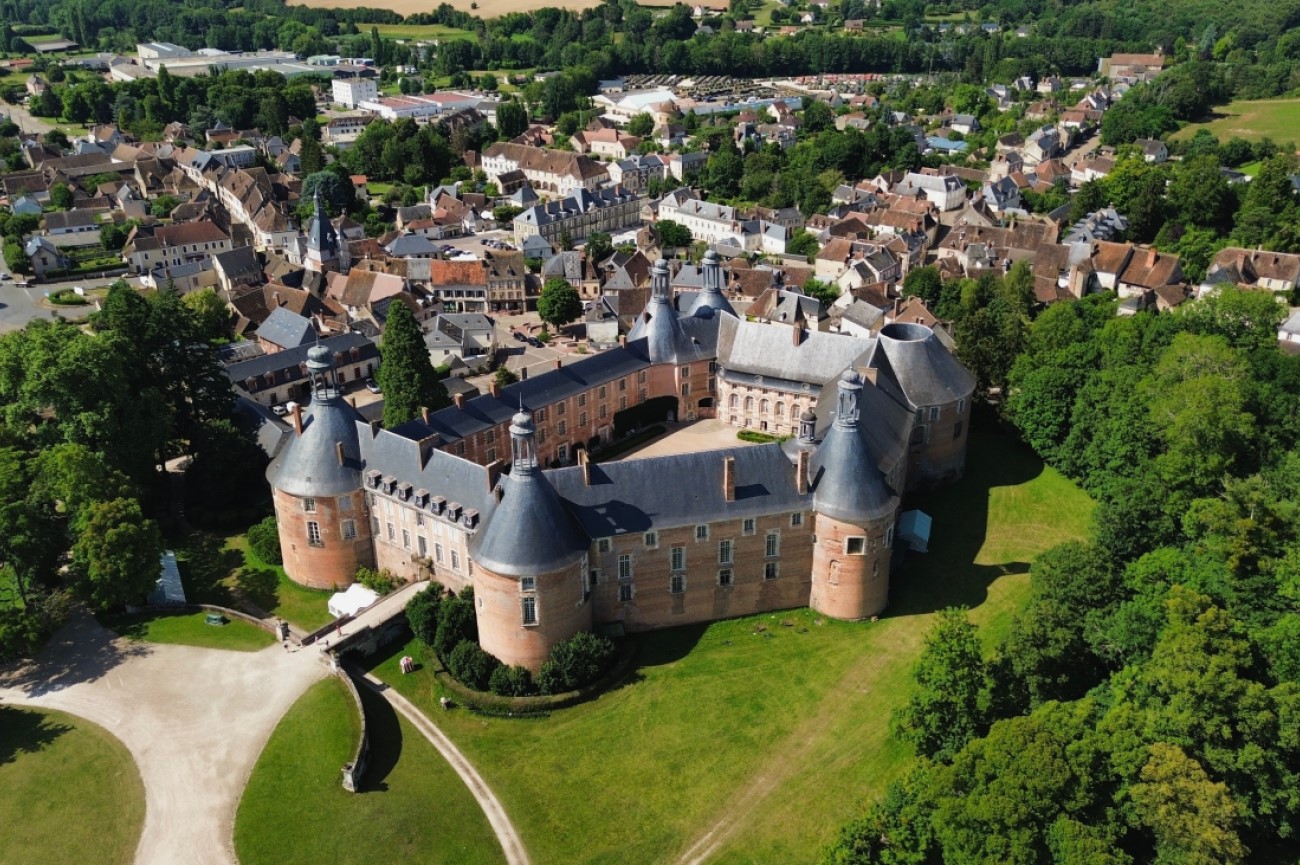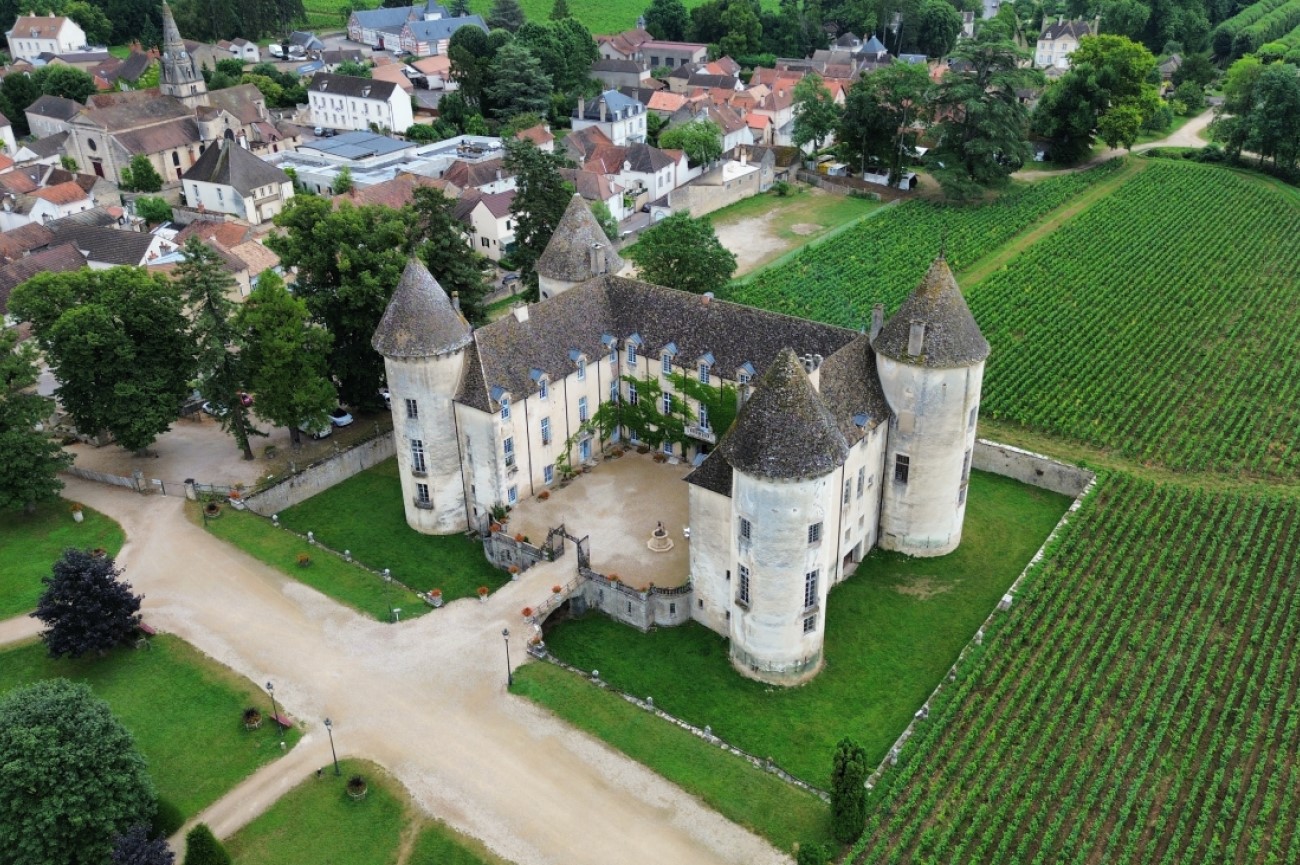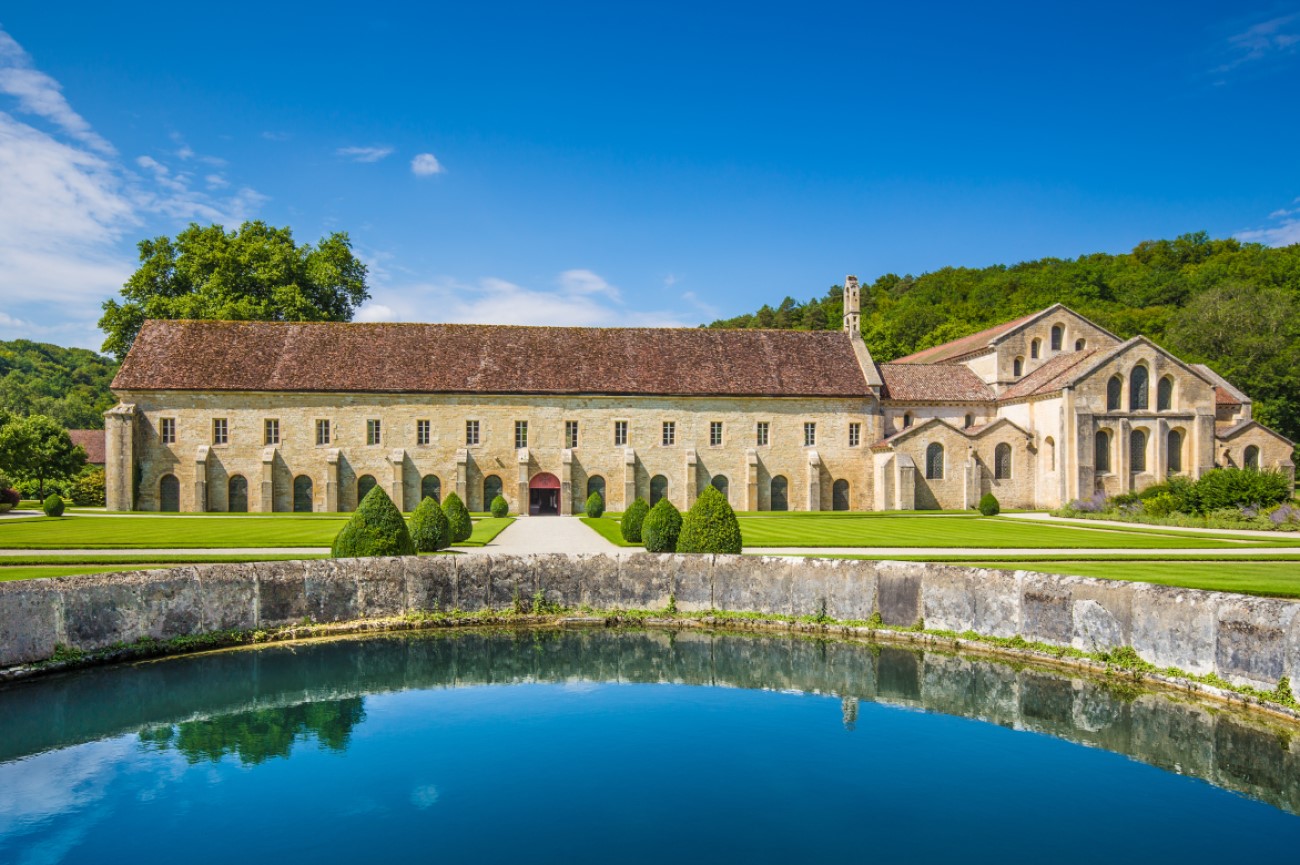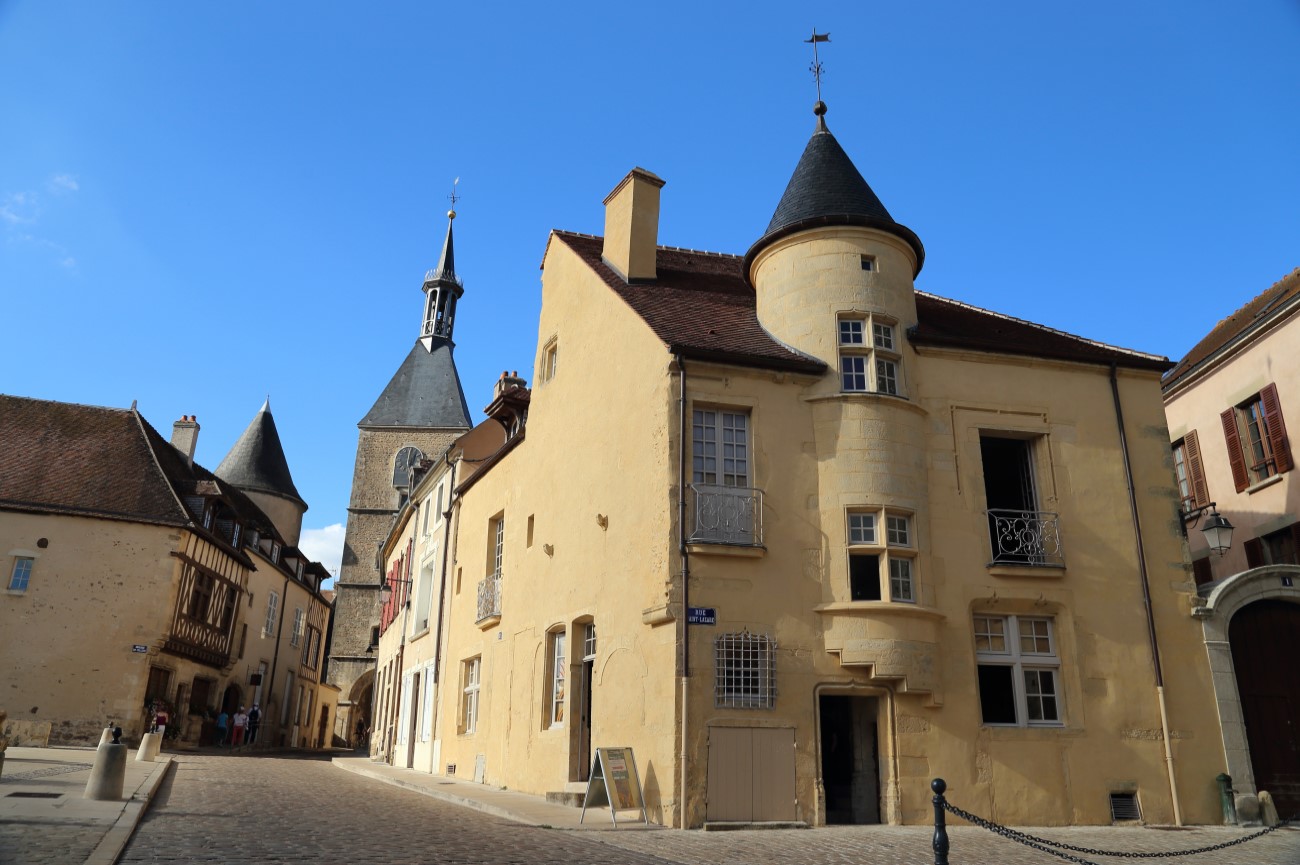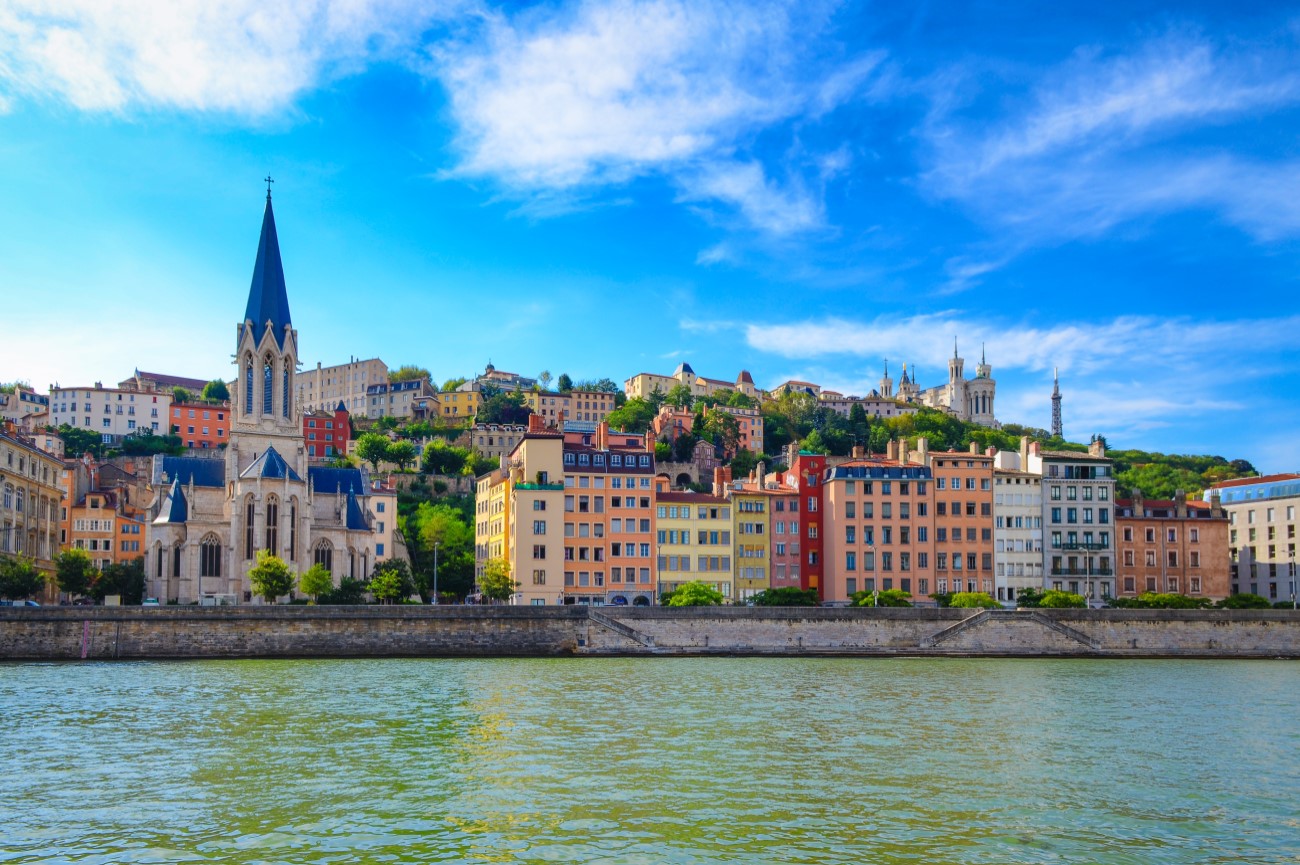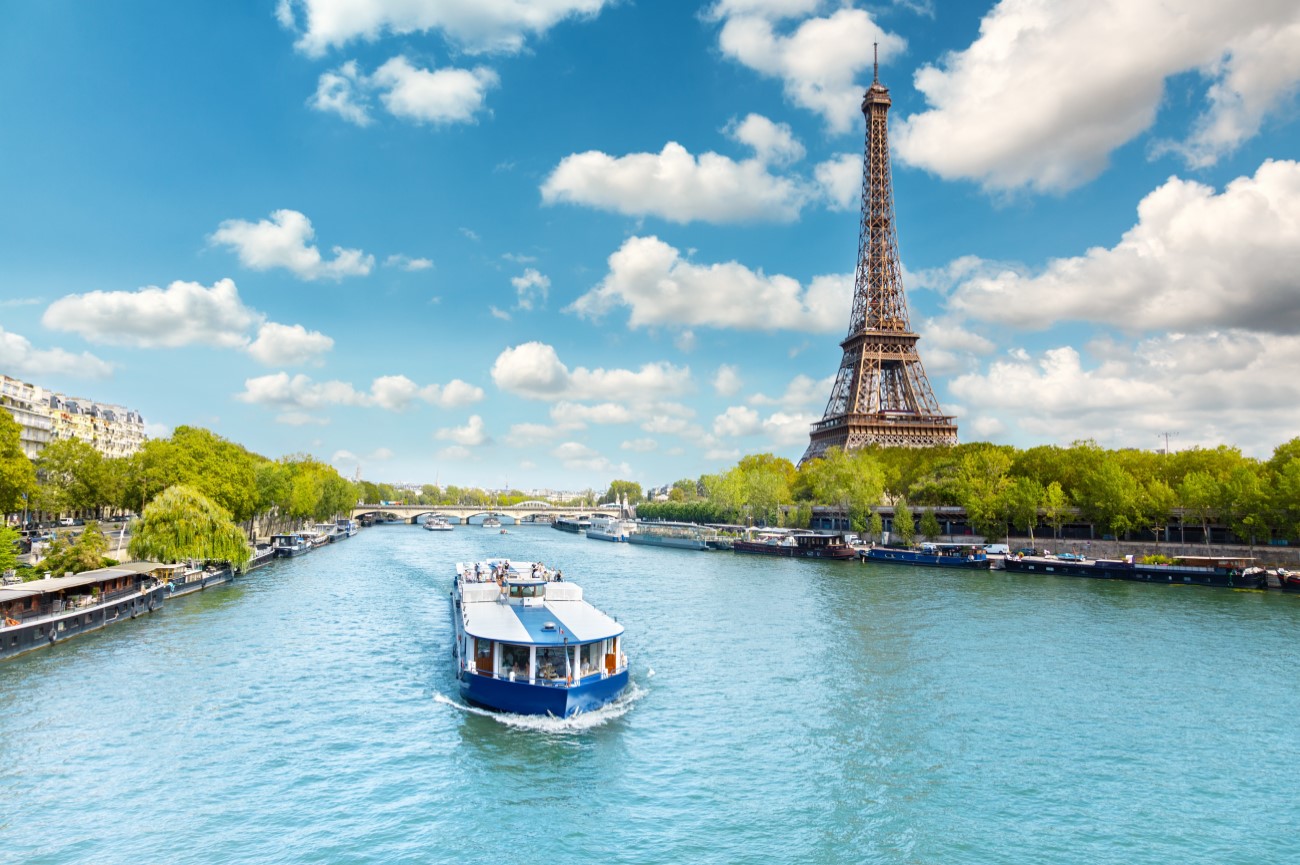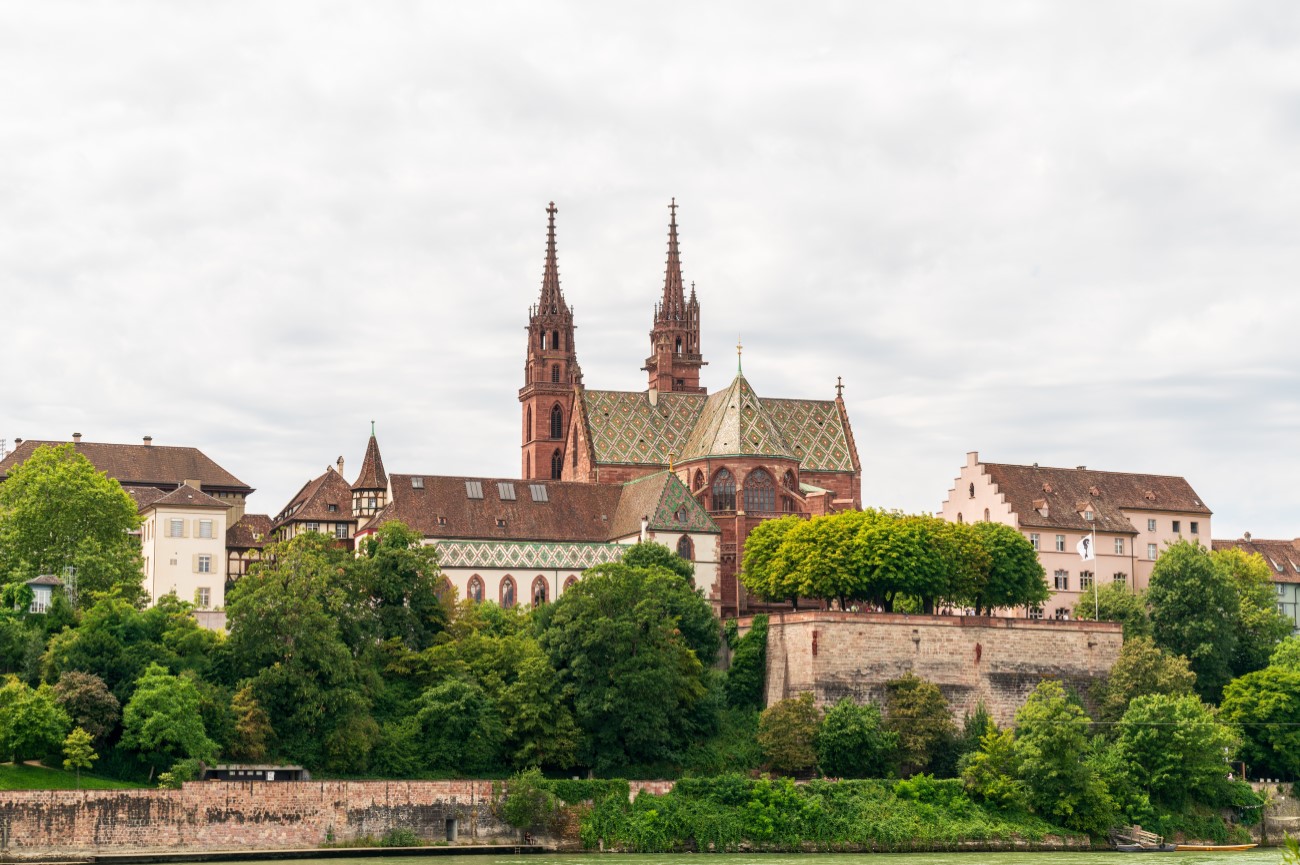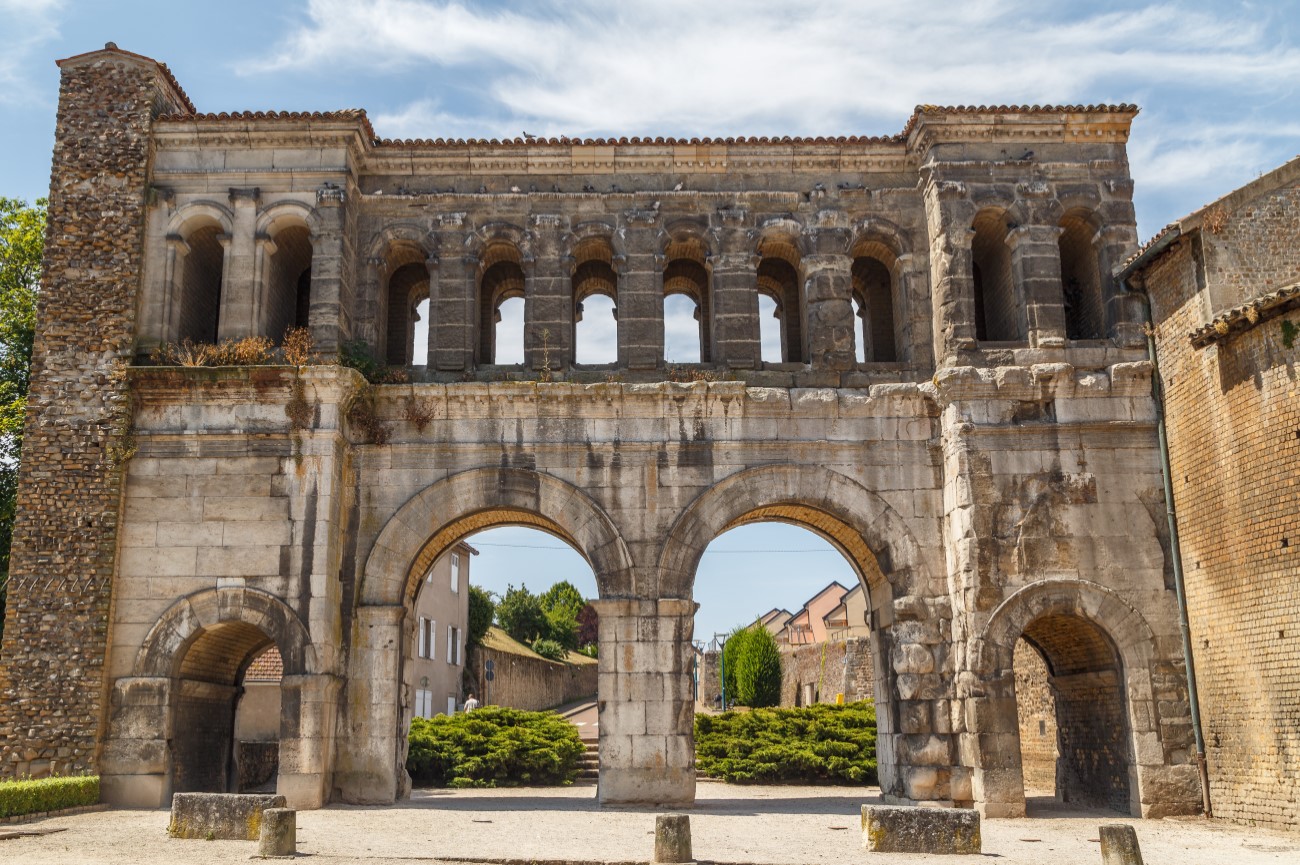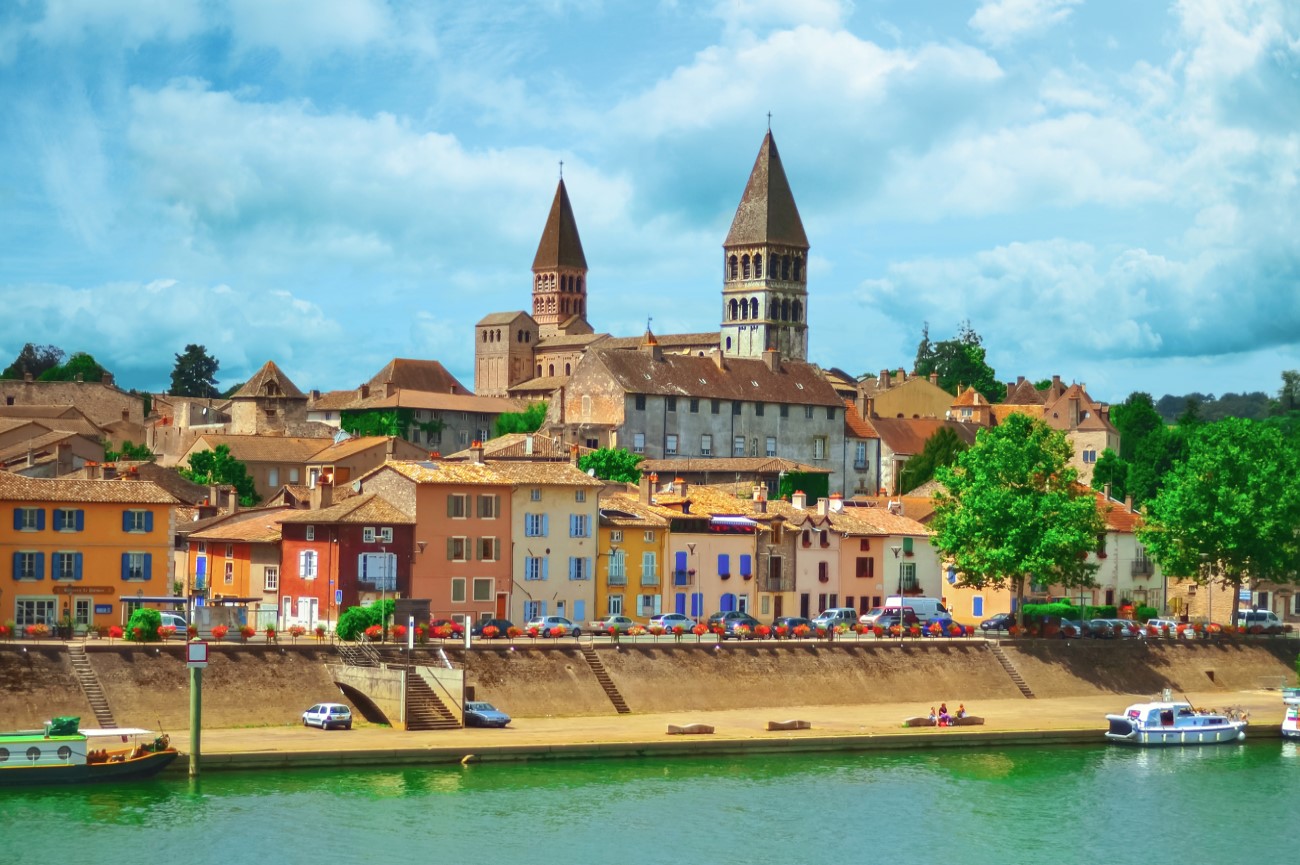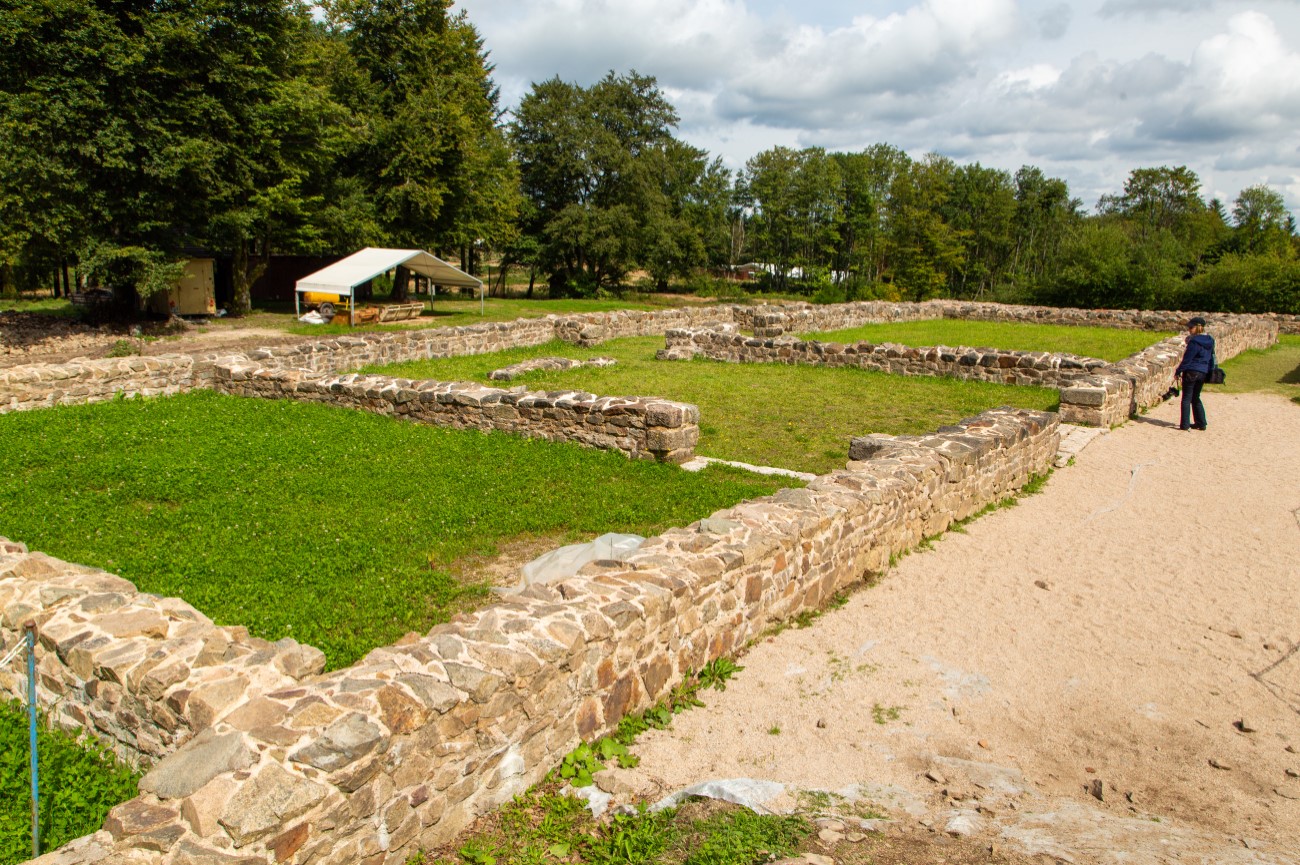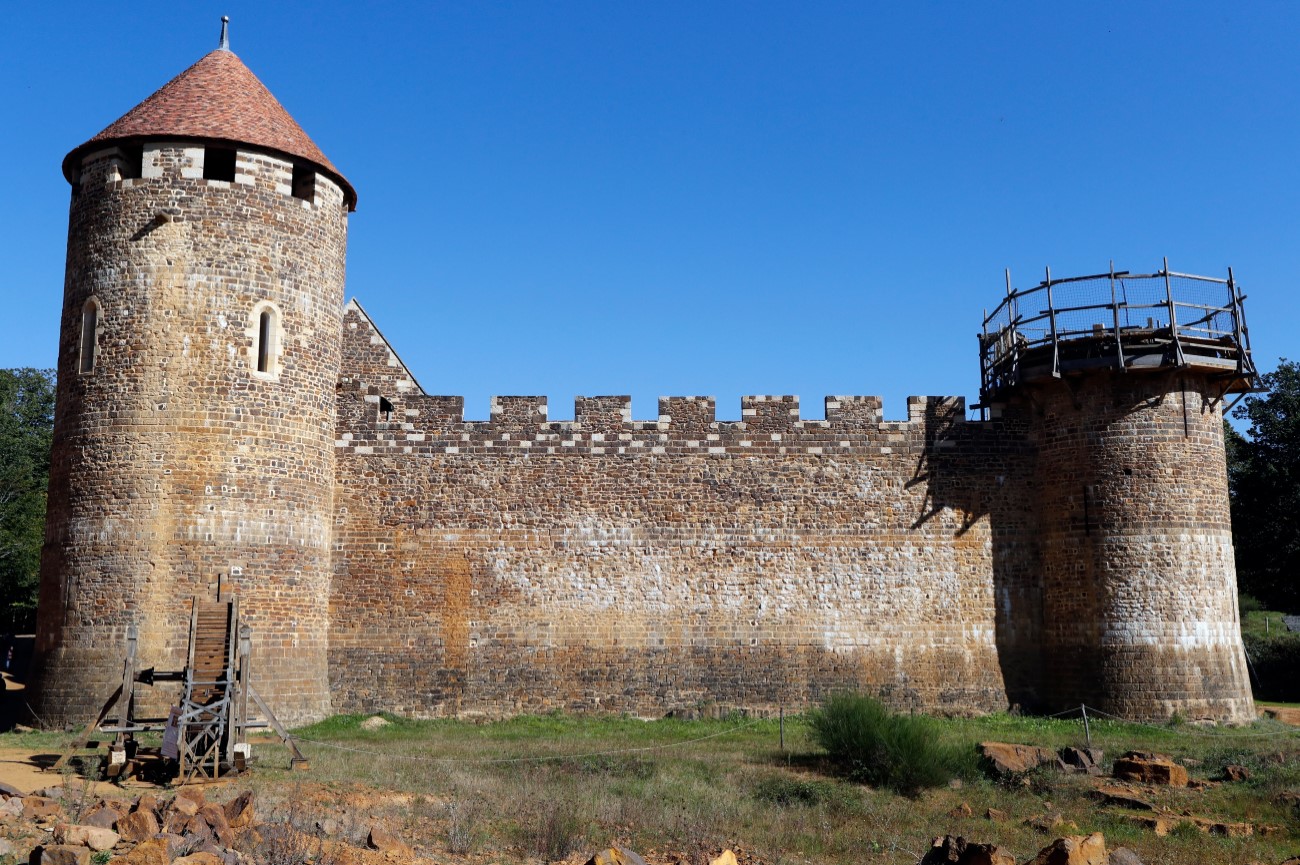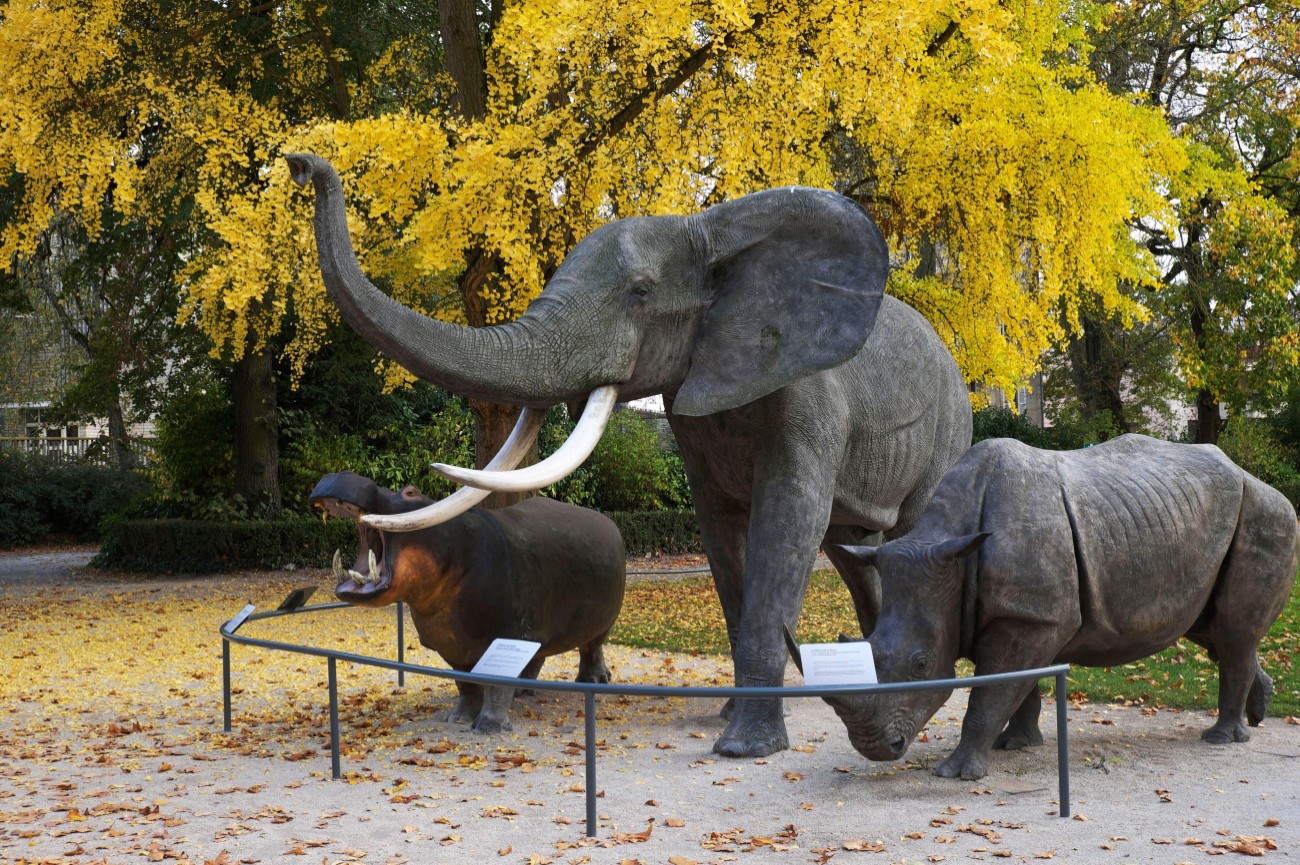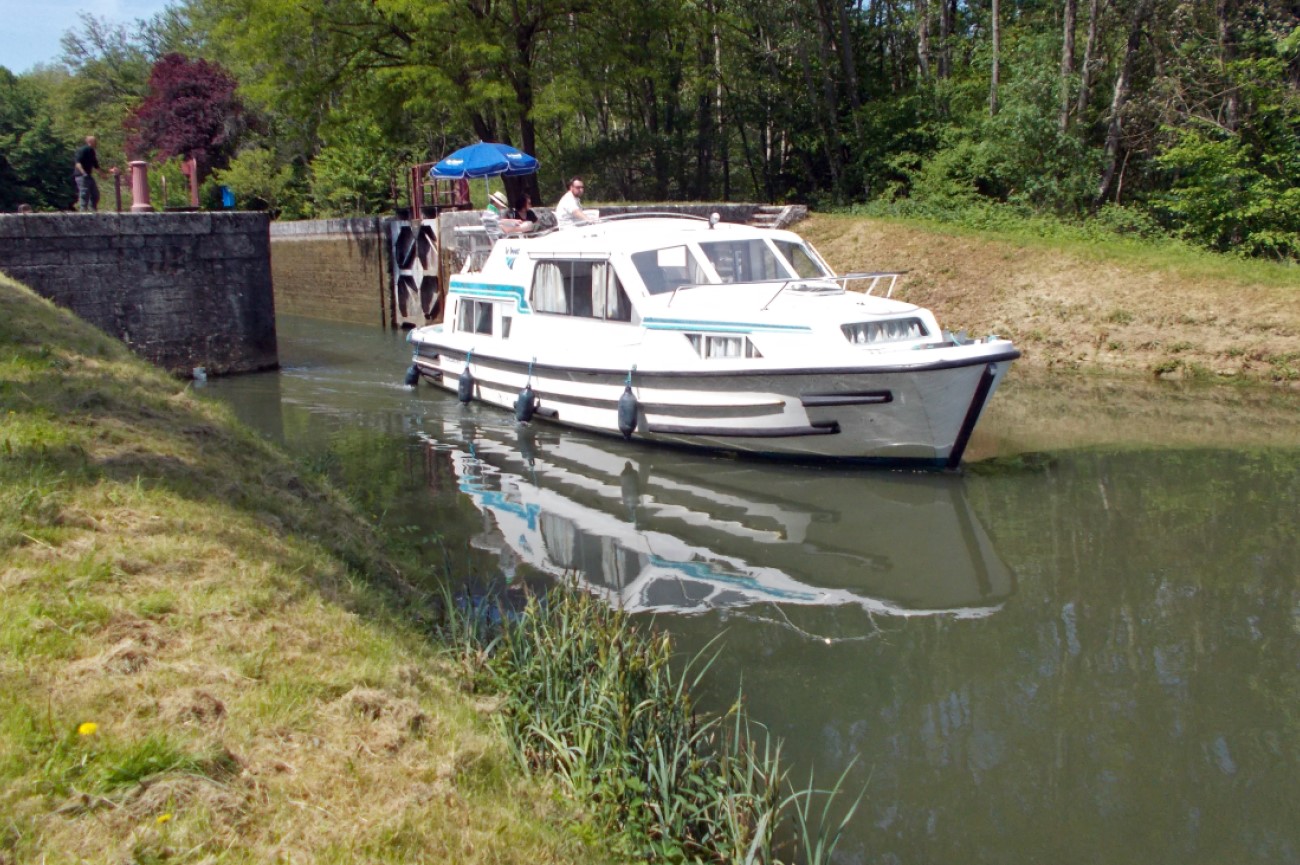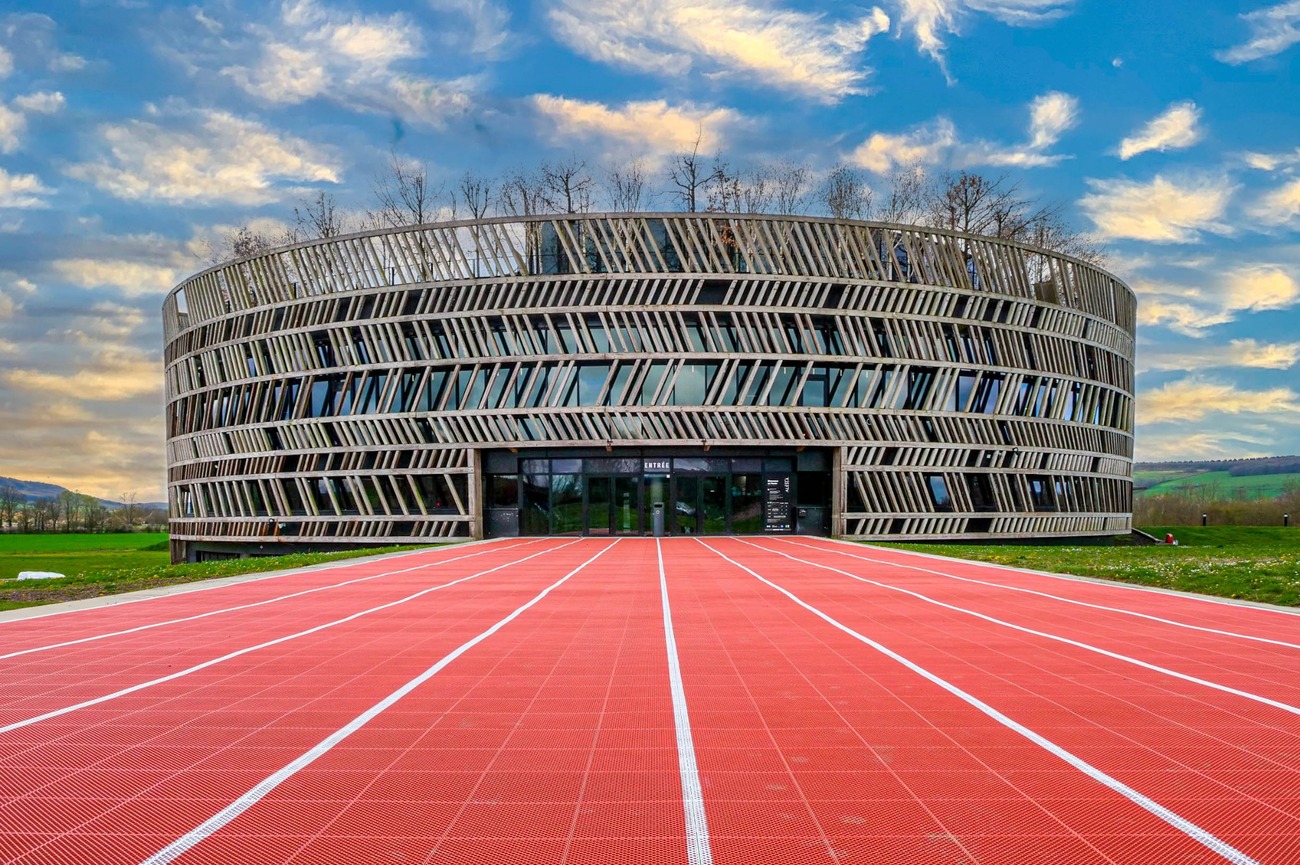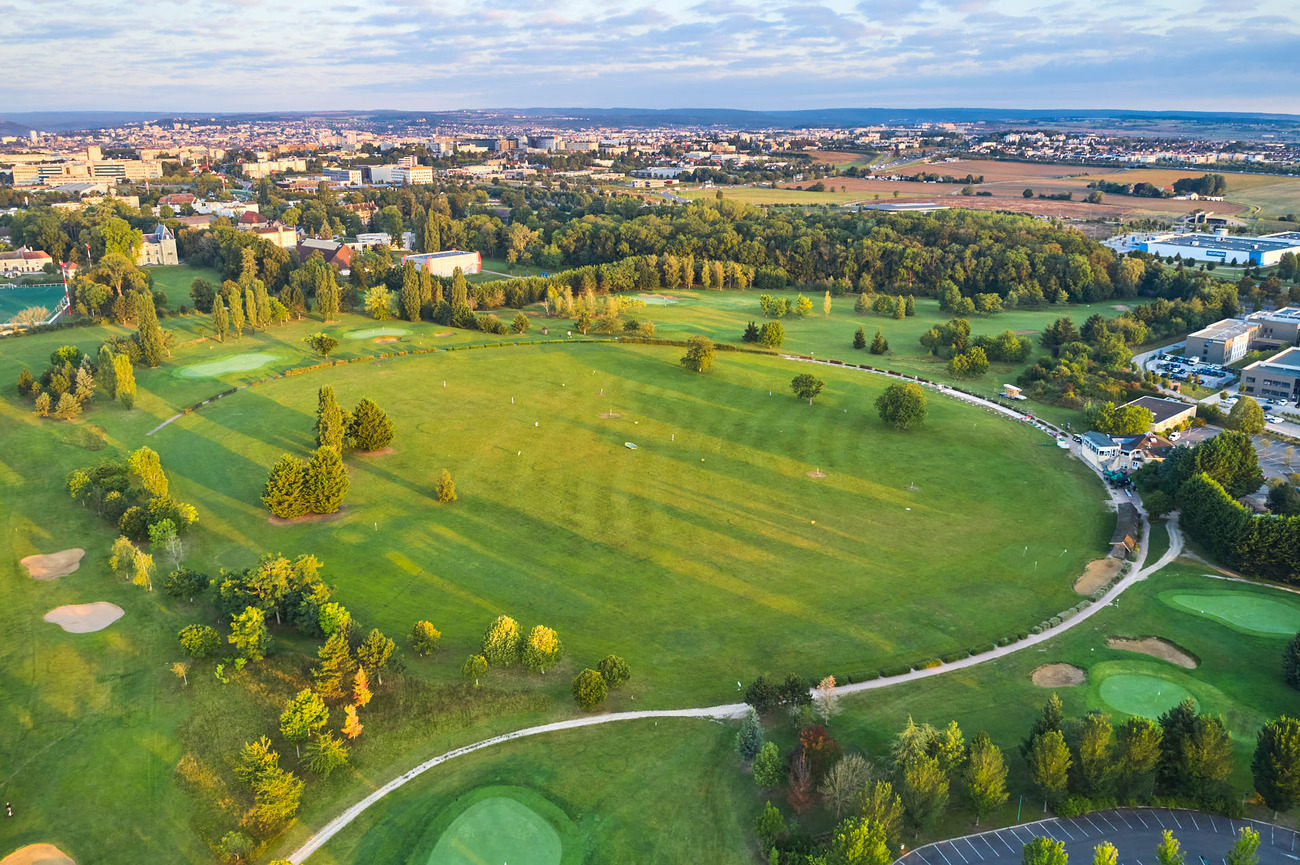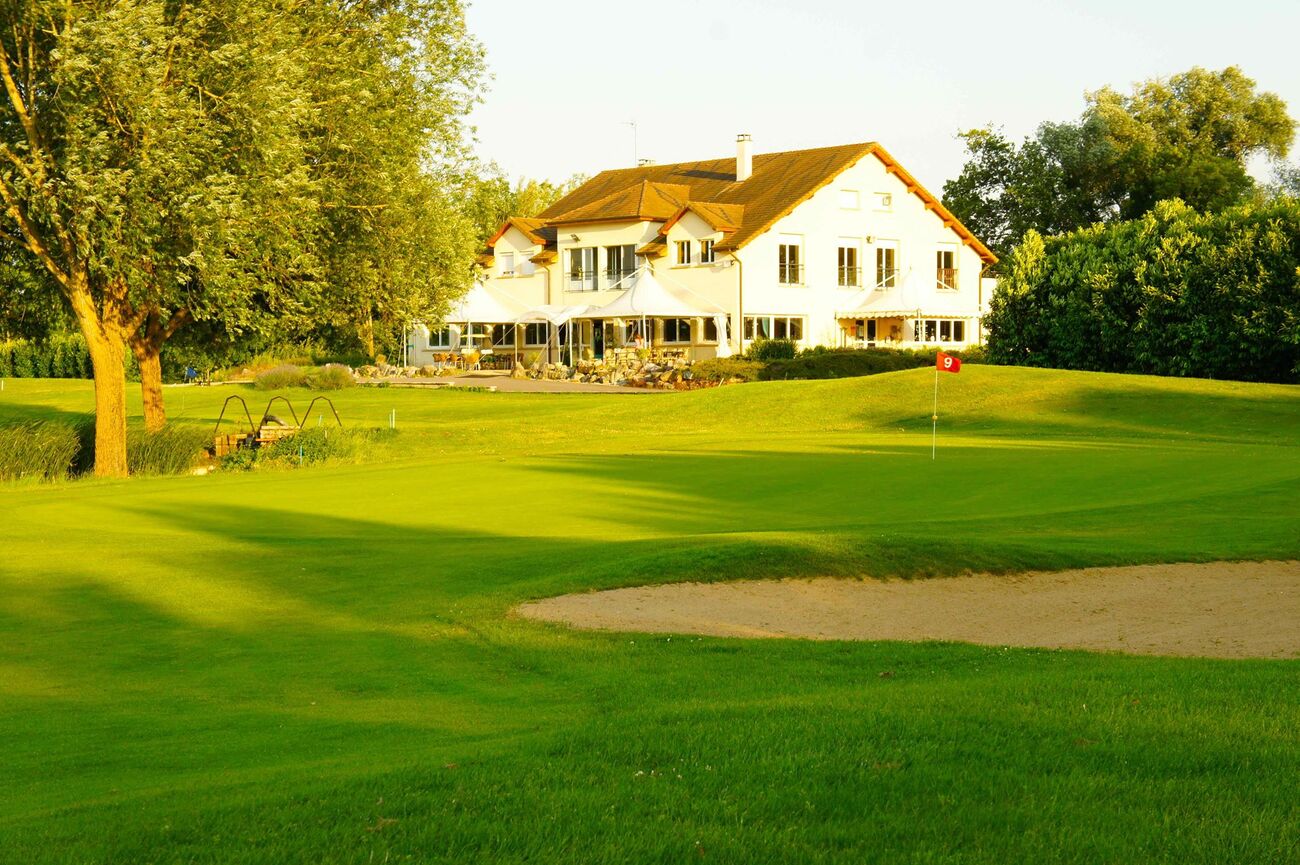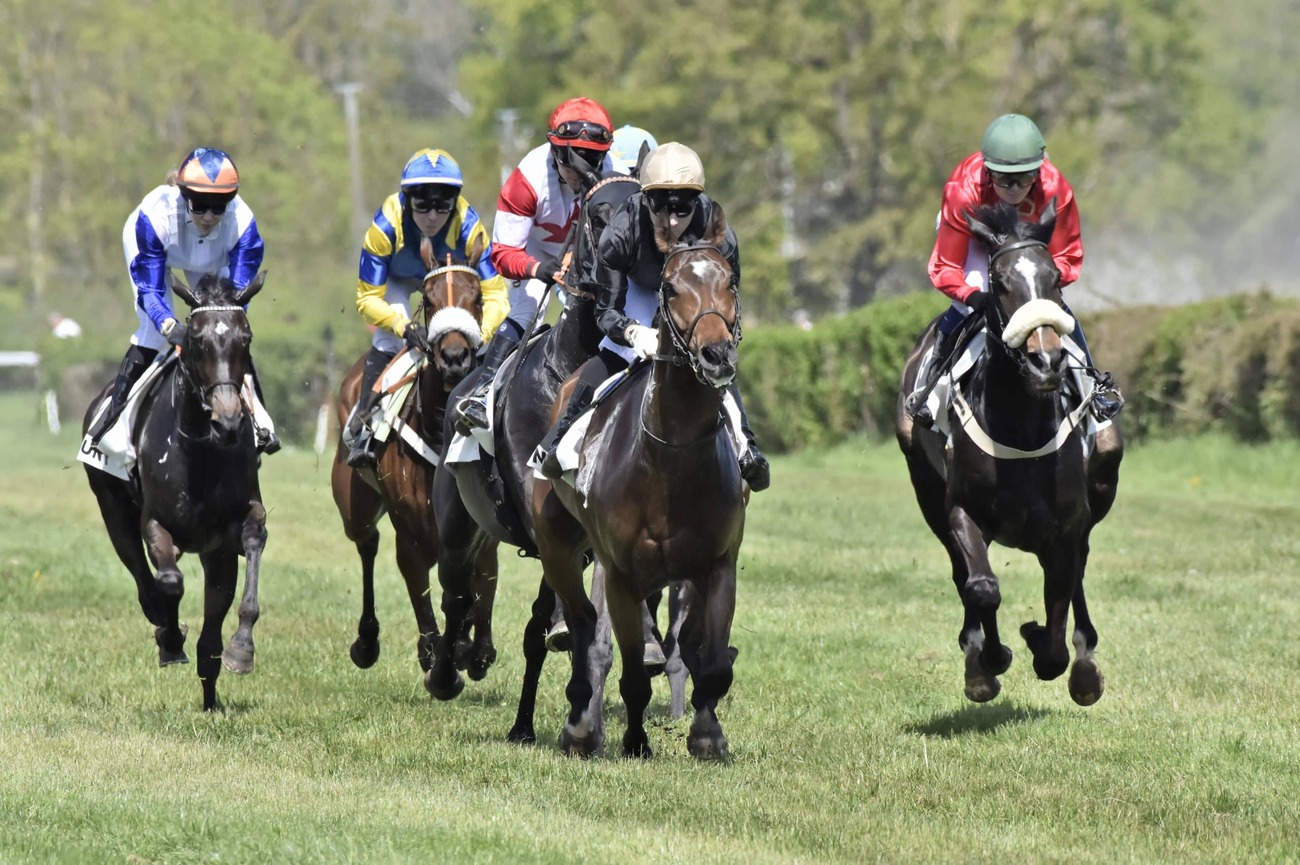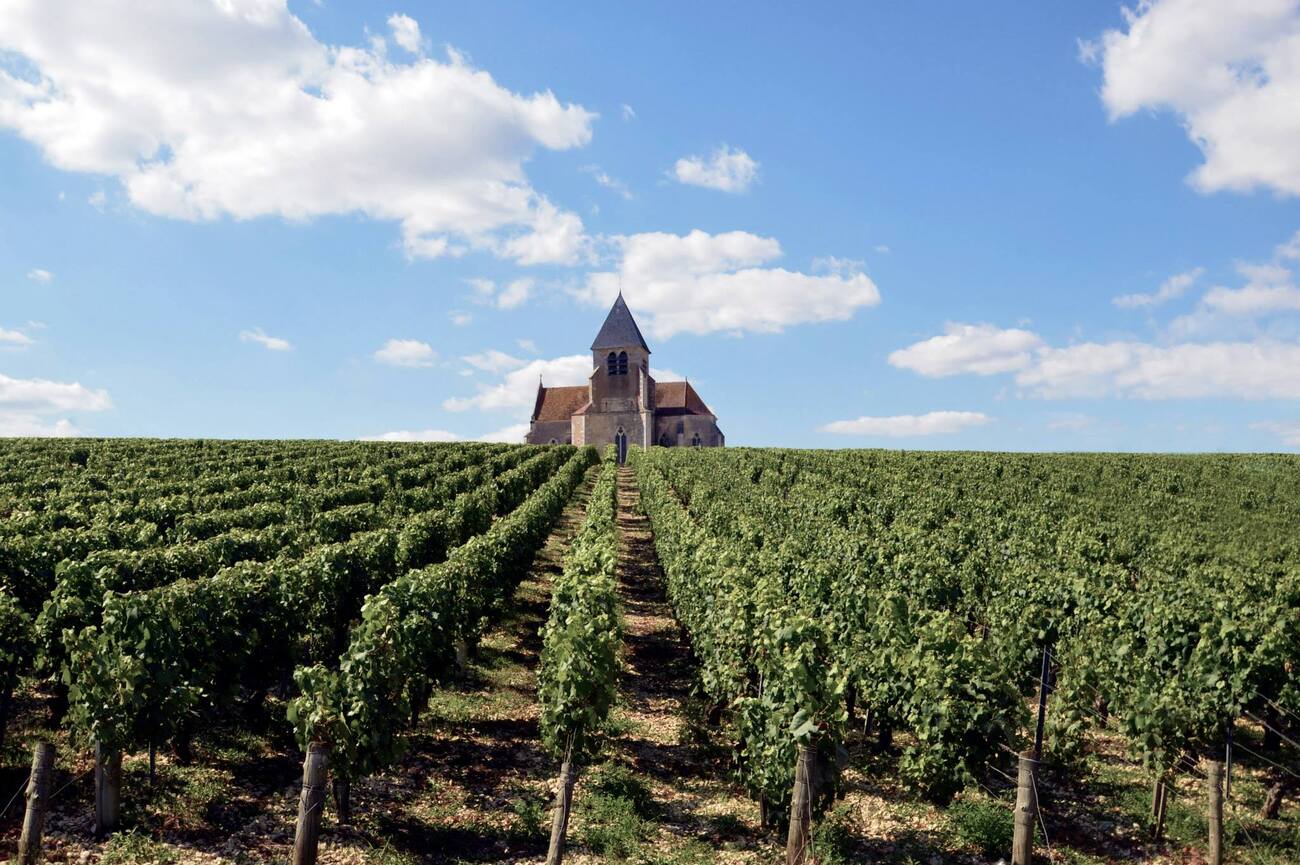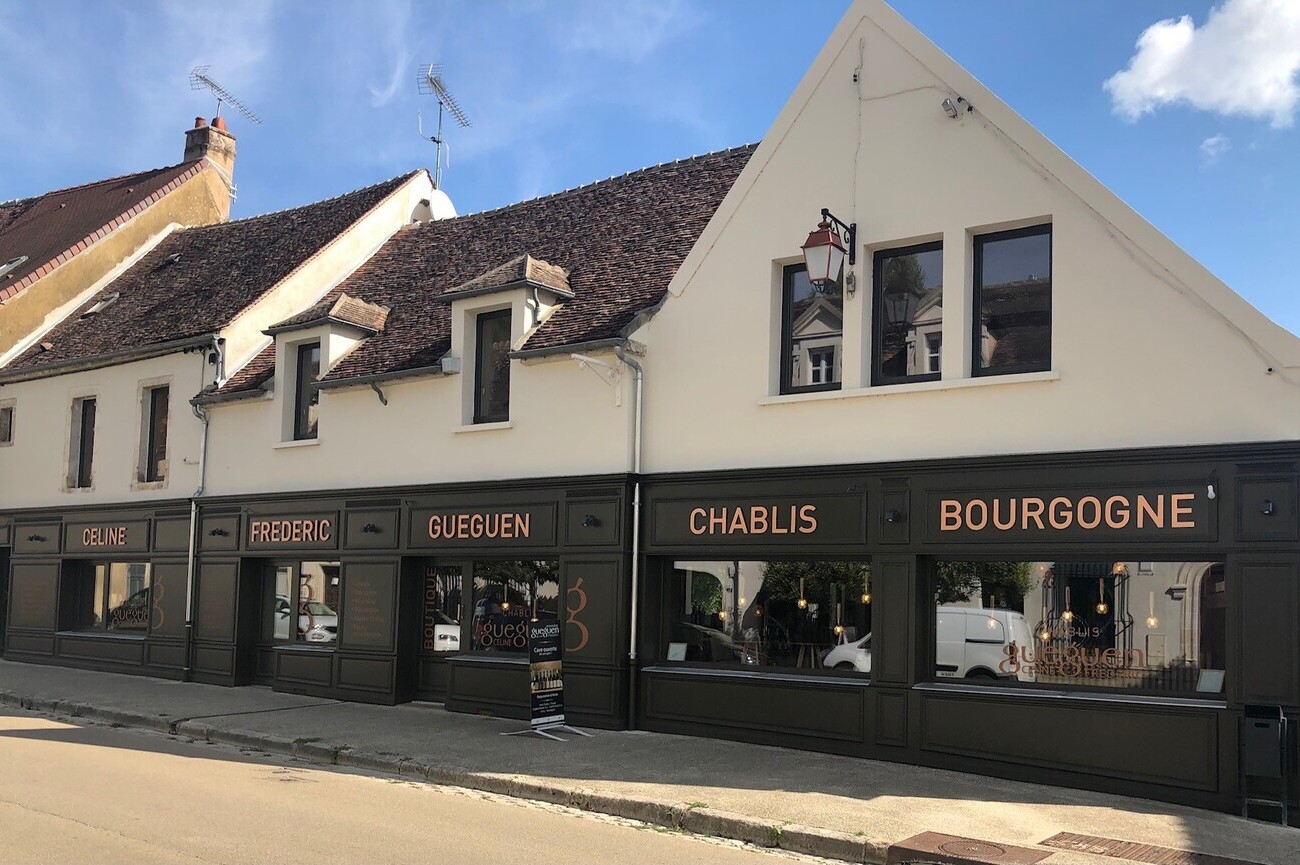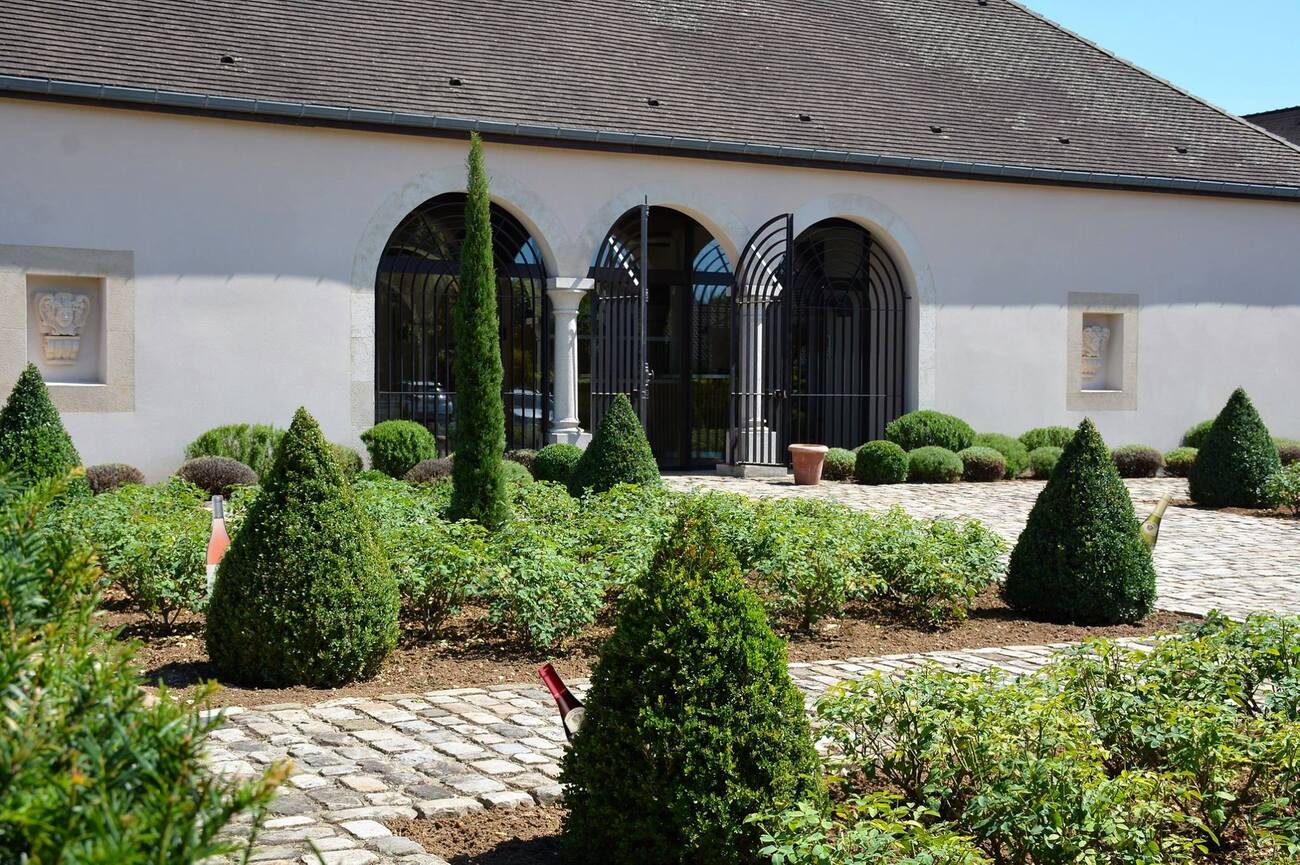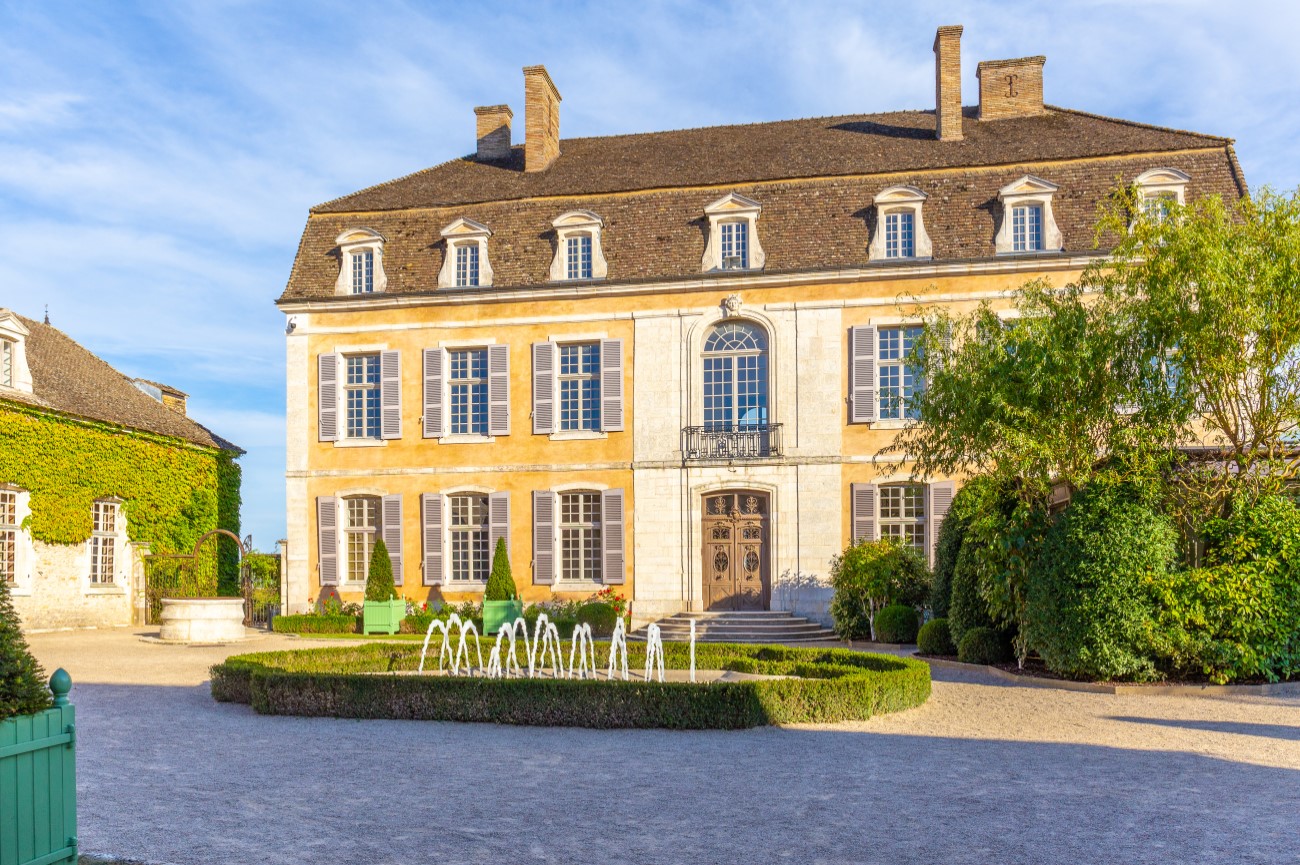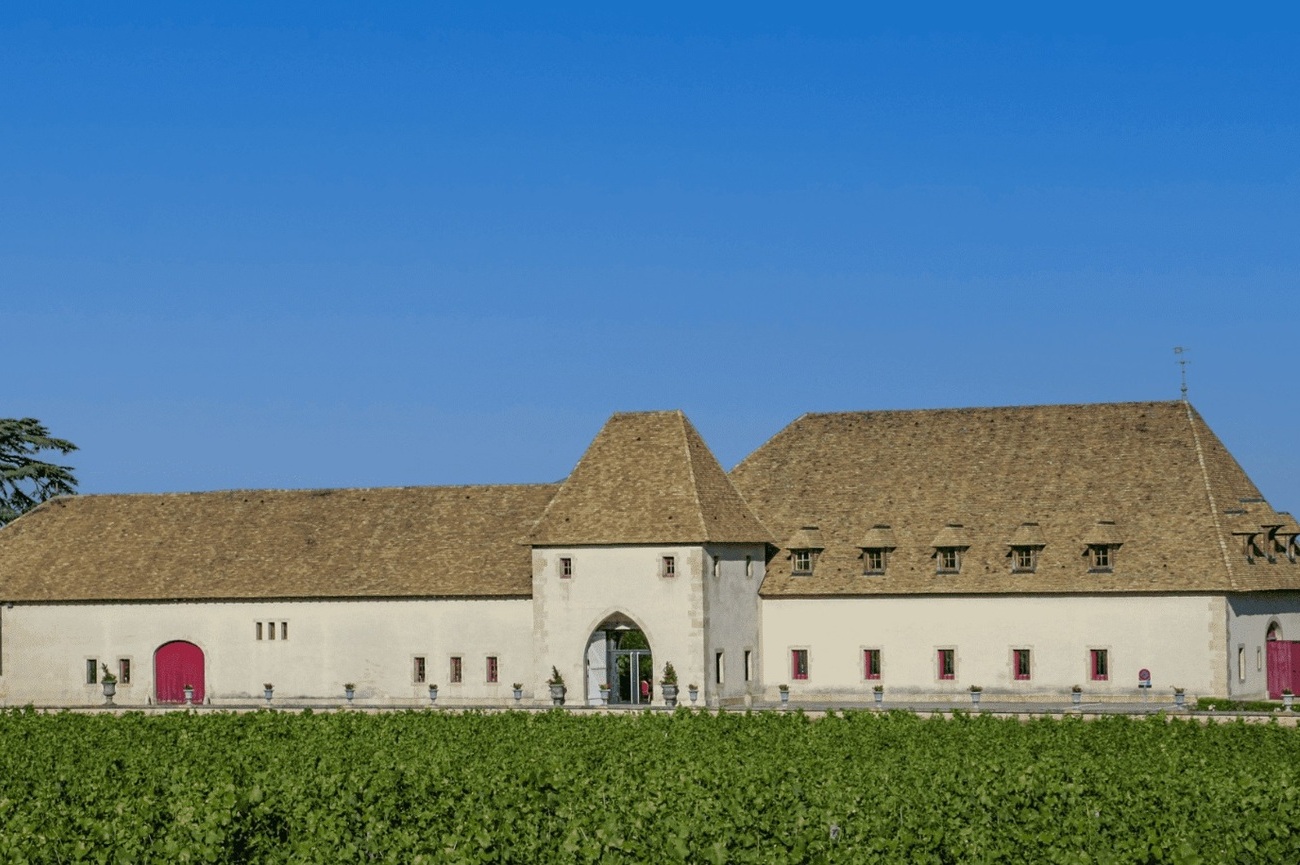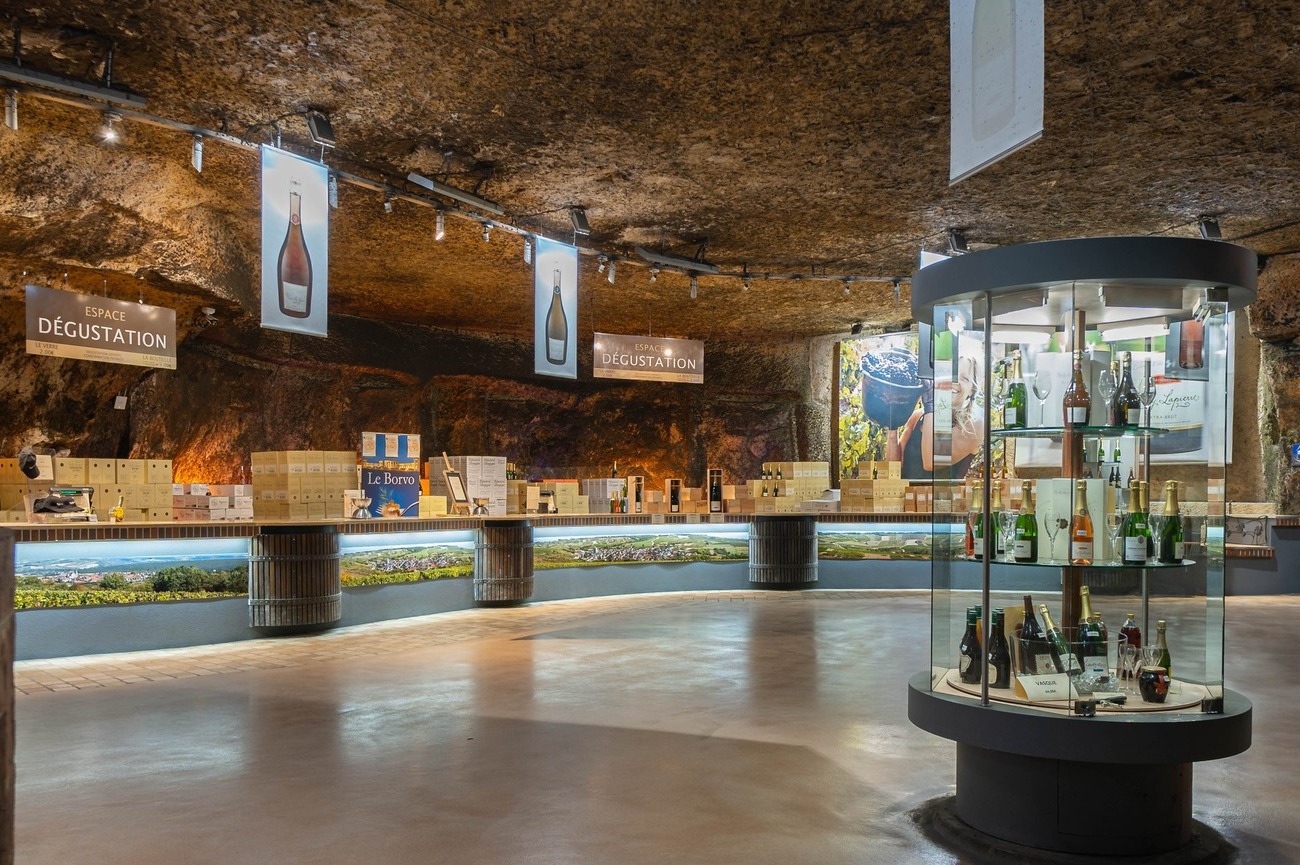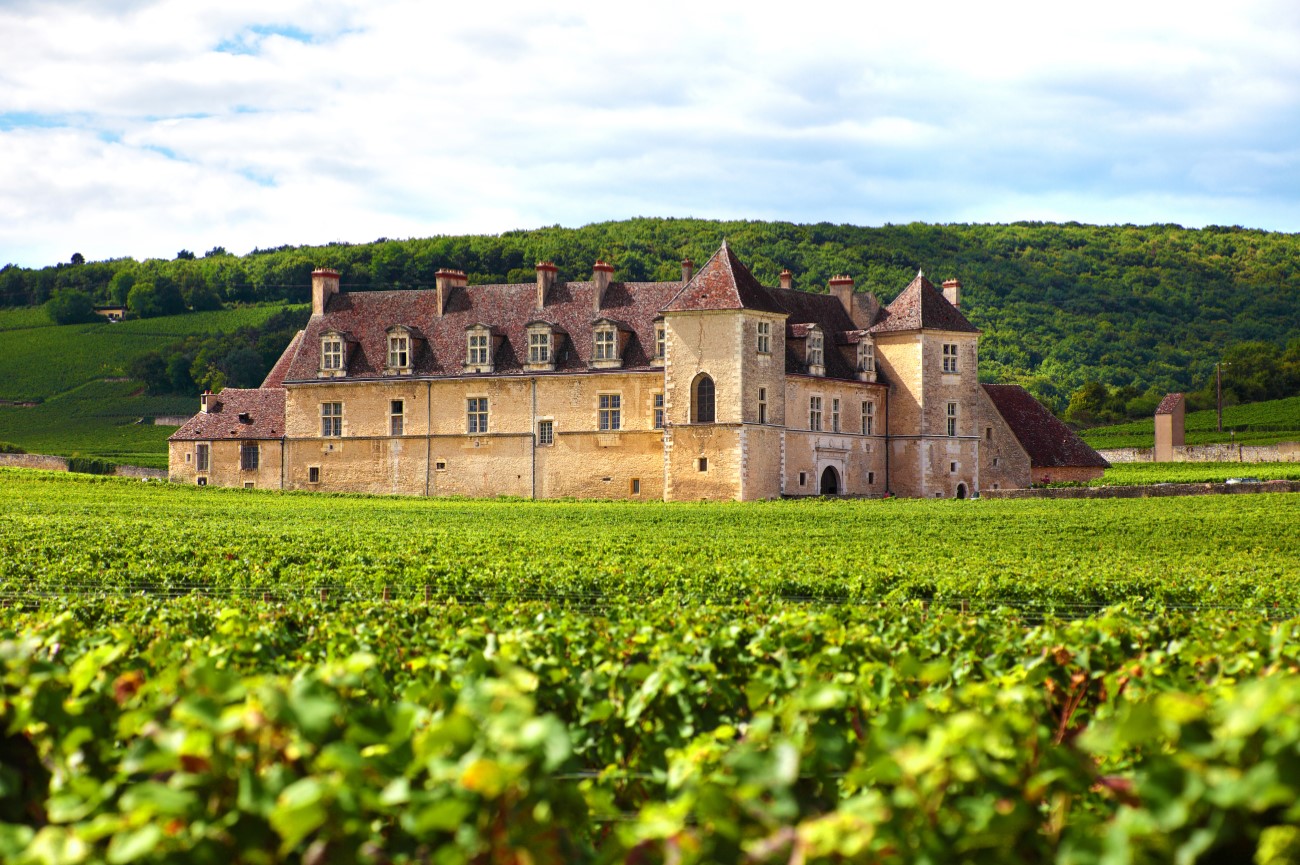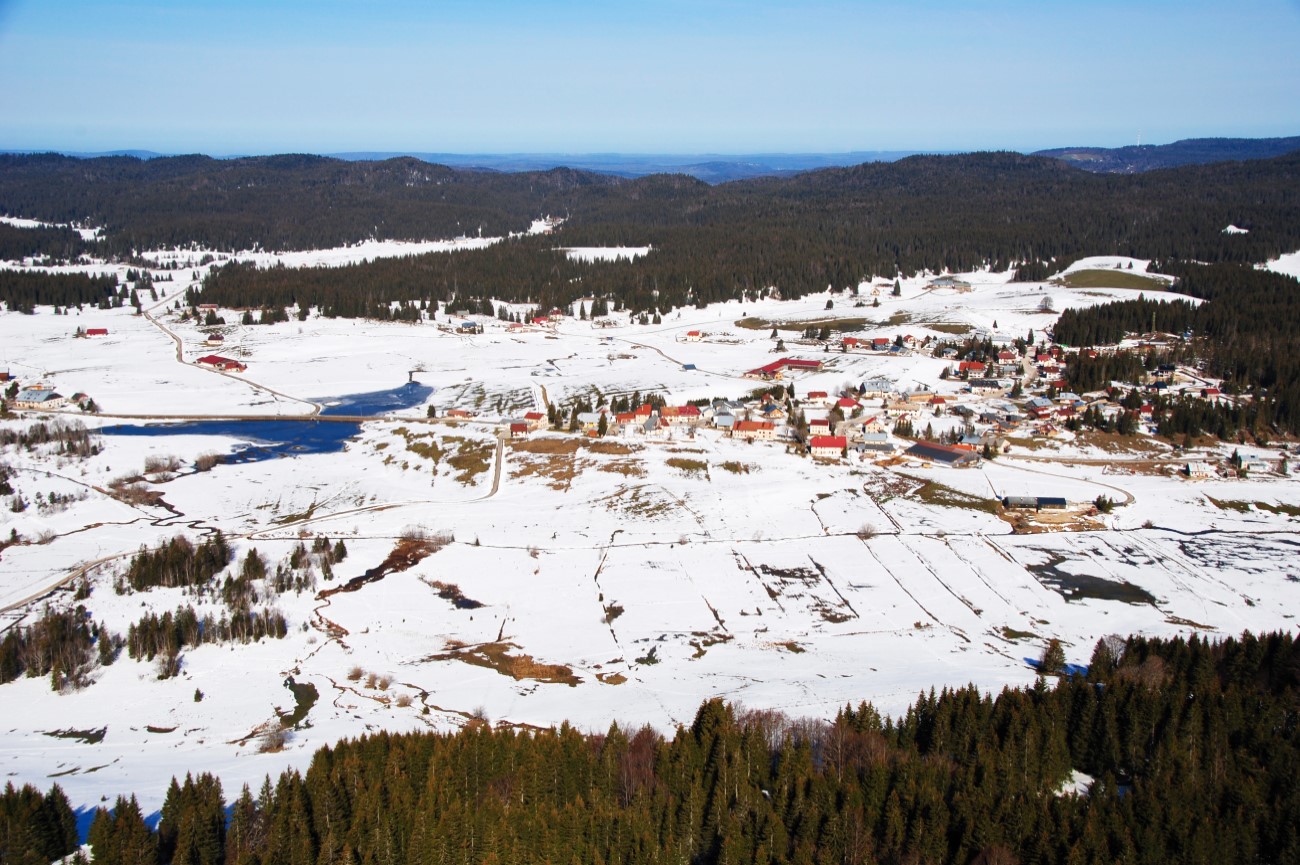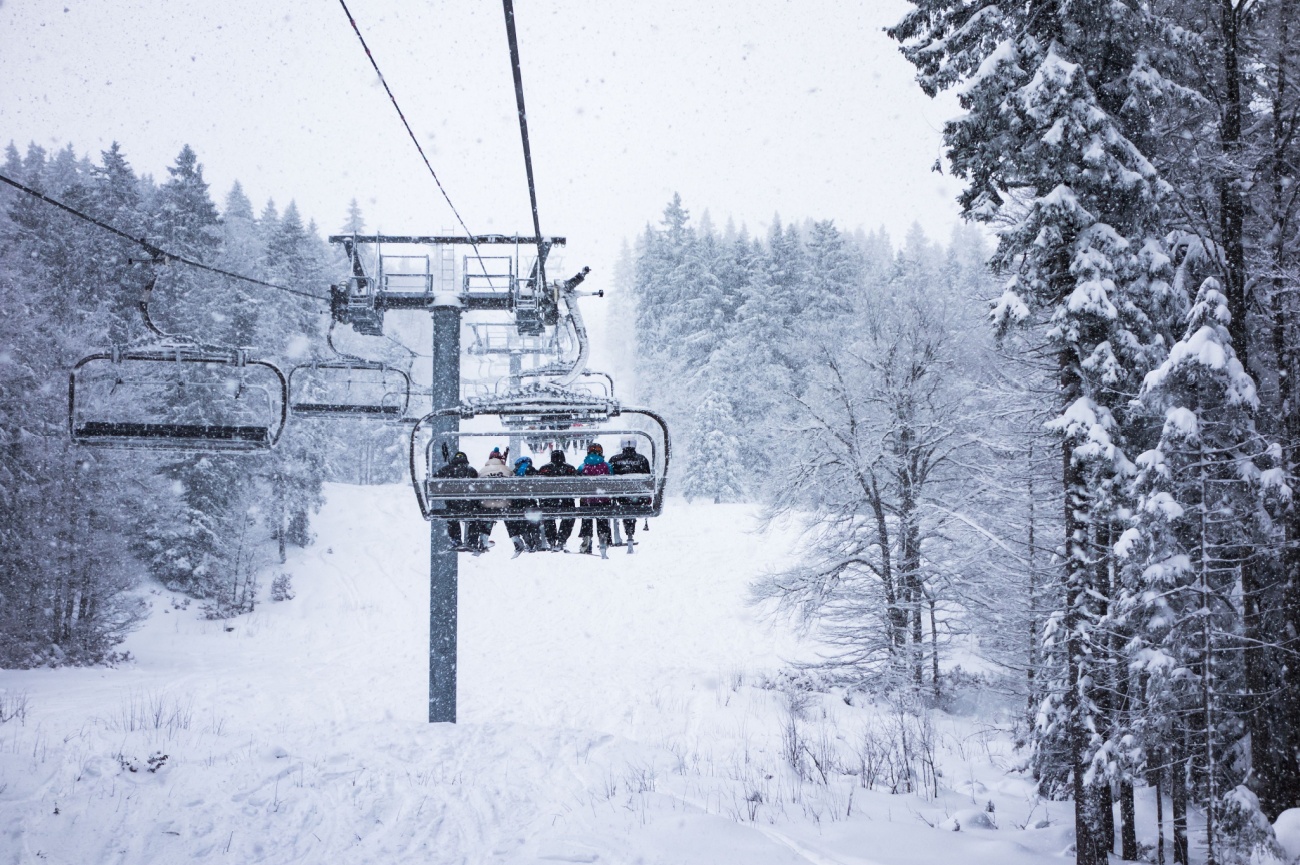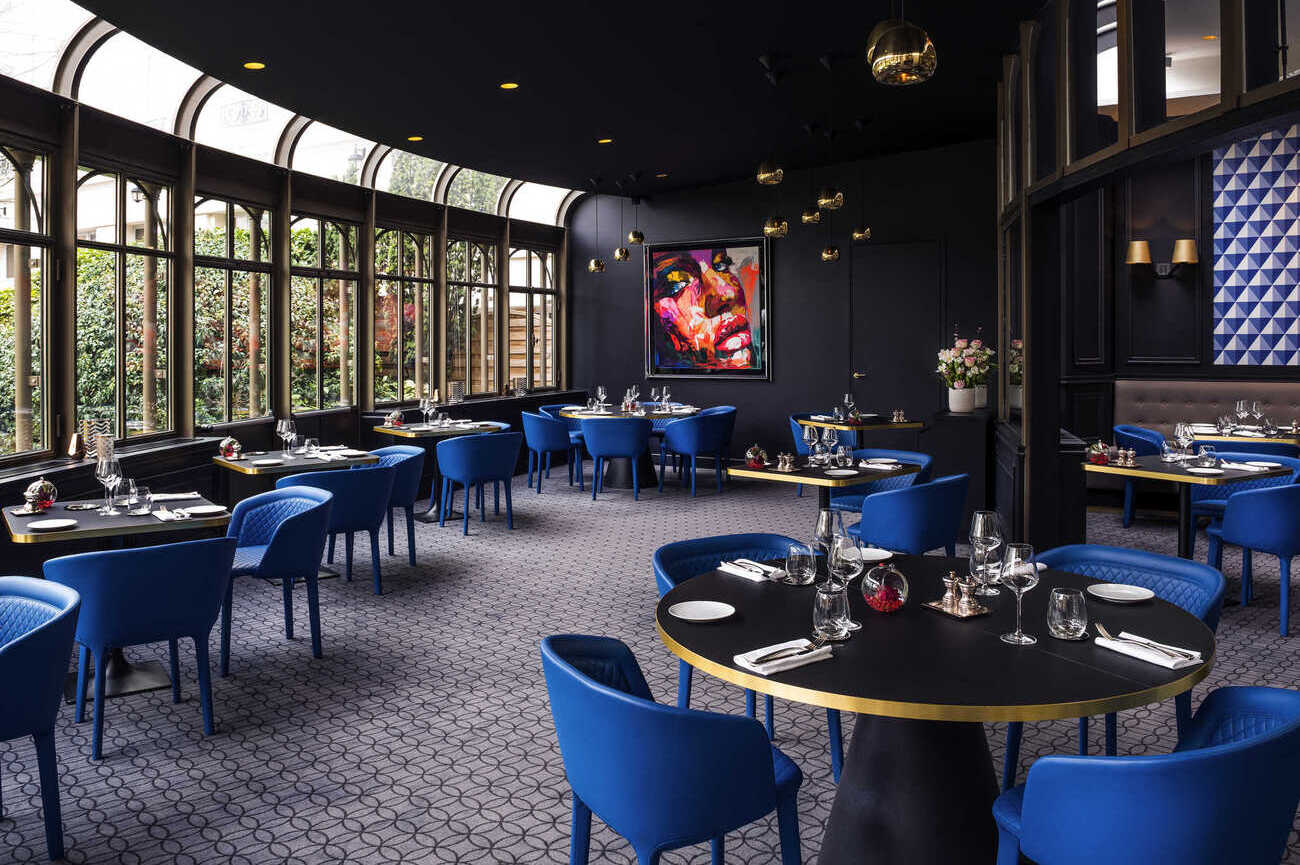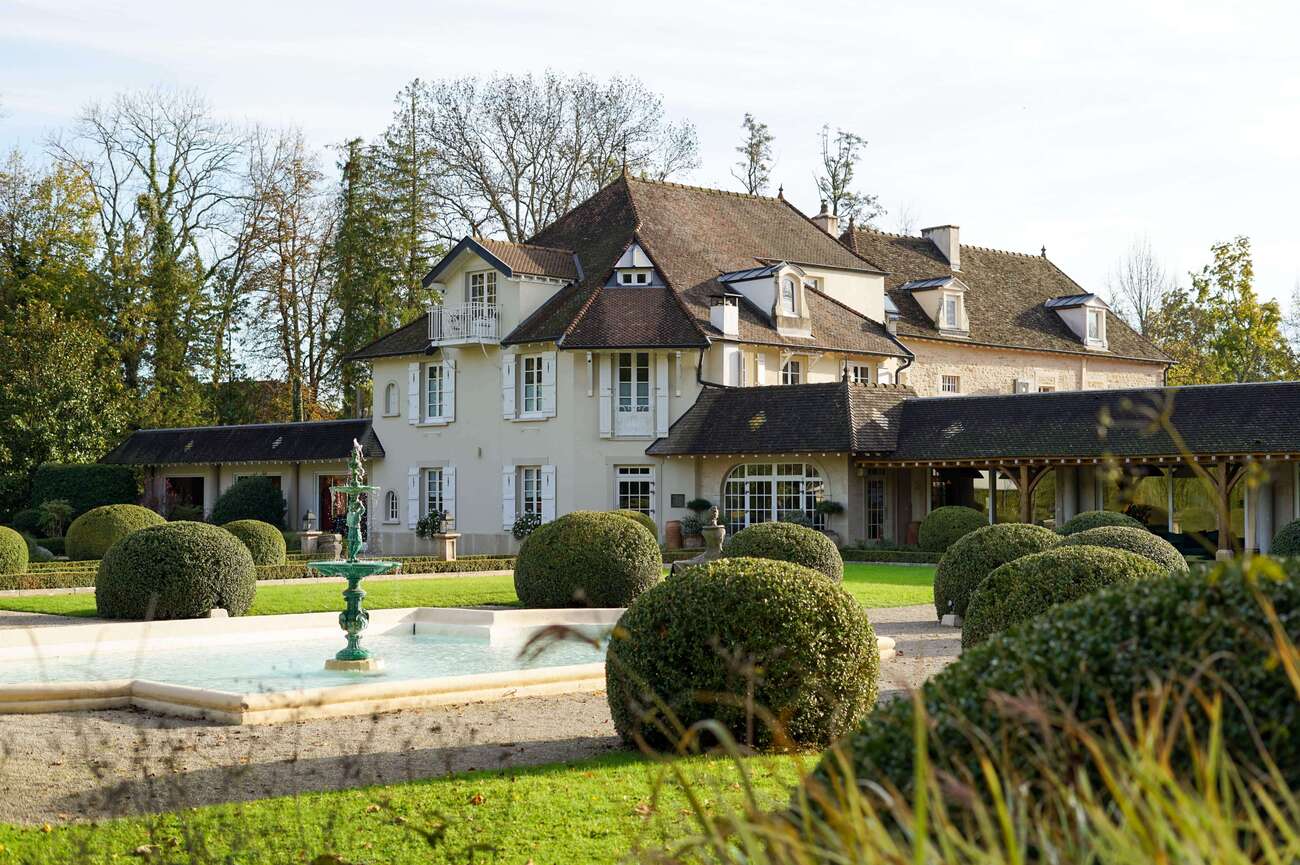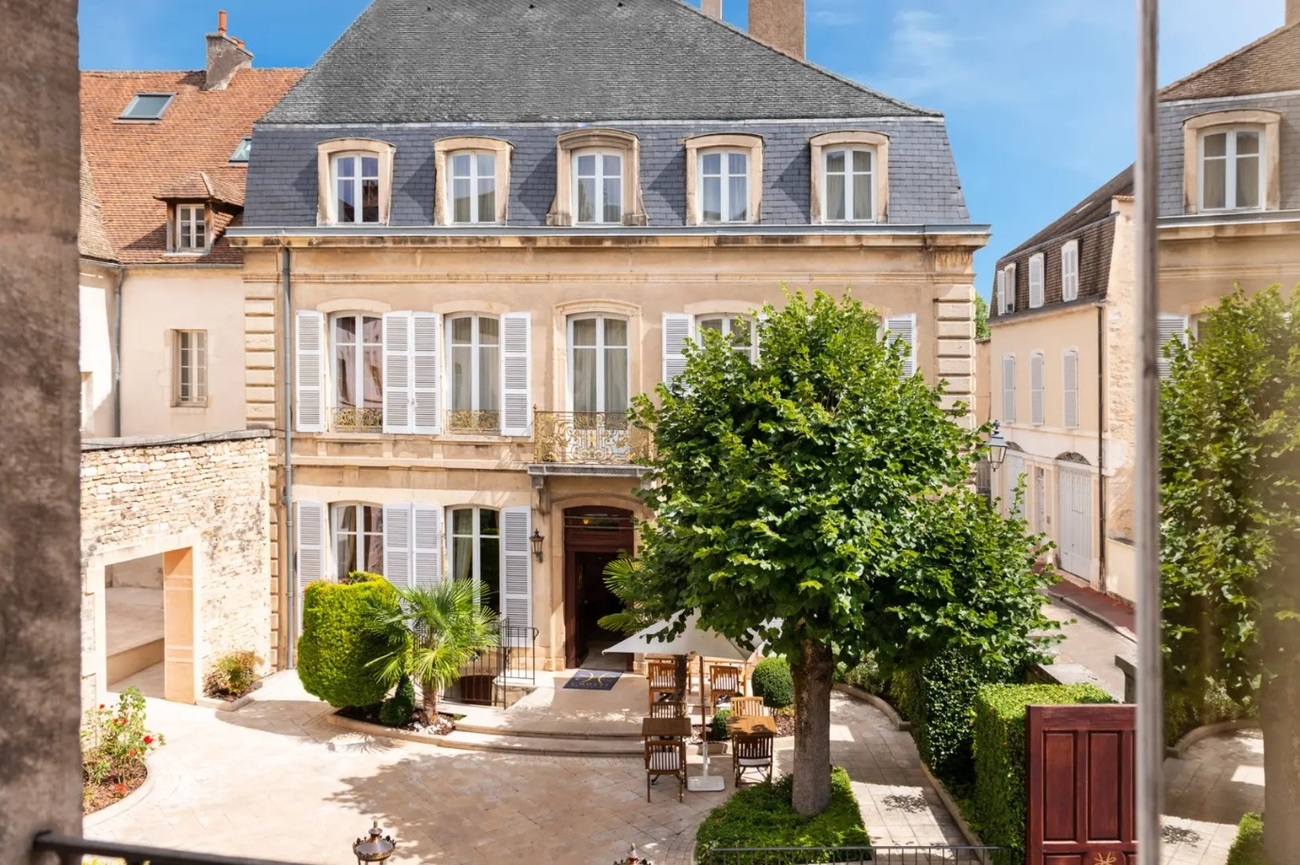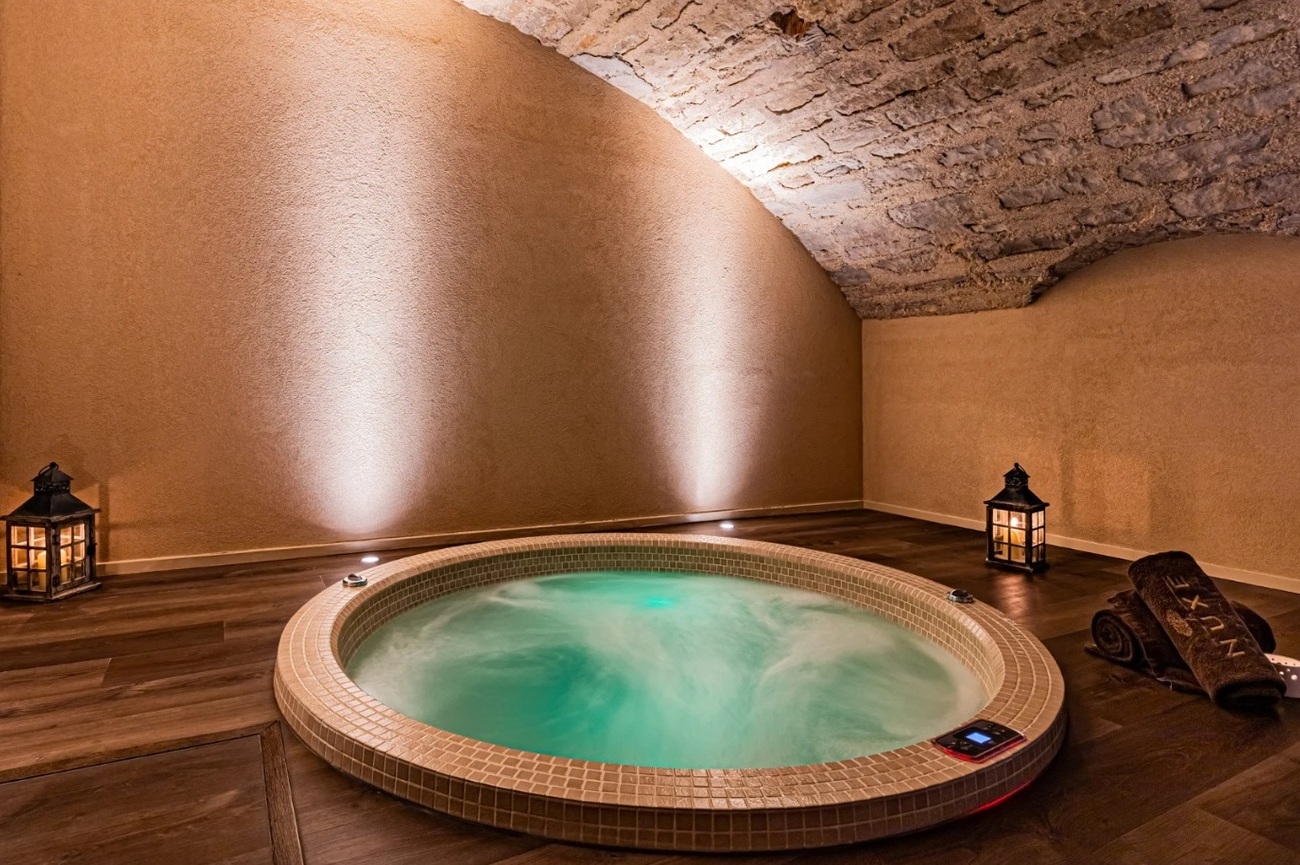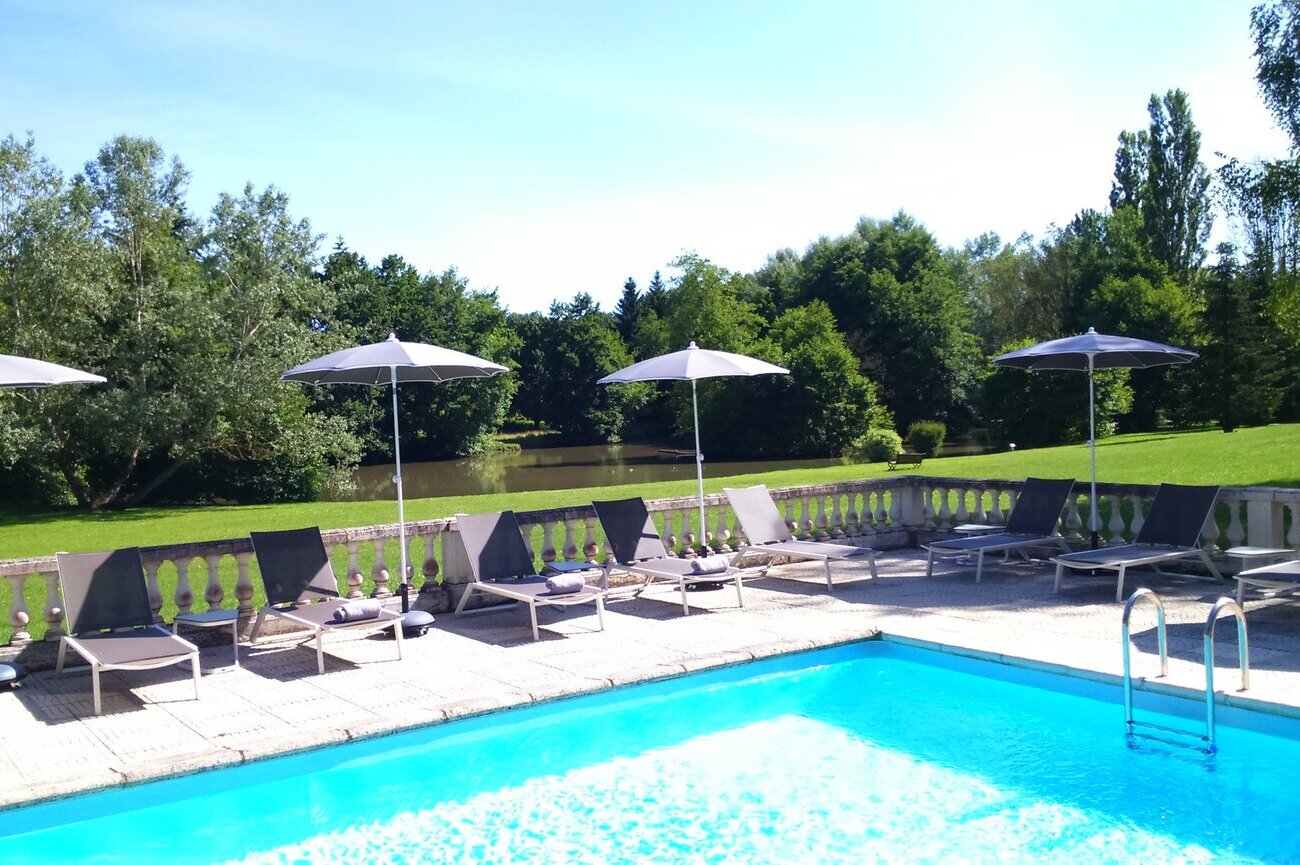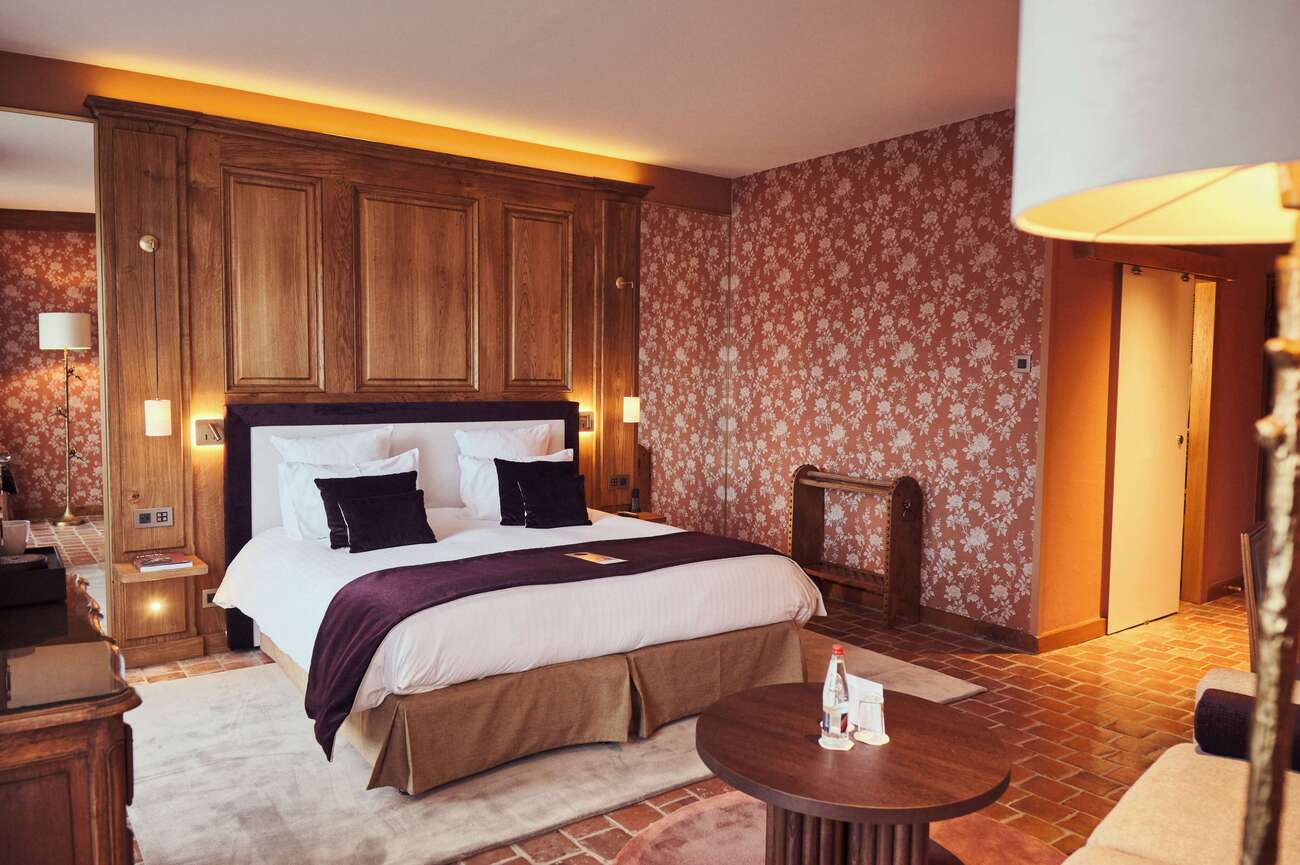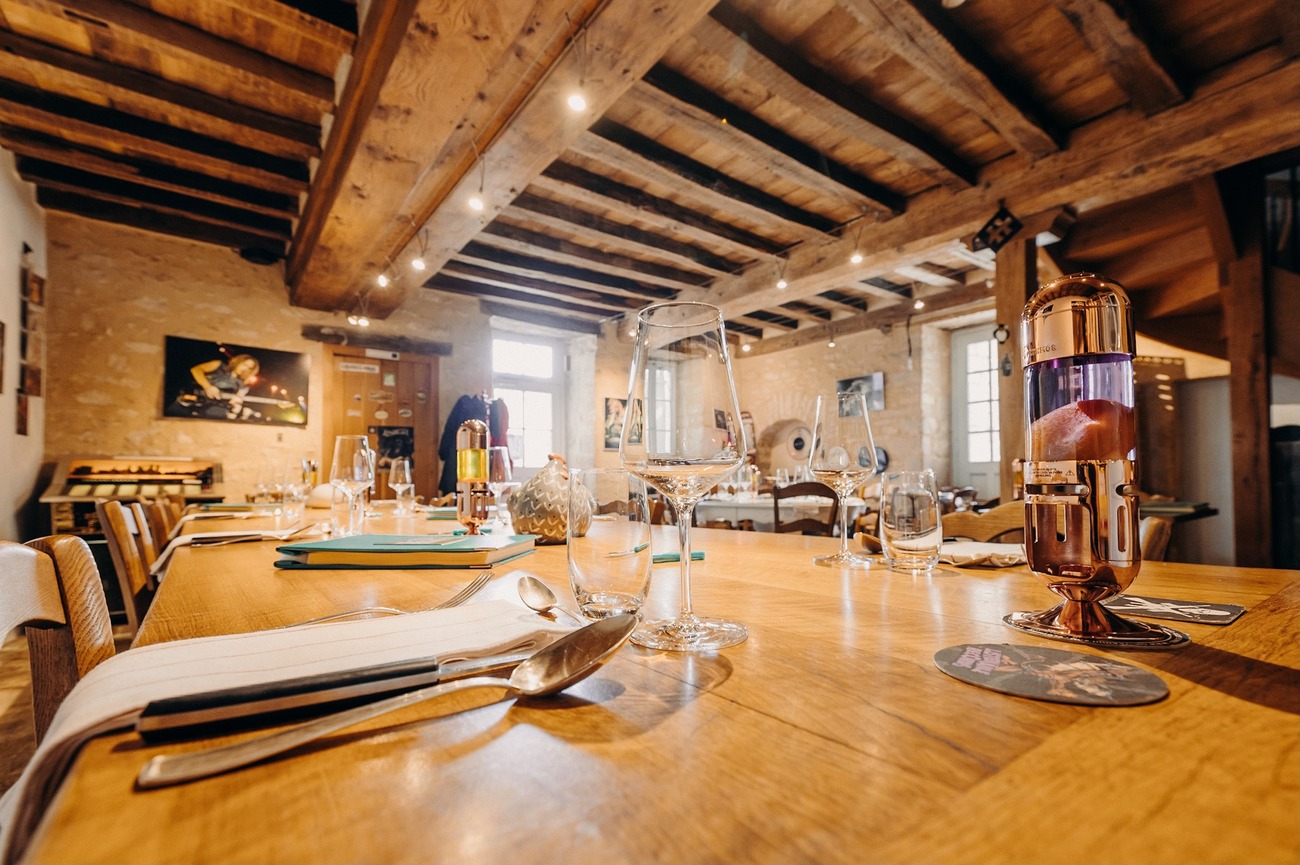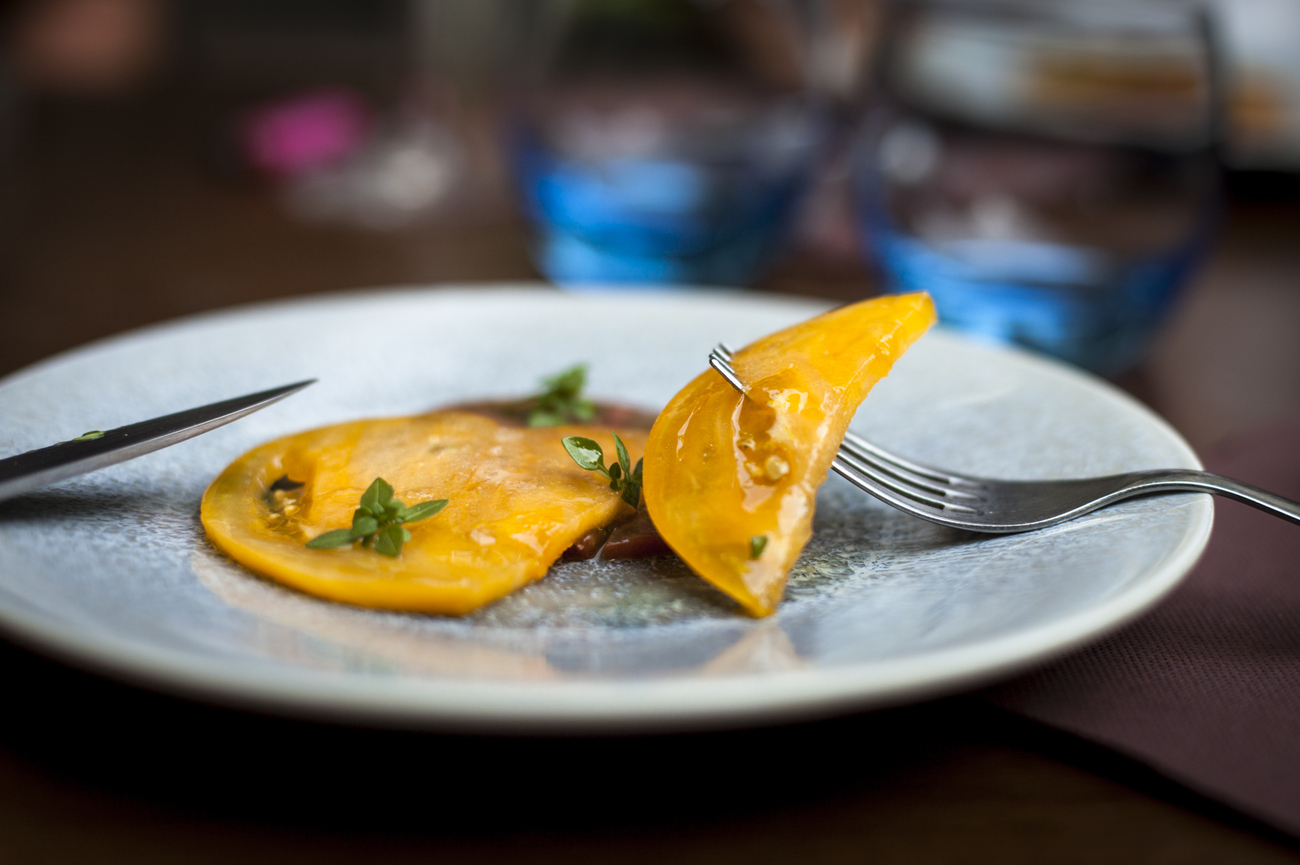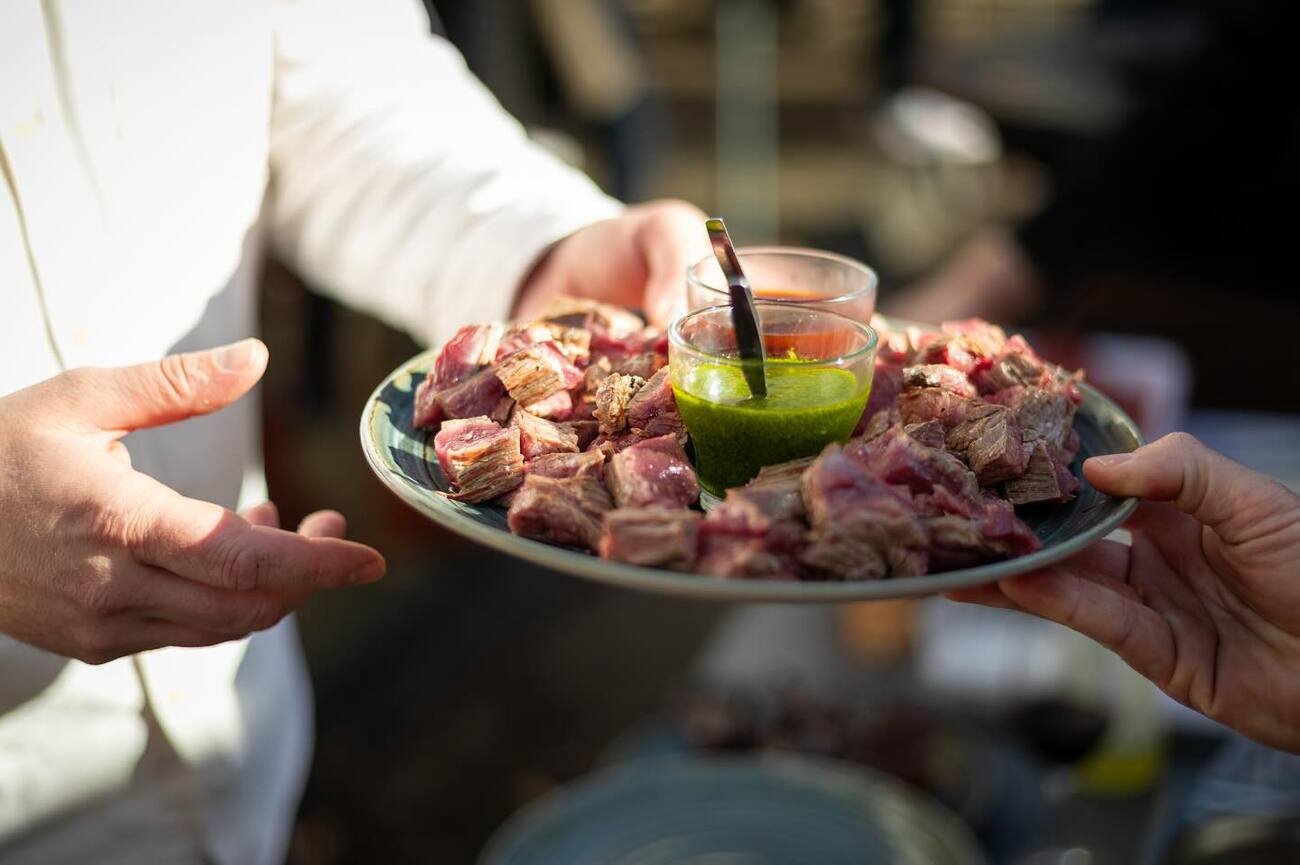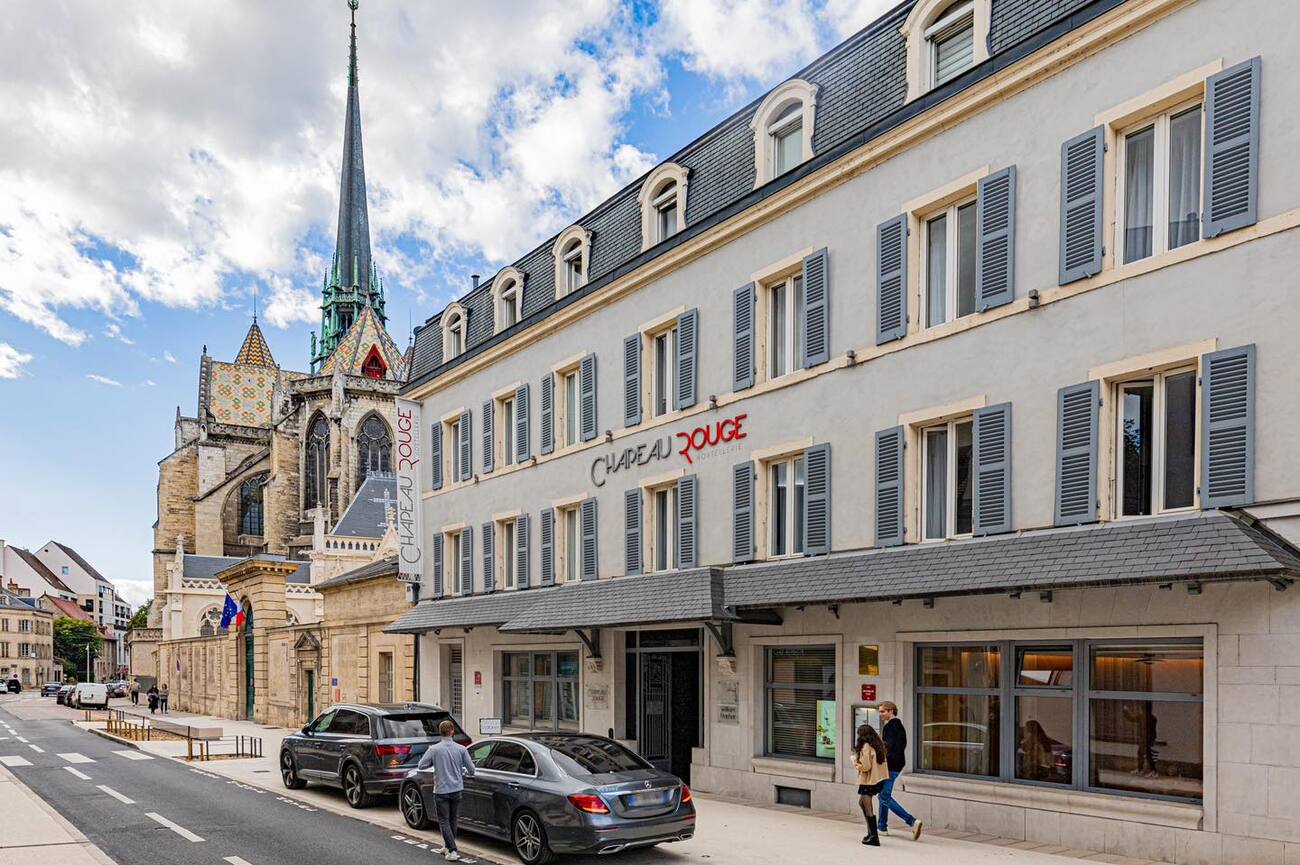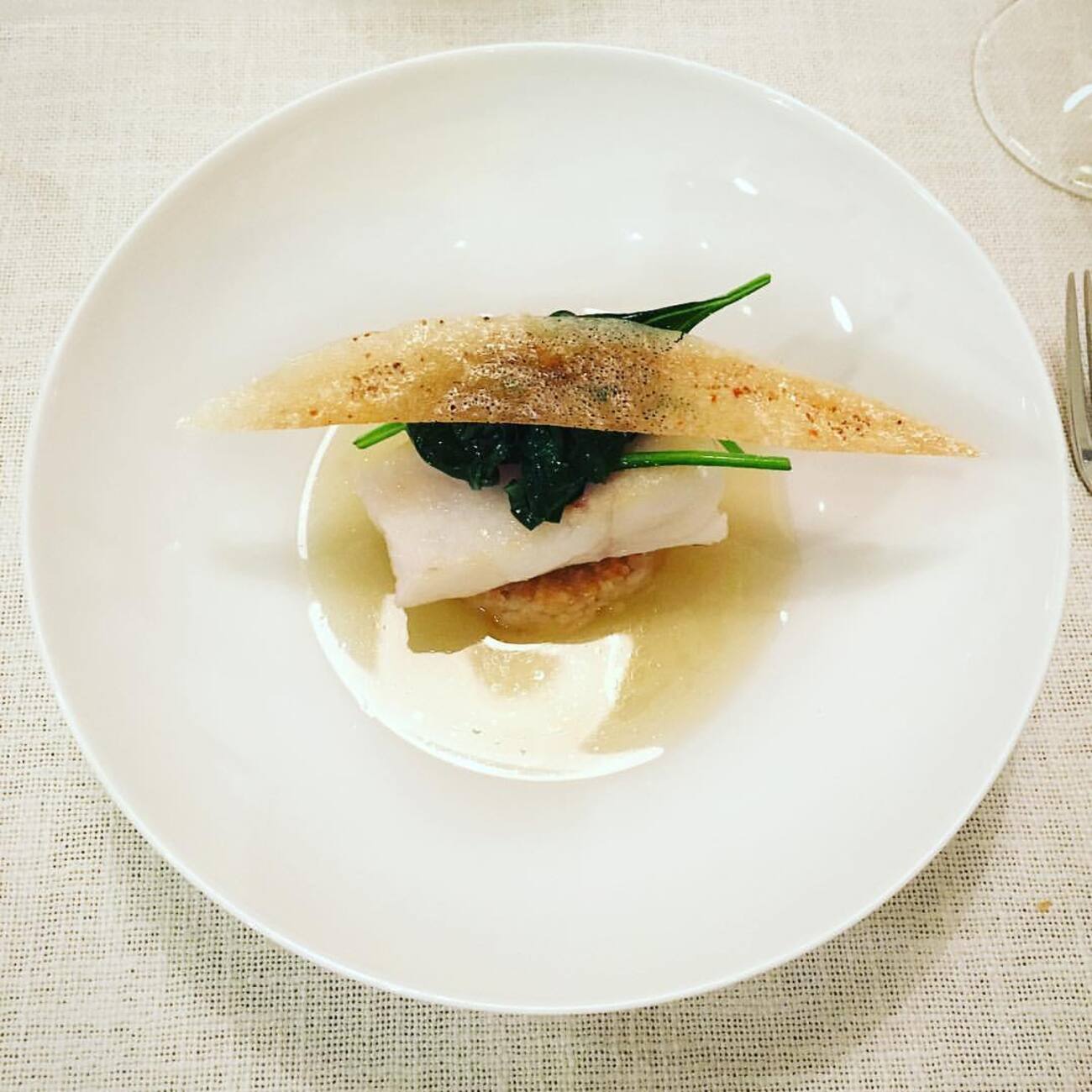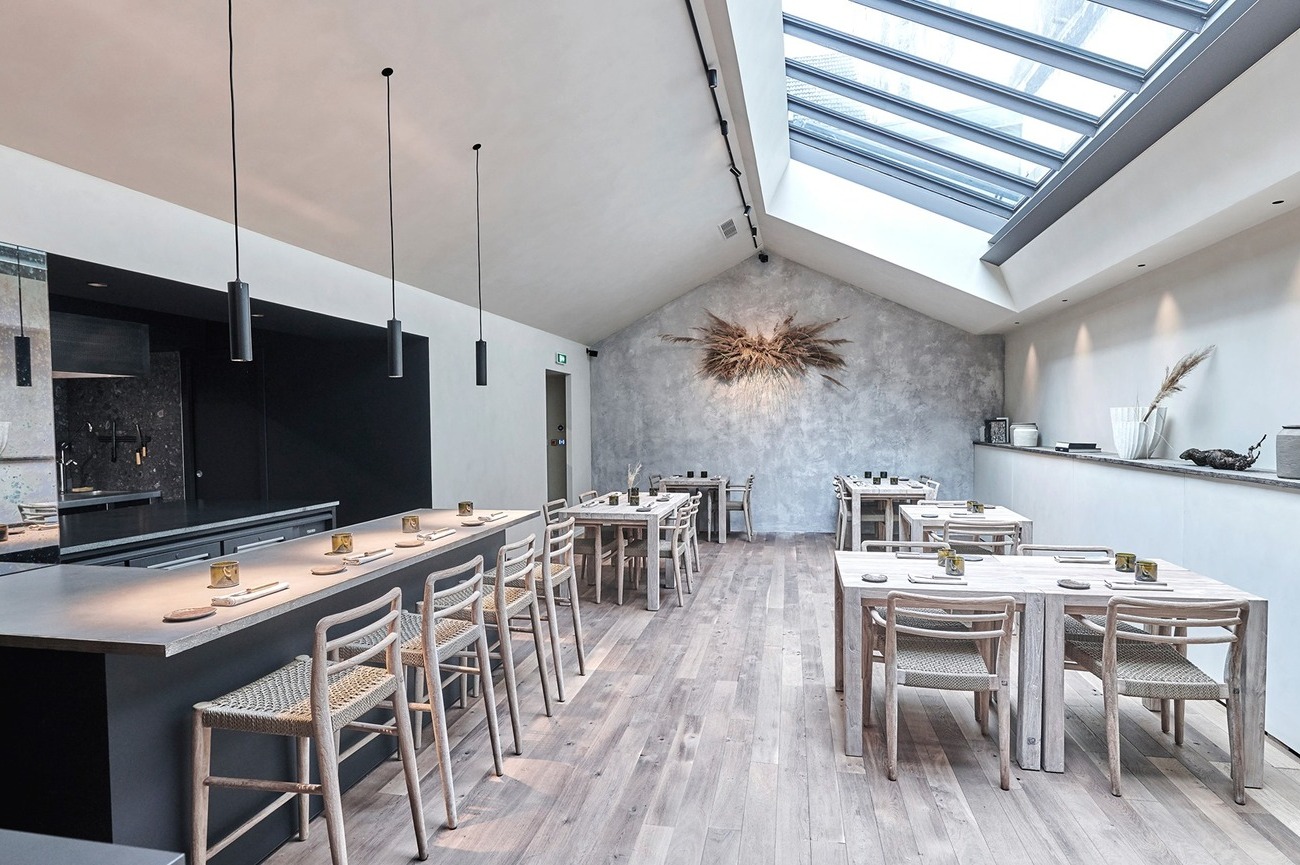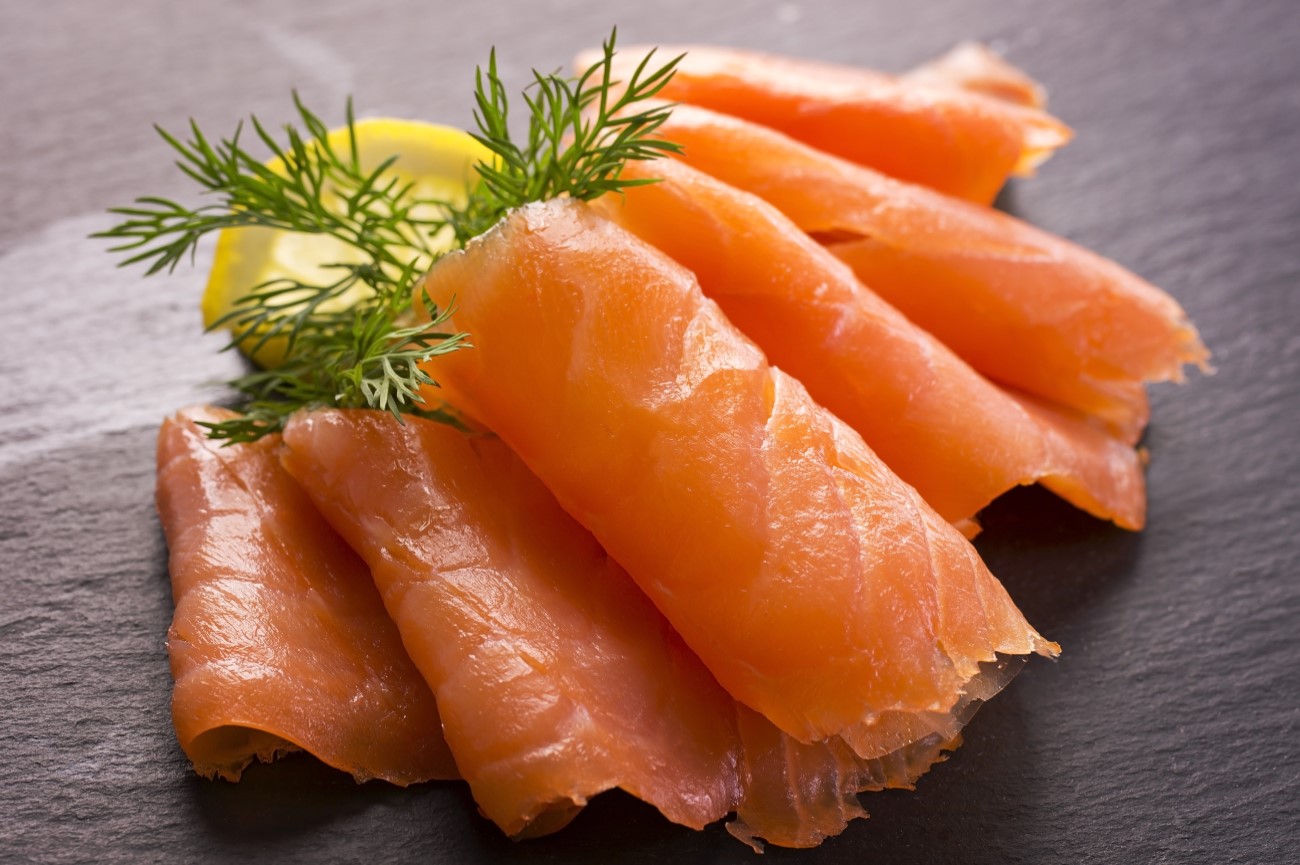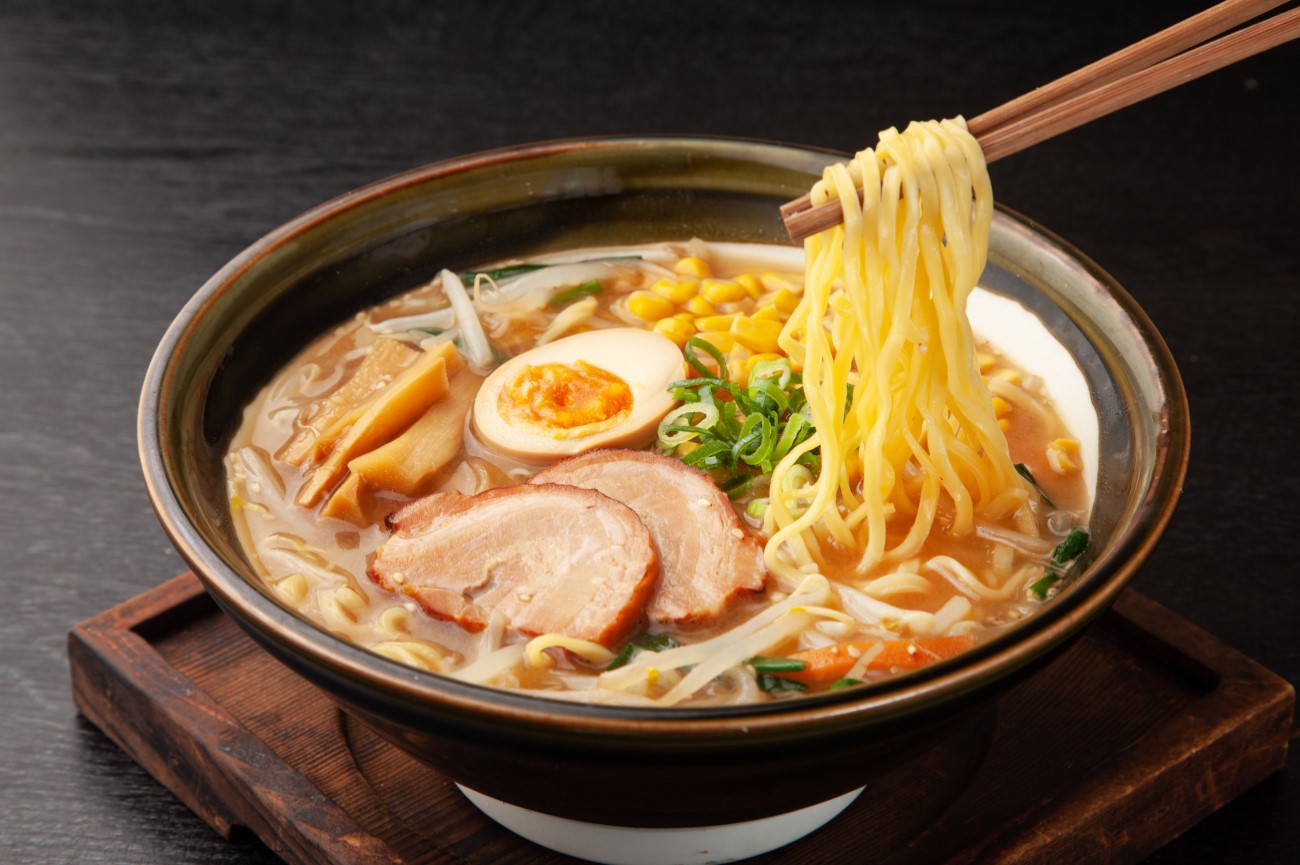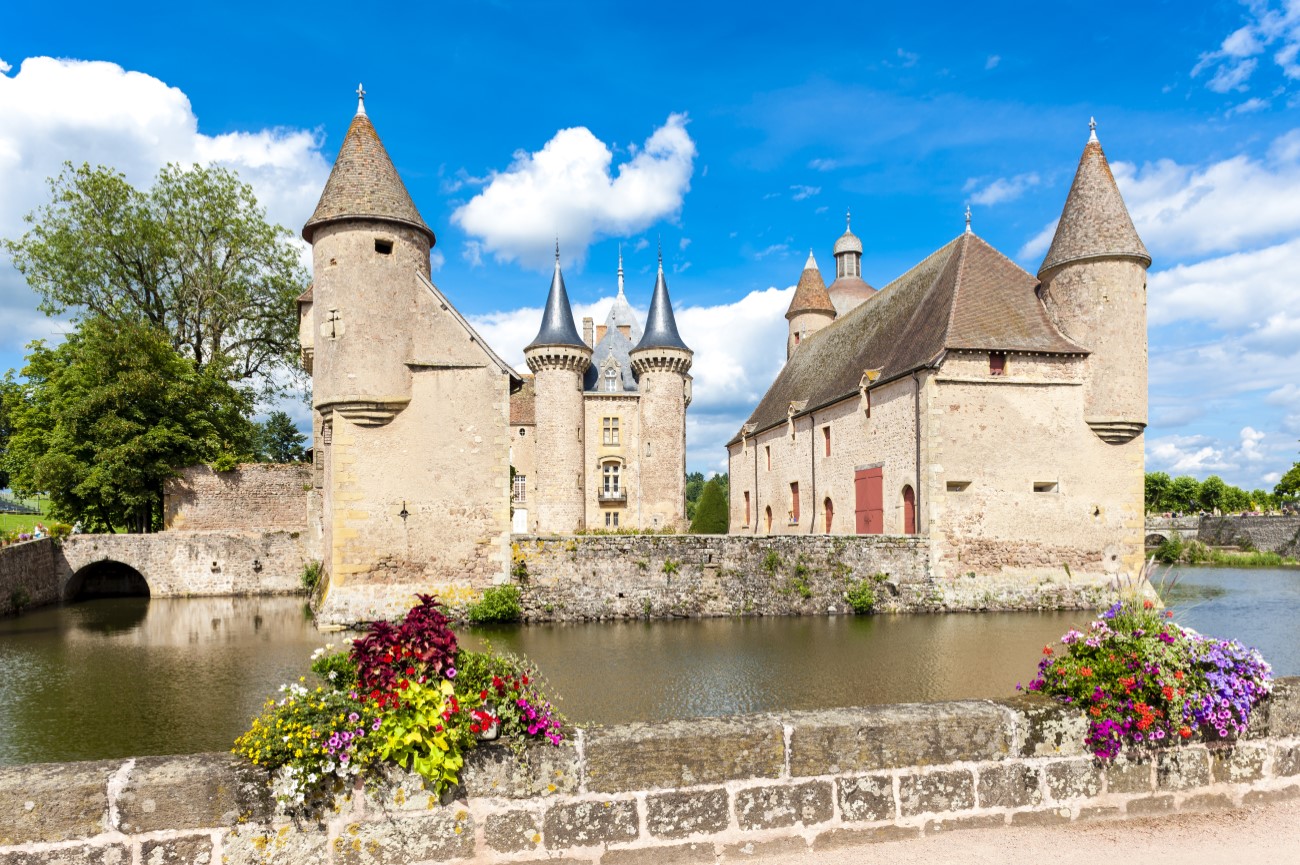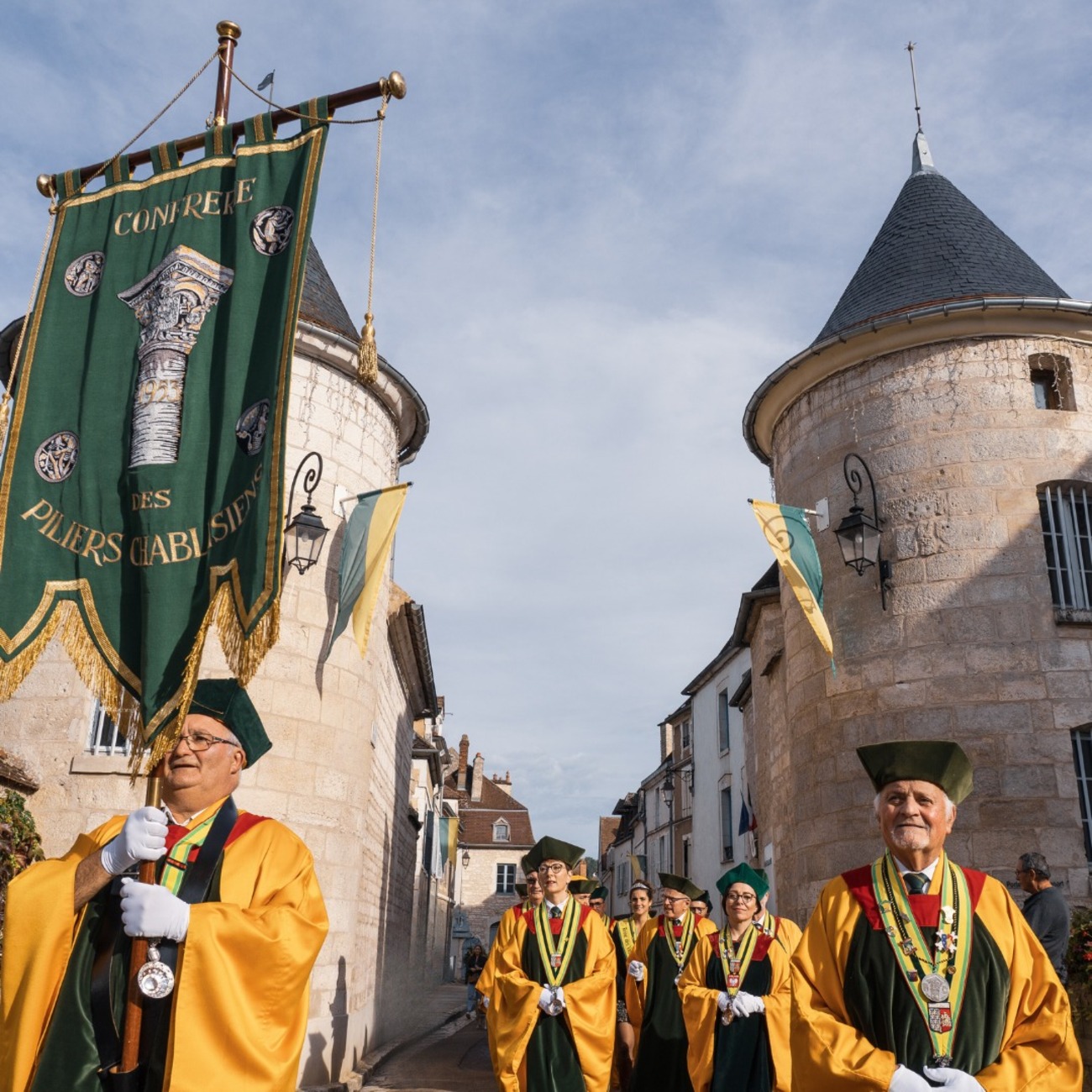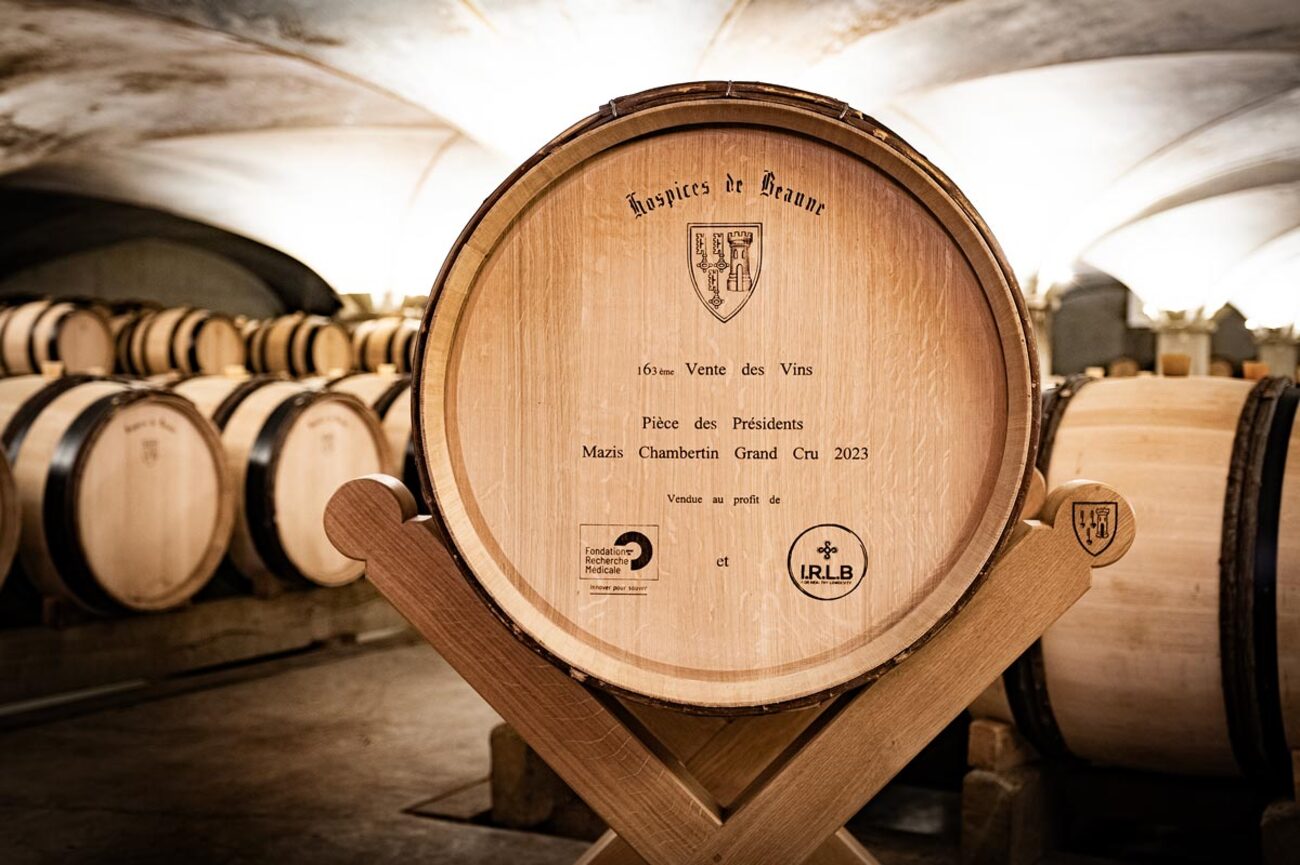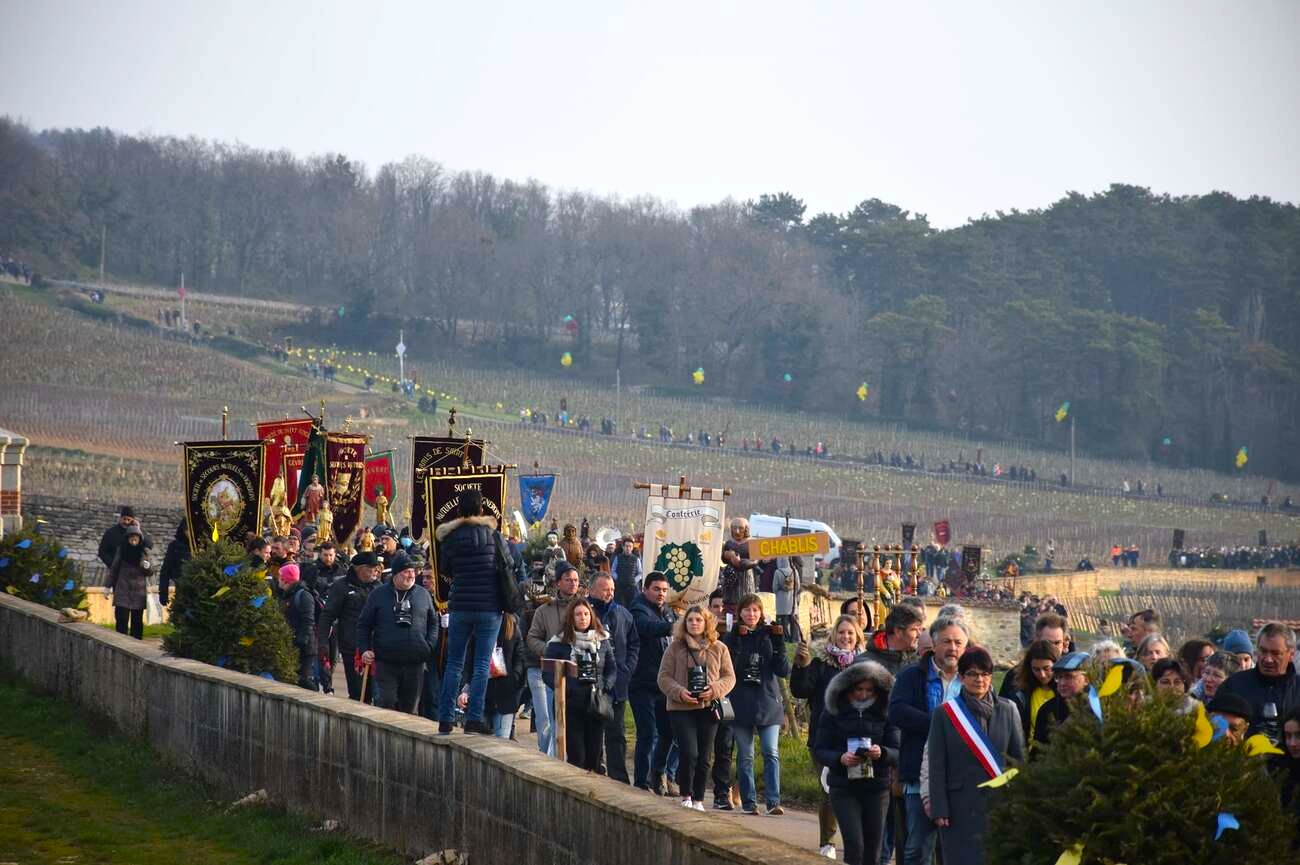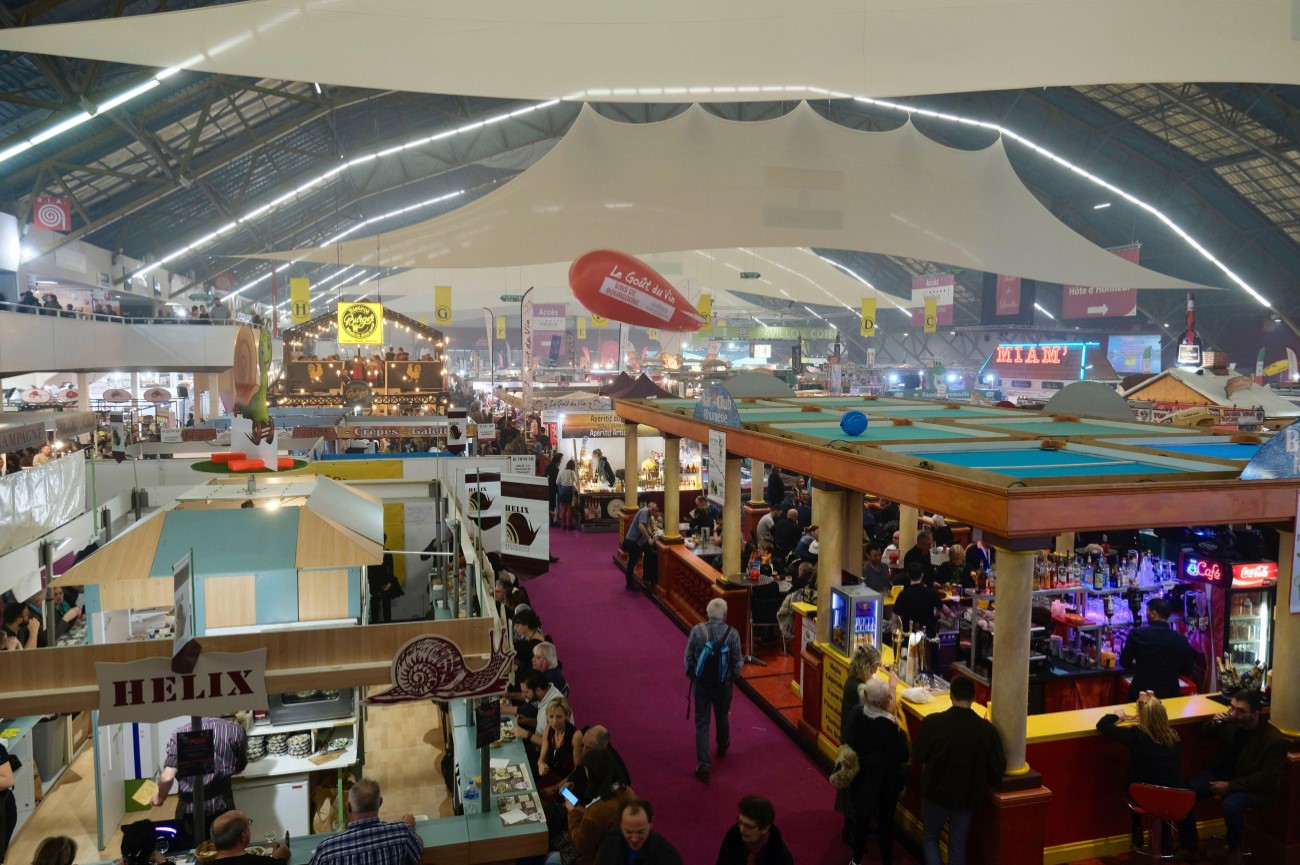Things to Do in Burgundy: 3-Day Itinerary
France’s most coveted wine region, Burgundy is so much more than bold Pinot Noirs. Visitors will find beautifully preserved medieval cities, Cistercian monuments, and UNESCO World Heritage sites galore while exploring Burgundian villages and cities. Aside from leafy vineyards and legendary wine, Burgundy is also known for its impeccable cuisine, highlighted in both Michelin Star restaurants, markets, and tiny bistros alike.
With this itinerary, you’ll dig into the region's largest city of Dijon, dapple in famous wine villages like Beaune and Chablis, and find time to squeeze in a visit to the medieval fortress town of Semur-en-Auxois. This is the ultimate three day itinerary through Burgundy!
Burgundy Tour Map
Day 1 - Dijon

Morning: Saint Michael’s Church
One of Dijon’s impressive religious sites, Saint Michael’s Church is characterized by its twin, domed bell towers. Built in the flamboyant Gothic and Renaissance style from the 15th-16th centuries, visitors can step inside to see brilliant stained glass, a soaring nave, pulpit, and intricately carved portal.
Rude Museum
An art museum highlighting the works of French sculptor François Rude, the Rude Museum is a must-see stop for lovers of art. Housed inside the former Eglise de Saint-Etienne, visitors can stroll through his monumental sculptures, including large busts and giant statues of French figures like Joan of Arc.
Liberation Square
Stroll across the sprawling Liberation Square in the heart of Dijon. Flanked by the Palace of the Dukes of Burgundy, this half-moon shaped plaza is the perfect spot to grab a cafe au lait or glass of wine and people watch.
Palais des Ducs et des États de Bourgogne
An assembly of palaces and other important buildings, the Palais des Ducs et des États de Bourgogne was once the seat of the Dukes of Burgundy. Inside, visitors will find Dijon’s Fine Arts Museum, town hall, and more.
Museum of Fine Arts Dijon
One of the oldest museums in France, the Museum of Fine Arts Dijon contains over 1,500 works of art. Housed inside the former ducal palace, visitors will find works from across the globe, including ancient Egyptian art and Impressionist paintings.
Musee Magnin
A 17th-century hotel particulier in the center of Dijon, all of the works inside the Musee Magnin were collected by the brother and sister duo Maurice and Jeanne Magnin. Mostly composed of 17th-century paintings, visitors can admire the art, scattered throughout the home in rooms like the Golden Lounge and Hercules Room.
Tour Philippe le Bon
Finished in 1460, the Tour Philippe le Bon is one of the oldest monuments in Dijon. Visitors can climb the tower's 316 steps for panoramic views of the city below.
Eglise Notre Dame de Dijon
Dijon’s most important religious site, the Eglise Notre Dame de Dijon is a striking and distinctive example of Gothic architecture, built in the 13th century. Visitors can admire several unique features, including the dramatic western facade, Latin cross floor plan, apsidioles, gargoyles, rose window, and a stately jacquemart.
Chouette de Dijon
Just one of the many animal carvings on the facade of the Notre Dame de Dijon, the “chouette” or owl is considered a good luck symbol of the city. Visitors should be sure to rub the owl for luck before leaving the city.
Marche Central
Designed after the Eiffel Tower, Dijon’s Marche Central is the best place to sample Burgundy’s best gourmet bites. Peruse the stalls in search of local products like honey, fresh baked bread, mustard, and more.
La Maison Maille Dijon
Opened in 1845, La Maison Maille Dijon is the city’s claim to mustard fame. Visitors can pop into the shop to sample different mustard flavors and grab a jar to bring home.
Day 1, Morning - Dijon Tour Map
Afternoon: Museum of Burgundian Life
Housed inside a 12th century Cistercian nunnery, the Museum of Burgundian Life celebrates folkloric traditions in the region and highlights the collection of local Perrin de Puycousin. Visitors can pop into traditional shops like a chemist, clockmaker, and butcher, and explore Burgundian costumes, antique furniture, and more.
Cathedrale Saint Benigne de Dijon
Another of Dijon’s many religious structures, the Cathedrale Saint Benigne de Dijon is fairly similar in design to Eglise Saint Michael. Finished in 1393, the cathedral was built in the Gothic style and features two stately bell towers and an impressive crypt.
Arquebuse Botanical Garden
Head to Dijon’s Arquebuse Botanical Garden to discover over 400 vines from 70 different varieties. The gardens also feature an arboretum, rose garden, rock garden, meadows, and more.
Cité Internationale de la Gastronomie et du Vin
Like its fellow Burgundian cities of Beaune and Chablis, Dijon also has a Cité Internationale de la Gastronomie et du Vin. Visitors can take a tour, learning more about the region's viticulture through interactive exhibits and end the experience with a wine tasting.
Day 1, Afternoon - Dijon Tour Map
Day 2 - Beaune & Semur-en-Auxois

Morning: Beaune
- Cité des Climats et Vins de Bourgogne Beaune: Deep dive into Burgundian viticulture at the Cite des Climats et Vins de Bourgogne Beaune where visitors will learn all about the region's legendary winemaking through interactive exhibits and tastings. Children can take part in fun activities, too.
- La Moutarderie de Fallot: While Dijon might take the cake for its authentic French mustard, La Moutarderie de Fallot is Beaune’s answer to Burgundian condiments. Make a stop at the original mustard mill in Beaune to take a tour and learn more about the history and production of moutard, which includes a free tasting, of course.
- Hospices de Beaune: Founded as a hospital for the poor in 1443, the Hospice de Beaune is one of the finest examples of medieval Burgundian architecture. Visitors can head inside to admire the sculpted wooden beams, upside down boat shaped ceiling, and vibrant frescoes. Head back outside to see the colorful, glazed tile roof. Every year, the annual and much awaited Hospices de Beaune Wine Auction is held here.
- Basilica of Our Lady: Situated in the very core of Beaune’s historic center, the Basilica of Our Lady is a 13th-century church highlighting both Gothic and Renaissance architecture. The real draw are the 15th-century Tournai tapestries inside. Sourced from Belgium, these wall tapestries depict scenes from Mary’s life.
Day 2, Morning - Beaune Tour Map
Afternoon: Semur-en-Auxois
- Cité Médiévale de Semur-en-Auxois: Semur-en-Auxois’ core is a beautifully preserved medieval town complete with a keep, church, stone gates, ramparts, towers, and more. Walking these cobbled streets will transport visitors back hundreds of years.
- Collégiale Notre Dame de Semur-en-Auxois: The Gothic centerpiece of Semur-en-Auxois’, Collégiale Notre Dame de Semur-en-Auxois is an architectural masterpiece. Take time to admire the stained glass windows, carved porch decorations, buttresses, and gargoyles.
- Pont Pinard: Visitors will find several stone bridges surrounding Semur-en-Auxois, a necessity given that the city is more than half encircled by the River Armançon. Visitors can crisscross the city using the Pont Pinard, Minimes, Fish Market, and Joly.
- Tour de l’Orle d’Or: Part of the Keep of Semur, which encompasses four different towers, the Tour de l’Orle d’Or makes for a fun visit in the summer months. Otherwise, visitors can admire it and the other three towers’ facades.
- La Promenade du Rempart: A promenade that was initially created in the 18th century to provide a place for residents to walk that wasn’t overwhelmed by the smell of the nearby tanneries, modern visitors can still stroll La Promenade du Rempart today.
Day 2, Afternoon - Semur-en-Auxois Tour Map
Day 3:
Vezelay, Auxerre, & Chablis

Morning: Vezelay
- Basilique de Vezelay (Basilica of Sainte-Madeleine): A UNESCO World Heritage site in the center of Vezelay, the Basilique de Vezelay, also known as the Basilica of Sainte-Madeleine is a Benedictine abbey church. Said to have at one time held relics from Mary Magdalene and a focal point for the Second and Third Crusades, many visitors come just to admire its magnificent Romanesque architecture.
- Maison Jules Roy: Once the home of author Jules Roy, the Maison Jules Roy offers a sneak peek into an early 20th century home. The stunning terraced gardens are the true focal point of this stop, offering striking views of the Cure Valley.
- Musee Zervos: The very house where famous author Romaine Rolland died, the Musee Zervos now serves as a small art museum highlighting works by Picasso, Miro, Matisse, and others.
Day 3, Morning - Vezelay Tour Map
Afternoon: Auxerre & Chablis
- Abbey of Saint-Germain d’Auxerre: Situated on top of Saint-Germain’s tomb, the Abbey of Saint-Germain d’Auxerre is the city’s most famous landmark. Opened in 1398, the abbey was built in the Gothic style and founded by Queen Clothilde. Situated overlooking the River Yonne, the soaring flying buttresses and Gothic cloister make this a must-see site. Don’t forget to descend down into the Carolingian crypt to see Saint-Germain’s 9th-century tomb and the oldest murals in France.
- Cathédrale Saint-Etienne d’Auxerre: Auxerre’s largest cathedral, the Cathedral Saint-Etienne d’Auxerre is a masterpiece of flamboyant Gothic architecture. Construction began on the cathedral in 1215, although an 11th-century Romanesque church once stood on the site. Visitors can admire the elaborate north and south transepts, flying buttresses, rose window, andmore. Like the Abbey of Saint-Germain, Auxerre’s Cathédrale Saint-Etienne d’Auxerre was also built on top of 11th-century Carolingian crypts.
- La Tour de l’Horloge: Situated in the heart of Auxerre’s historic core, La Tour de l’Horloge was once a part of the city’s fortifications. Built in 1483, the tower's clock has been in operation since the 17th century. While visitors can’t go inside, simply walking beneath the tower is enough to transport you back to Medieval Auxerre.
- Eglise Saint-Eusèbe d’Auxerre: A more humble example of Auxerre’s religious sites, Eglise Saint-Eusebe d’Auxerre is located in a southerly corner of the historic center. Built in the 7th century, visitors can head inside to see the pretty, white nave, choir, and a 9th-century relic known as the Shroud of Saint Germain.
- Cité des Climats et Vins de Bourgogne: From tasting workshops to learning more about Chablisienne terroir, the Cité des Climats et Vins de Bourgogne on the outskirts of Chablis is a wonderful spot to learn more about wine production in this distinctive appellation. Special tours are also offered for children which means this can easily be an activity the whole family will enjoy!
- Musee Vinea Passion: The Musee Vinea Passion is an elaborate collection of antique wine making tools and equipment. Visitors can get a peek at what it was like to make wine over a hundred years ago, including seeing items like giant wooden barrels and taking a ride on the Petit Train Touristique.
Day 3, Afternoon - Auxerre & Chablis Tour Map
Want to experience the best of Burgundy without the stress of planning? Let Revigorate design your tailor-made journey, from vineyard tastings to historic towns and hidden gems.
Other
Things to See and Do in Burgundy
- Château de Saint-Fargeau: A 17th-century chateau tucked about 45 minutes from Auxerre, the Château de Saint-Fargeau is a Renaissance castle designed by the famous architect Louis Le Vau who also designed the Palace of Versailles and dozens of other important French monuments. Visitors can take a tour of the property to see the architecture, apartments, chapel, toy attic, and more, up close.
- Château de Savigny-les-Beaune: A small, 14th-century chateau tucked on the outskirts of Beaune, the Chateau de Savigny-les-Beaune isn’t just a beautiful example of medieval architecture, it's also a transportation museum. Visitors will find antique aircraft, vehicles, motorcycles, tractors, and more to discover, each housed in separate museums.
- Caves of Arcy-sur-Cure: One of France’s many Paleolithic dwellings, the Caves Of Arcy-sur-Cure were decorated by hand over 28,000 years ago. Visitors can explore massive caverns, giant rock formations, and images of bison and other animals, painted on the walls. It’s thought that humans have used the cave as shelter for over 200,000 years. Keep in mind that the caves are closed in winter.
- Abbey of Fontenay: A UNESCO World Heritage site just 30 minutes drive from Semur-en-Auxois, the Abbey of Fontenay is a must-visit stop on any Burgundy itinerary. Step inside the oldest preserved Cisterian Abbey in the world, founded in 1118. Visitors can take a tour of the cloisters, common room, dormitory, forge, and other corners.
Day
Trips from Burgundy
- Cluny: A small commune in far southern Burgundy, Cluny is centered around its spectacular medieval abbey. Visitors will love discovering historic sites like Romanesque homes, the Clunic museum, and getting panoramic views atop the Cheese Tower. Cluny is just over an hour’s drive outside of Beaune, which makes this the perfect day trip!
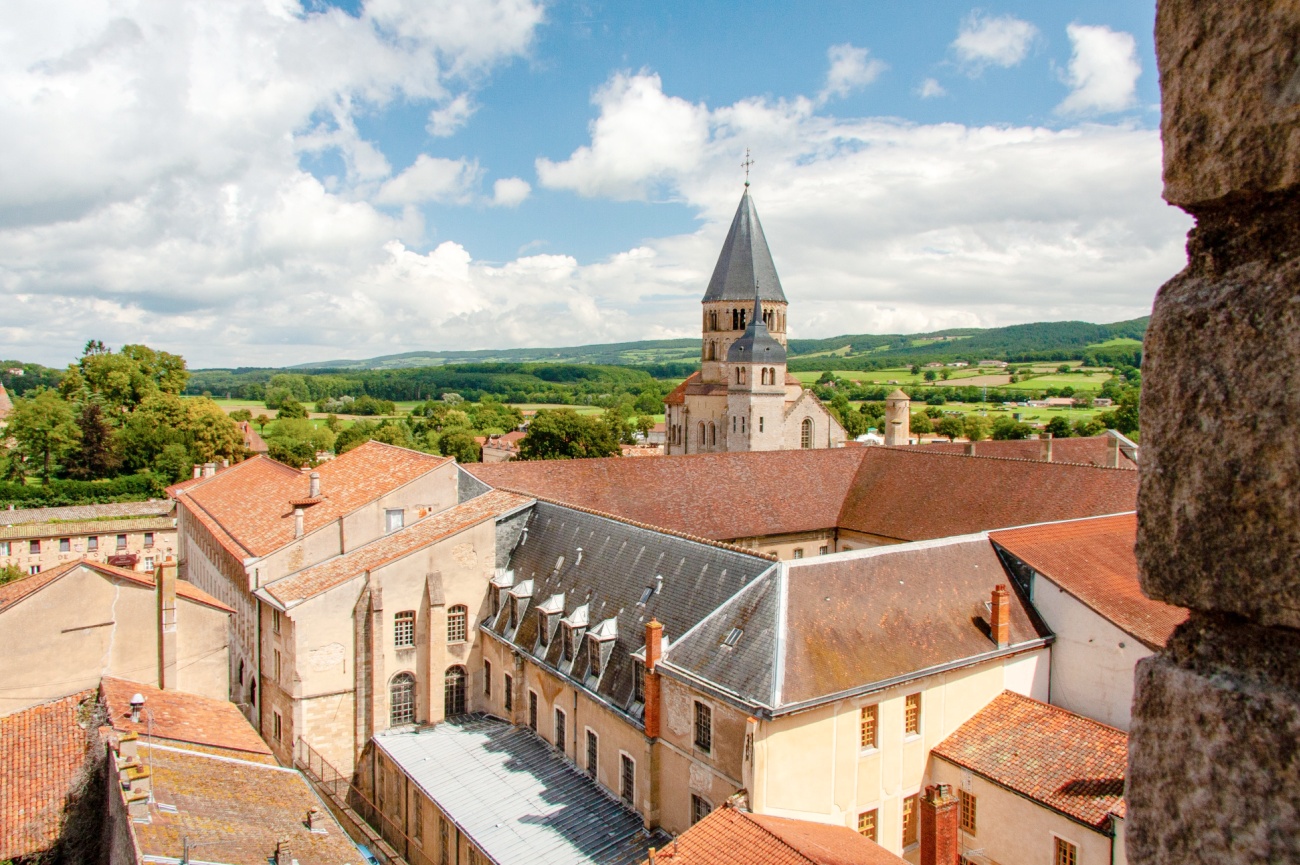
- Avallon: Located just west of Vezelay, Avallon is another quaint Burgundian village worth adding to your itinerary. Explore the terraced gardens, stroll the historic center, and seek out the Musee de Costume, which displays clothing from the 18th to 20th centuries.
- Lyon: Tucked just south of Burgundy, Lyon is France’s gastronomic capital. Punctuated by its twin rivers, the Saône and Rhône, visitors will find endless foodie delights, striking architecture, interesting museums, and plenty of sites to see.
- Paris: No trip to France would be complete without spending a day or two in the City of Light. Just 1.5 hours from Dijon by train, visitors can easily hop between these regions with plenty of time to see all the best sights, like Notre Dame, Le Louvre, and the Eiffel Tower, or head off the beaten path.
- Basel: The medieval Swiss city of Basel sits just 1.5 hours from Dijon by train. Perched right across the border of both France and Germany, visitors will find plenty of museums, greenspaces, chocolate shops, and other interesting sights to fill up a day.
- Autun: About an hour from Beaune, Autun is a town rich in Roman heritage. Visitors can explore the ancient Roman theatre, one of the largest in the Roman Empire, the Temple of Janus, and the impressive Autun Cathedral. The town offers a fascinating mix of history and architecture that makes it well worth a visit.
- Tournus: Just under an hour from Dijon, Tournus is a charming riverside town best known for the Abbey of Saint-Philibert, a masterpiece of Romanesque architecture. The town also offers lovely walking routes along the Saône river and several fine restaurants, making it a delightful cultural and gastronomic stop.
- Bibracte: Located slightly over an hour from Dijon, Bibracte is an archaeological site and museum situated on Mont Beuvray. It was once the capital of the Aedui, a Gallic tribe, and visitors can explore excavated ruins, trails through the Morvan forest, and a modern museum that brings ancient Celtic life to light.
Things
to Do with Kids in Burgundy
- Château Guedelon: About an hour from Vezelay and Auxerre, the Château Guedelon is a masterpiece of 13th century engineering — built in the 21st century! A team of stonemasons, woodcutters, carpenters, blacksmiths, and more have been slowly working on the chateau using Medieval techniques. While only open to the public in July and August, a visit to the chateau is one of the most unique activities in France, whether you’re young or old. Children can take part in fun activities like stone carving and speaking to actors who portray what life was like in Medieval France.
- Jardin des Sciences: Part of Dijon’s large Arquebuse Botanical Garden, the Jardin des Sciences is a beautiful spot to roam with little ones no matter the season. The city’s planetarium and a nature museum are also housed inside the park.
- Parc de l'Auxois: Less than a 20-minute drive from Semur-en-Auxois, the Parc de l’Auxois is a sprawling zoo, home to animals from across the globe. Children will love spotting lions and tigers, riding in the petit train and carousel, and taking part in educational activities like the Lemur Tea Party and Petting Zoo.
- Boat Tour on the Canal du Nivernais: Hop on a boat in the charming village of Auxerre to coast down the peaceful Canal du Nivernais. Children will love cruising this waterway and spotting wildlife along the way.
- MuséoParc Alesia: A 17-minute drive from Semur-en-Auxois, the MuséoParc Alesia makes for a wonderful spot to explore with little ones in tow. Children will learn more about France’s Roman heritage through museums, archaeological sites, games, reenactments, and more.
Golf Courses in Burgundy
- Golf Bluegreen Quetigny: Located on the outskirts of Dijon, Golf Bluegreen Quetigny is a par 71 18-hole course surrounded by beautiful countryside. Visitors will also find indoor practice areas, chipping and putting greens, golf coaches, and an onsite restaurant.
- Golf de Beaune Levernois: A sprawling 27-hole golf course, Golf de Beaune Levernois is located just a 10-minute drive from the heart of Beaune. Amenities include golf equipment rentals, a restaurant and bar, lessons, and a proshop.
Racecourses in Burgundy
- Hippodrome de Cluny: About an hour south of Beaune, the Hippodrome de Cluny is a small racecourse that highlights various horse racing styles from trotting to steeplechasing. Races are a family affair with special events for children like pony rides.
Wineries in Burgundy
- Jean-Marc Brocard (Chablis): An organic winery in Chablis, Jean-Marc Brocard welcomes visitors to their cellar for tastings. Hosted by the winery’s sommelier, guests can sip three classic Chablis wines and learn about the winery’s history and heritage.
- Céline et Frédéric Gueguen (Chablis): Both from winemaking stock, Celine and Frederic are the dynamic duo behind Domaine Gueguen. Growing mostly Chardonnay grapes in their HVE (High Environmental Value) certified vineyards visitors can pop into their stunning tasting room to sip Chablis paired with gougeres (cheese puffs) and charcuterie or take a tasting foray into the vineyards themselves.
- Maison Louis Jadot (Beaune): Founded in 1859, Maison Louis Jadot is one of the premier wine houses in Burgundy and tucked at the northern edge of Beaune. Take a tour of the winery and maturing cellars, followed by a tasting of Maison Louis Jadots delicious wine.
- Château de Pommard (Pommard): Famed for their Burgundy and Pinot Noir, Chateau de Pommard was founded in 1726 in the small appellation of the same name. One of the most influential wineries in the region, visitors can stop by for tastings and even book one-of-a-kind experiences like truffle hunting and a hot air balloon ride.
- Château Marsannay (Dijon): On the southern outskirts of Dijon, the Chateau Marsannay offers tastings surrounded by over 40 hectares of organic vineyards that sprawl to the horizon. Visitors will learn how the wine is made, go underground in the Cistercian cellars, and taste up to six wines, depending on which tour they choose.
- Les Caves Bailly Lapierre (Auxerre): The birthplace of Burdundian Cremant, Les Caves Bailly Lapierre produces some of the region's finest sparkling wines. Visitors can take a tour of the ancient caves, originally a quarry that was carved out sometime in the 12th century, and learn about the production of cremant. Sampling is just the cherry on top!
- Clos de Vougeot: A mecca of wine in Burgundy, Clos de Vougeot was created by monks in the 12th century. Those who appreciate Burgundian wines can’t miss the chance to visit this winery, surrounded by over 50 hectares of vineyards. Tasting appointments are available Tuesday to Sunday and include a self-guided tour of the chateau, built in the 16th century.
Ski Resorts Near Burgundy
- Les Rousses: Located in the Jura Mountains, around 1.5 hours from Dijon, Les Rousses offers a mix of cross-country and alpine skiing. The resort is family-friendly and ideal for those who prefer a quieter winter experience. It also offers snowshoeing and other Nordic activities.
- Monts Jura: Monts Jura is a scenic ski area approximately 1.5 hours from Dijon, offering panoramic views of the Alps and Mont Blanc. The resort caters to all levels of skiers with a variety of runs and also includes snowboarding, sledding, and Nordic skiing options.
Where
to Stay in Burgundy
- Grand Hotel La Cloche Dijon (Dijon): A contemporary, five-star hotel in the center of Dijon, the Grand Hotel La Cloche offers guests a chic place to call home for the adventures in Burgundy. Over 80 rooms and suites are on offer, each furnished for maximum comfort with large, comfy beds and amenities like bathrobes and slippers. The hotel also houses a gourmet restaurant, bar, and spa.
- Hostellerie de Levernois: Hostellerie de Levernois is a five-star hotel situated a 10-minute drive outside of Beaune. Surrounded by seven-hectares of verdant greenspace. Housed inside an 18th-century building, guests can look forward to one-of-a-kind rooms, suites, and \villas with features like exposed wood beams, balconies, and fireplaces. Several onsite restaurants, a bar, lap pool, and the Sisley Spa further seal the deal.
- L'Hôtel de Beaune: Spread out over two historical buildings in the center of Beaune, L’Hotel de Beaune is a gorgeous five-star property. Rooms are spacious and feature contemporary furniture and decor, floor-to-ceiling windows, and unique design elements like exposed wood beams and soaking tubs. Guests will also find several bistros, a bar, and onsite cellar with over 2,500 Burgundian wines. Other luxury amenities include private drivers, private parking, and more.
- Hostellerie Cedre & Spa: Hostellerie Cedre & Spa is a boutique property tucked on the outskirts of the historic center of Beaune. Rooms are large and airy with elegant yet cozy decor but guests will particularly love the Michelin Star onsite restaurant, library bar, spa, welcoming environment, and warm atmosphere.
- Château Sainte Sabine (Sainte Sabine): Hidden in the small village of Sainte Sabine, about a 30-minute drive from Beaune, the Chateau Sainte Sabine is housed inside a real-deal 16th-century chateau. Guests will adore the sprawling grounds, surrounded by nature, and the onsite, gourmet restaurant, bar, and beautifully decorated suites, which feature a mix of antique furniture and modern amenities.
- Le Relais Bernard Loiseau (Saulieu): About 30-minutes south of Semur-en-Auxois, Le Relais Bernard Loiseau is another five-star property tucked away in the Burgundian countryside. Situated at the halfway point between Paris and Lyon, this is the perfect spot to base yourself for exploring this underrated region of France. Although with a Michelin Two Star restaurant, state-of-the-art spa, and incredible nature surrounding the property, you wouldn’t be blamed for never wanting to leave.
Where
to Eat in Burgundy
- La Ferme de la Ruchotte: There’s no doubt that La Ferme de la Ruchotte would probably have a Michelin star (or two) if Chef Frederic Menager didn’t bar them from judging his sought after cuisine. It’s well worth the 20-minute drive outside of Beaune to investigate La Ferme’s farm-to-table approach, surrounded by the restaurant's thriving permaculture farm. Menus change every day so you know you’re eating only the freshest ingredients, paired with legendary Burgundian wines.
- Caves Madeleine: Tucked right on the outskirts of the historic core of Beaune, Caves Madeleine is a Michelin Green Star restaurant. A relaxed establishment that thrives on the backbone of Burgundy — gourmet ingredients and even better wine — Caves Madeleine offers delectable bites in a laid back atmosphere.
- La Table du Square: Situated in the north of Beaune, La Table du Square is a cozy Bib Gourmand restaurant. Pop in for set menus featuring dishes like lamb kefta, 36-hour confit lamb shoulder, farmhouse cheese, and chocolate tarts. An homage to Burgundian wines, there are over 1,200 on the wine list.
- William Frachot: Tucked right beside the Cathedrale Saint-Benigne, William Frachot is a two Michelin Star restaurant inside the Chapeau Rouge Hotel. Once a 19th century coaching inn, William Frachot offers a 4, 5, and 8 course menu with dishes that feature fresh, local ingredients, all served in the elegant dining room.
- L’Asperule: A Michelin Star restaurant in the heart of Dijon, L’Asperule is the brainchild of Chef Keigo Kimura and fuses Japanese and French cuisine. Each plate is magnificently presented and paired with wines from their vast cellar. For those who want a less expensive option, L’Asperule is also open for lunch. With only 25 seats, you’ll need to book well in advance to snag a seat in their intimate dining room.
- CIBO: Situated just steps away from Dijon’s Palais des Ducs et des Etats de Bourgogne, CIBO is a Michelin Star restaurant that sources every ingredient within a 200-kilometer radius. They offer both a 5-course lunch and a 7-course dinner menu at a very reasonable price point given their accolades and dedication to quality.
- Le Sarment: Tucked just steps off the Yonne River in Auxerre, Le Sarment is an acclaimed restaurant in the heart of this tiny, Burgundian village. Dishes like local beef sirloin with potatoes and candied turnips or braised veal shank with morteau sausage are beautifully plated and guests have the option of enjoying it all on the sprawling terrace when the weather is nice.
- Les Trois Bourgeons: Started by three friends from Japan, Les Trois Bourgeons is a Bib Gourmand restaurant in the heart of Chablis. Offering a set lunch menu and a la carte dinner options that are inspired by both Burgundian cuisine and a more creative approach, visitors will find traditional dishes like eggs meurette and boeuf bourguignon.
Best
Time to Visit Burgundy
The best time to visit Burgundy is in the shoulder seasons of spring and fall. While the weather can be unpredictable, crowds are few and far between, and you might even catch the autumnal harvest! This is also the best time for budget travelers.
Spring and fall temperatures in Dijon range from 60-70°F for a high and 40-50°F for a low. Rain is fairly consistent at about 2 inches a month, although October can see up to 3 inches of rain.
Festivals
in Burgundy
- Fête des Vins de Chablis: On the fourth Sunday in October, the Fete des Vins de Chablis celebrates all things Chablis wine. Held during harvest, the entire town comes together, including vintners and restaurant owners, for a weekend of gourmet cuisine, tasting, concerts, and parades.
- Hospices de Beaune Wine Auction: Taking place every third Sunday in November, the Hospices de Beaune Wine Auction is a legendary wine event. Run by the Hospice de Beaune, who have been producing wine since the 15th century, various festivities are held throughout the weekend, from gala dinners to wine tastings and parades. The coup de grâce is of course the auction event when freshly produced wine is auctioned by the barrel.
- Chardonnay Day: Held on the Thursday before the last Sunday in May, Chardonnay Day celebrates Burgundy’s favorite white wine. The village of Chardonnay itself puts on the most impressive show, with tastings, workshops, restaurants, and vitners coming together to showcase Burgundian Chardonnay.
- Fête Saint-Vincent Tournante: Celebrating the patron saint of vintners, the Fete Saint-Vincent Tournante takes place in a different Burgundian wine growing village every year. Traditionally held on the last weekend of January or first weekend of February, towns put on an elaborate display that include marching bands, parades, tastings, street theaters, and delicious cuisine.
- Dijon International & Gastronomy Fair: One of France’s largest and most celebrated food festivals, the Dijon International & Gastronomy Fair is held annually from late October to early November. It features over 500 exhibitors from across the food and wine industries, including tastings, workshops, culinary competitions, and guest country showcases. A must for any gourmand visiting the region.
Ready to turn this inspiration into your perfect French escape? Contact Revigorate today and let us craft a completely personalised itinerary through Burgundy and beyond.
Our offices:
